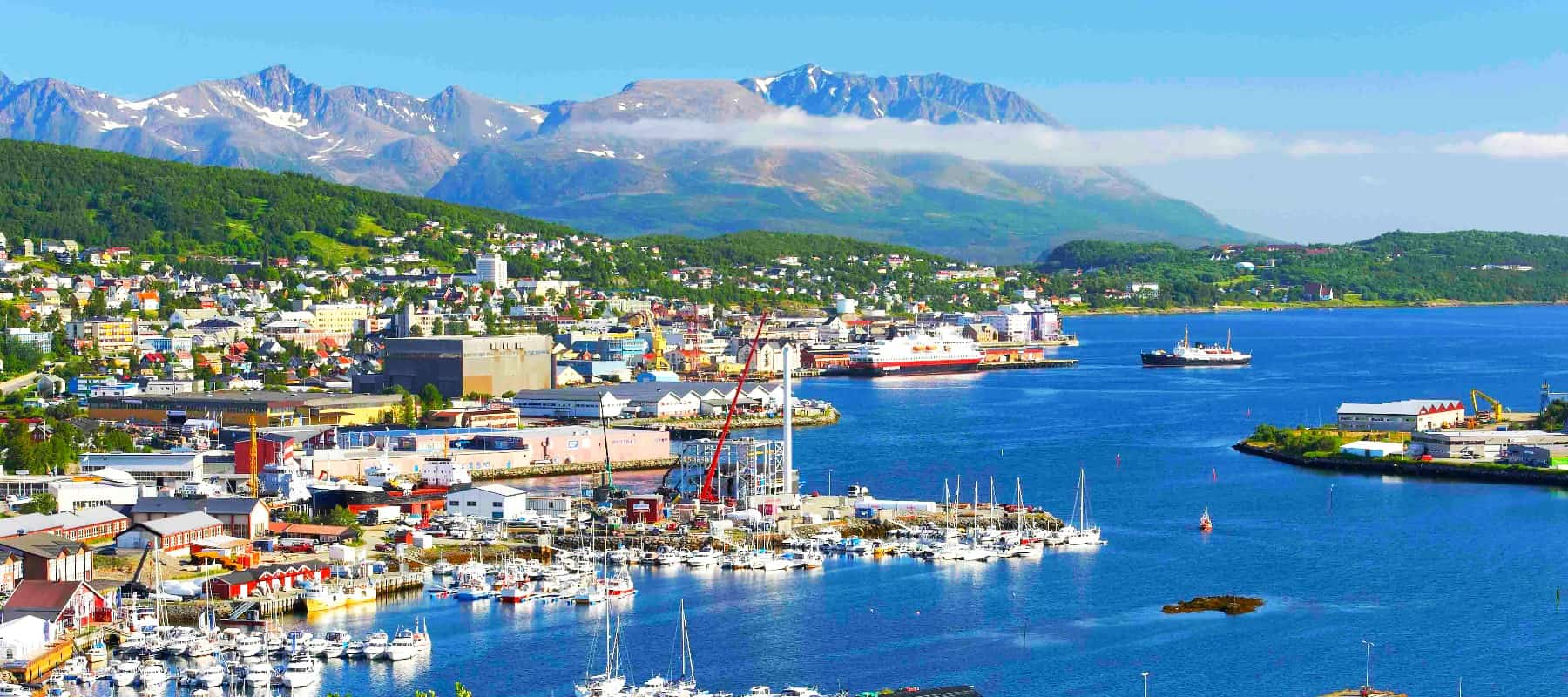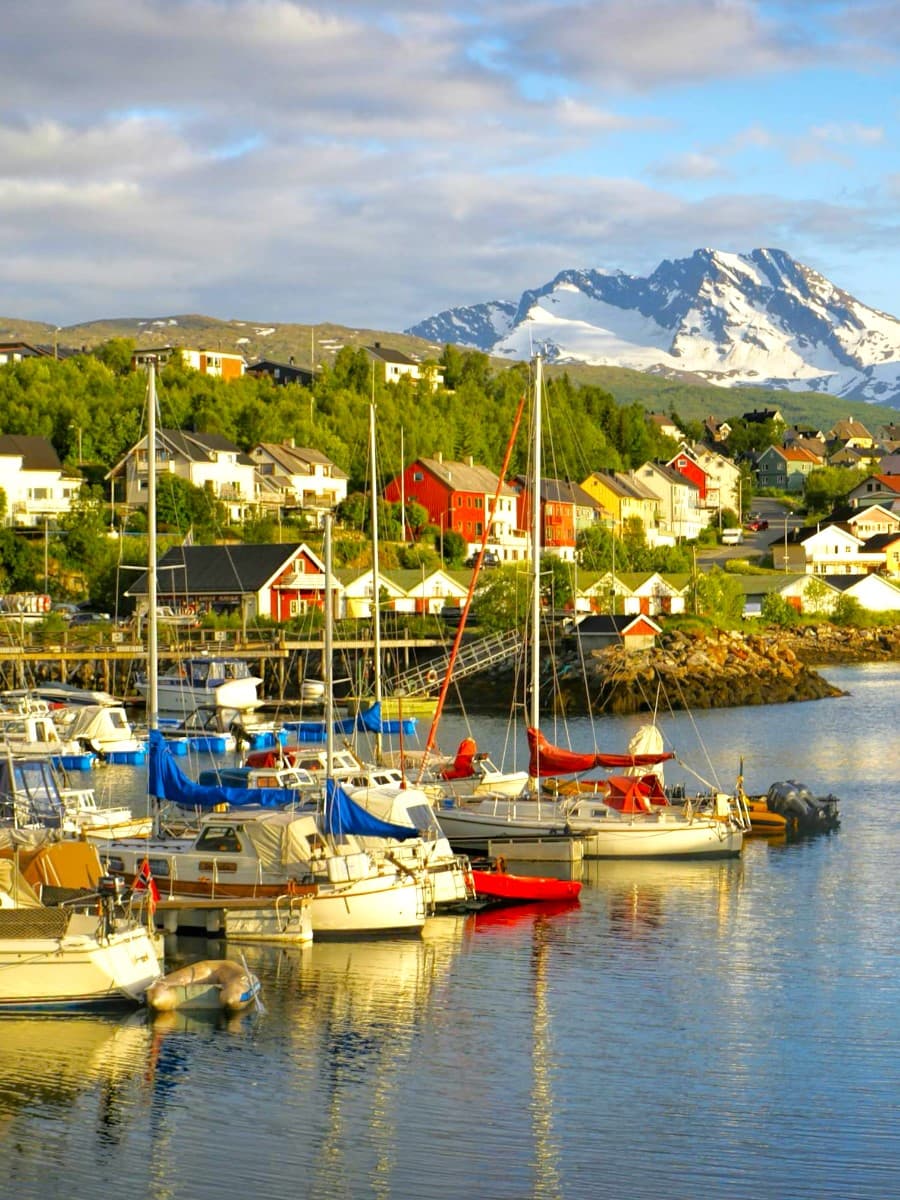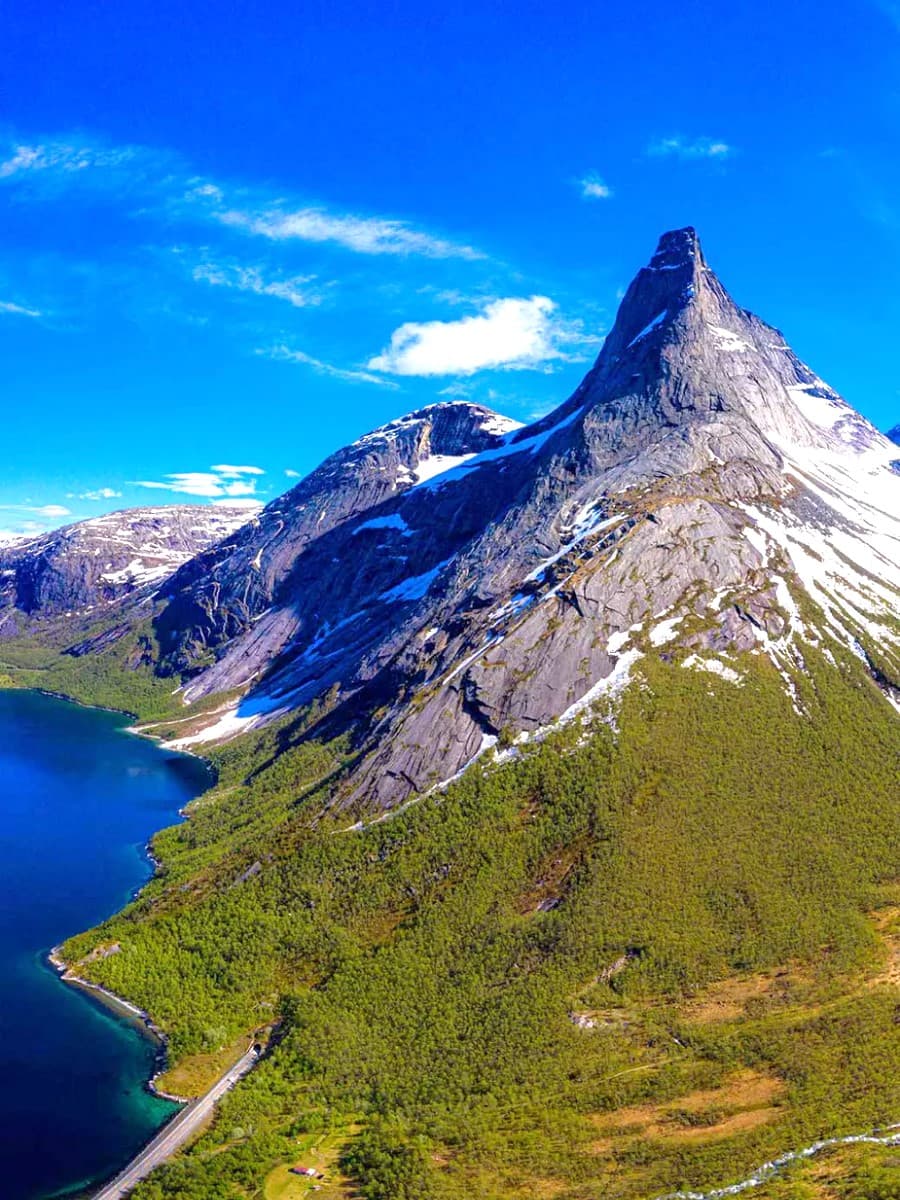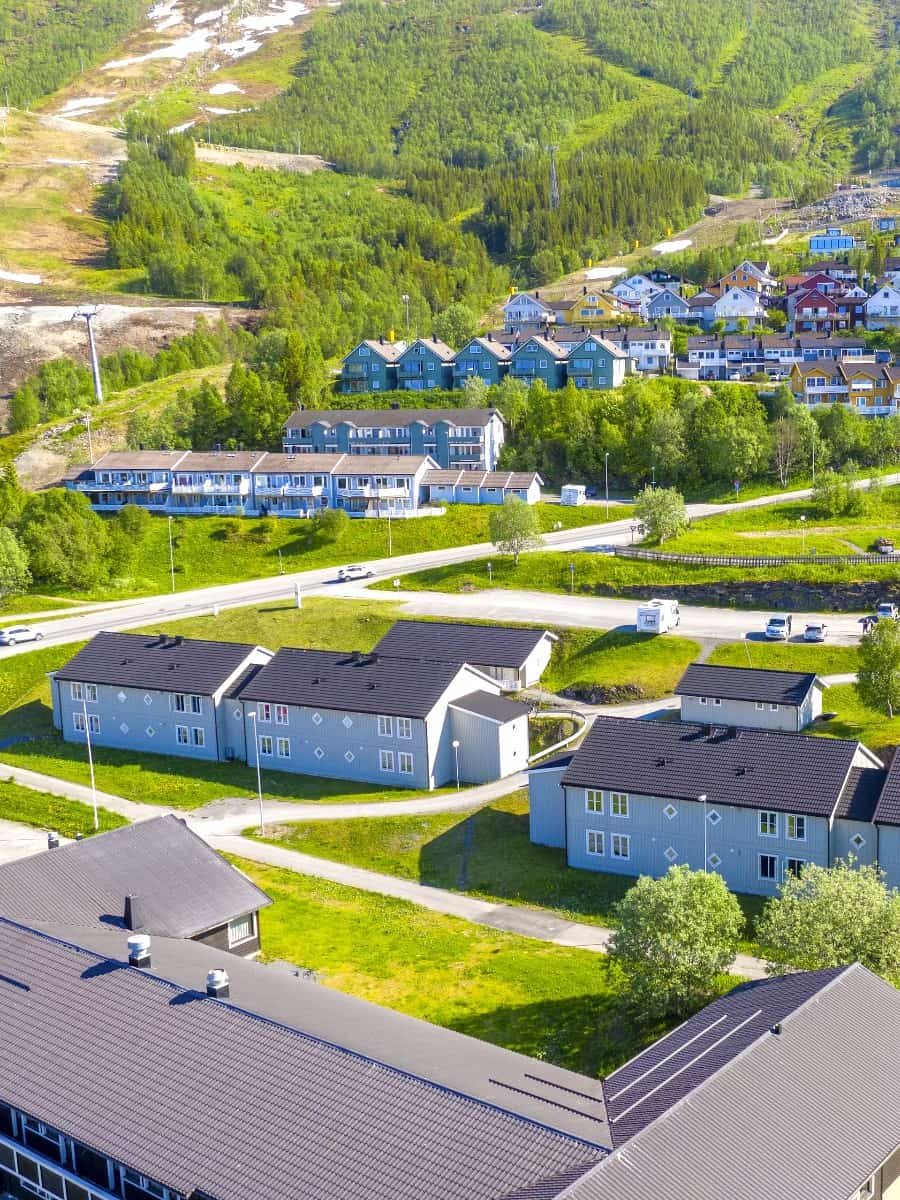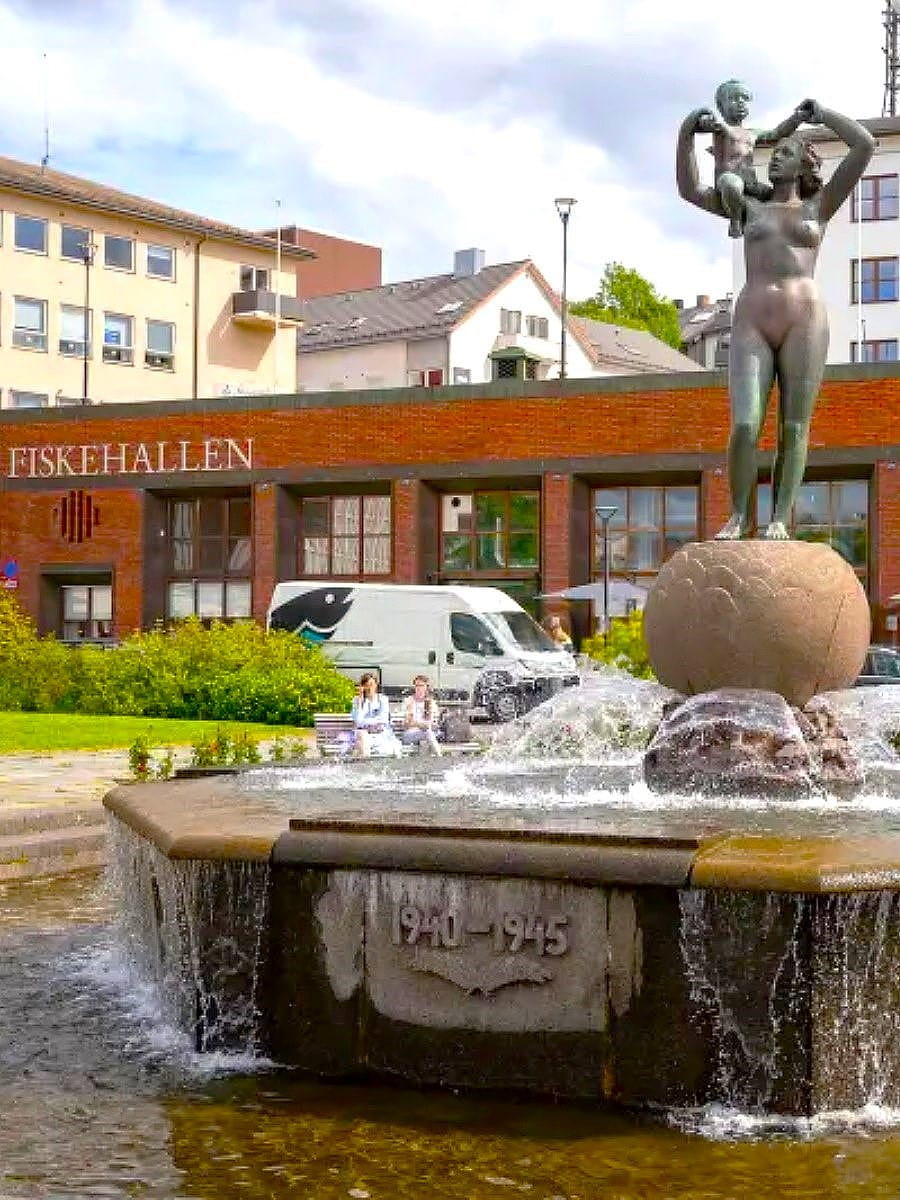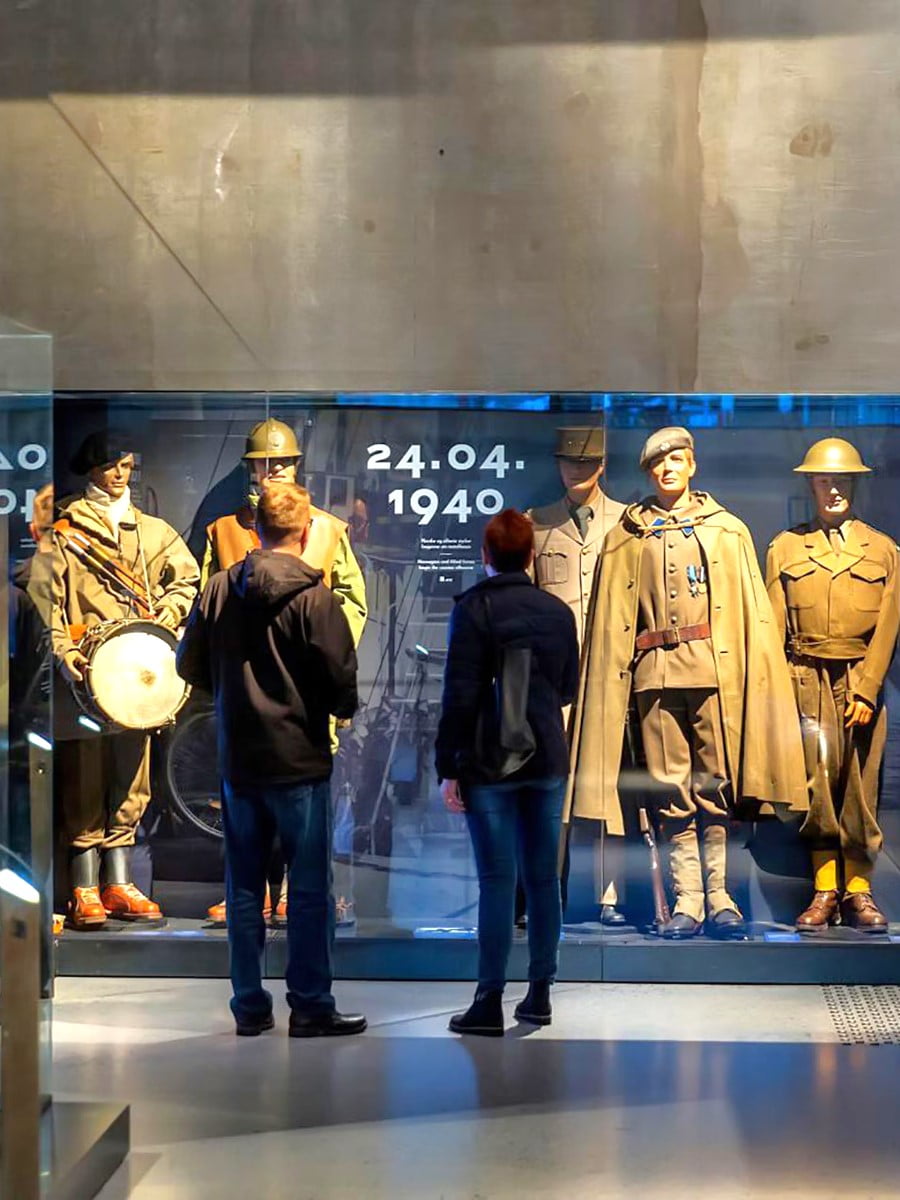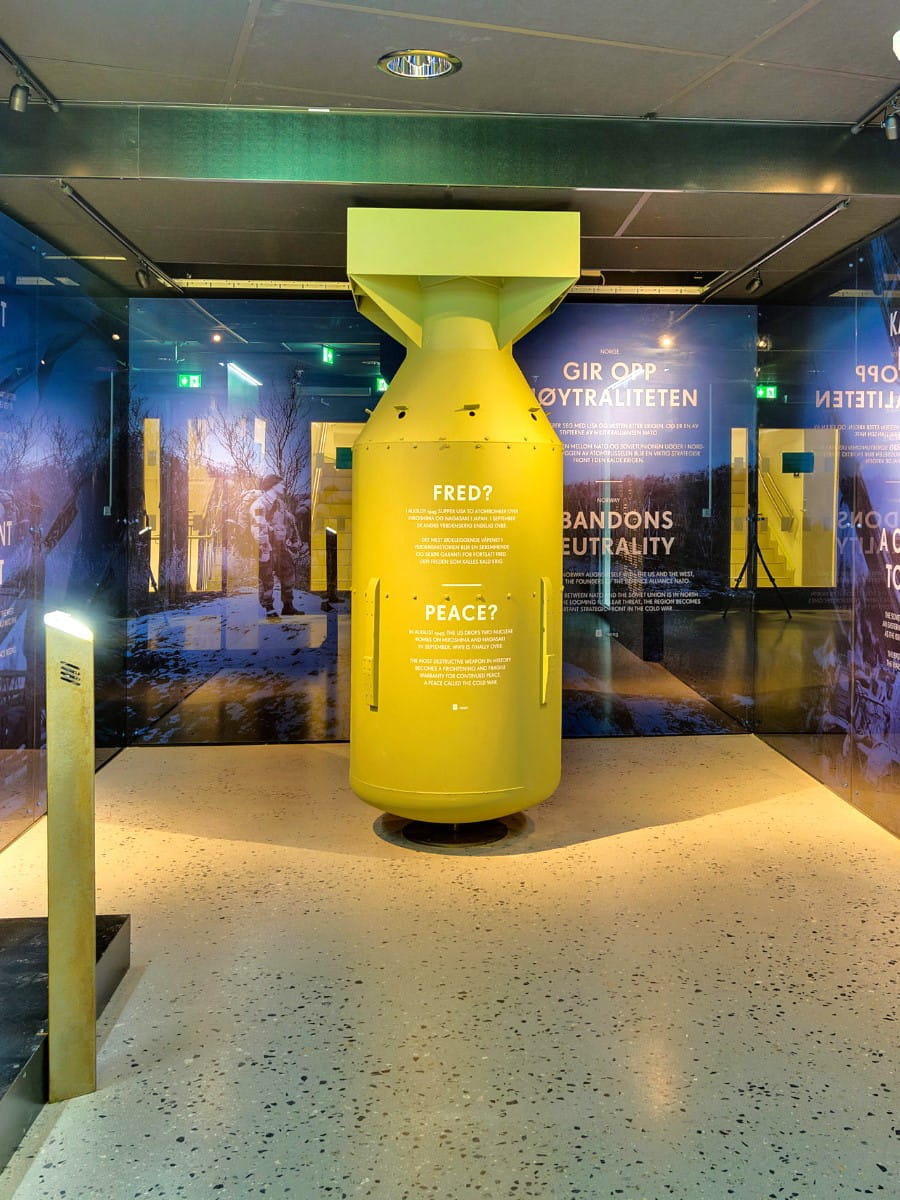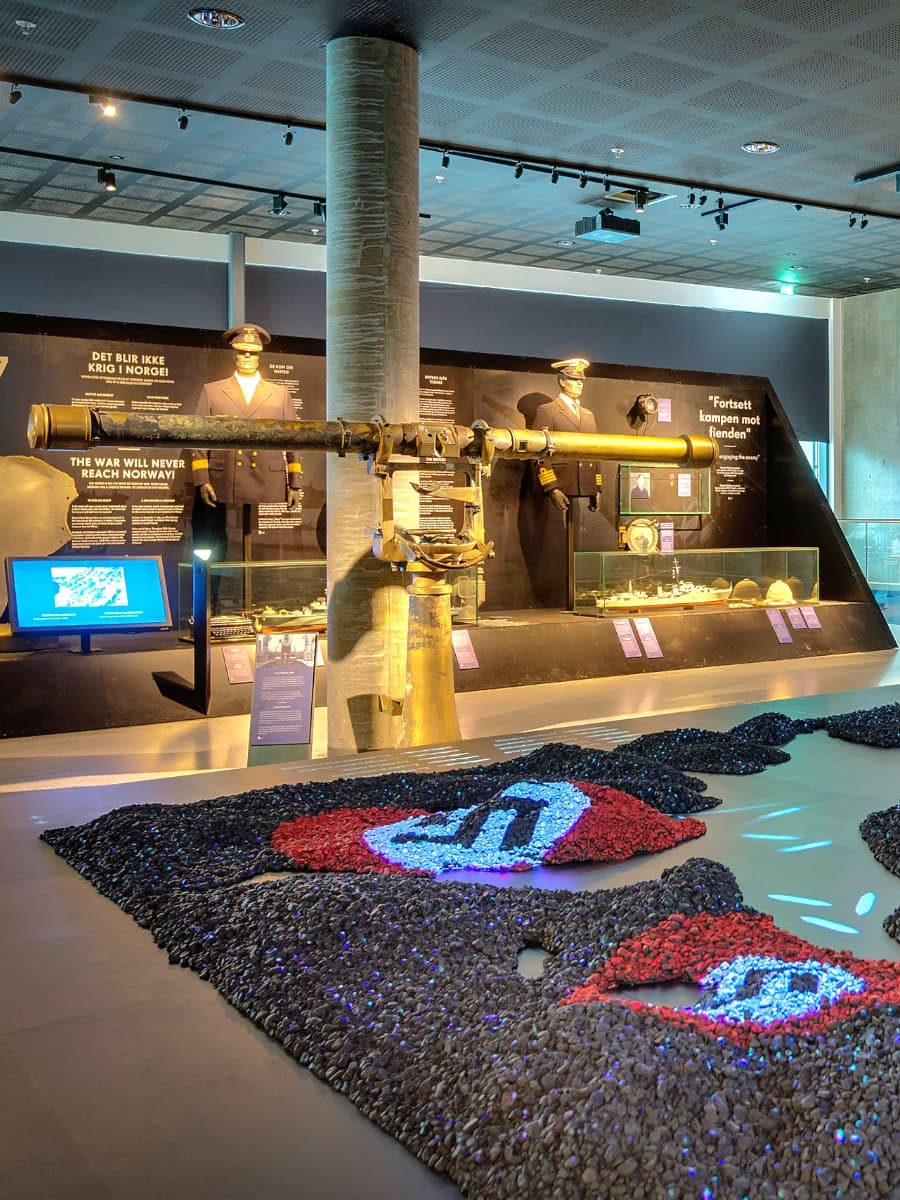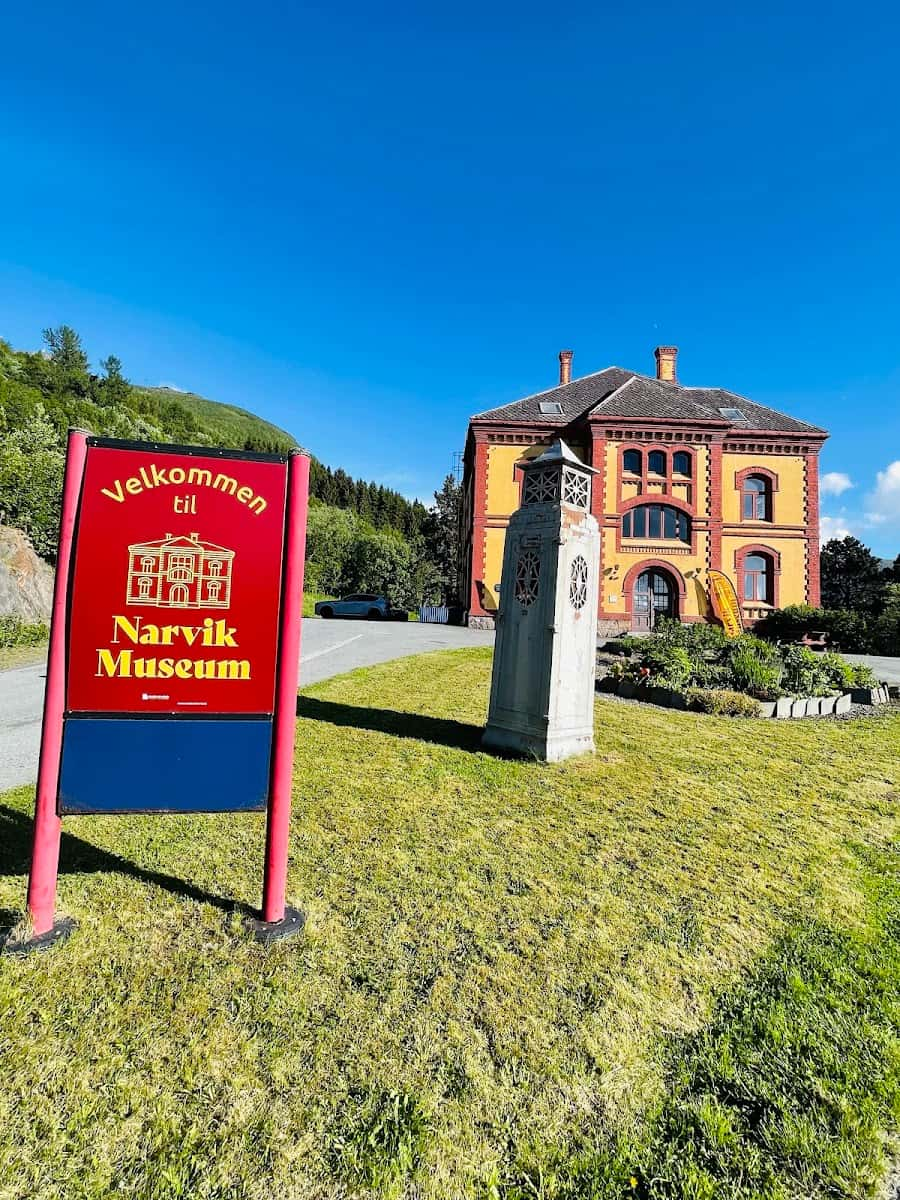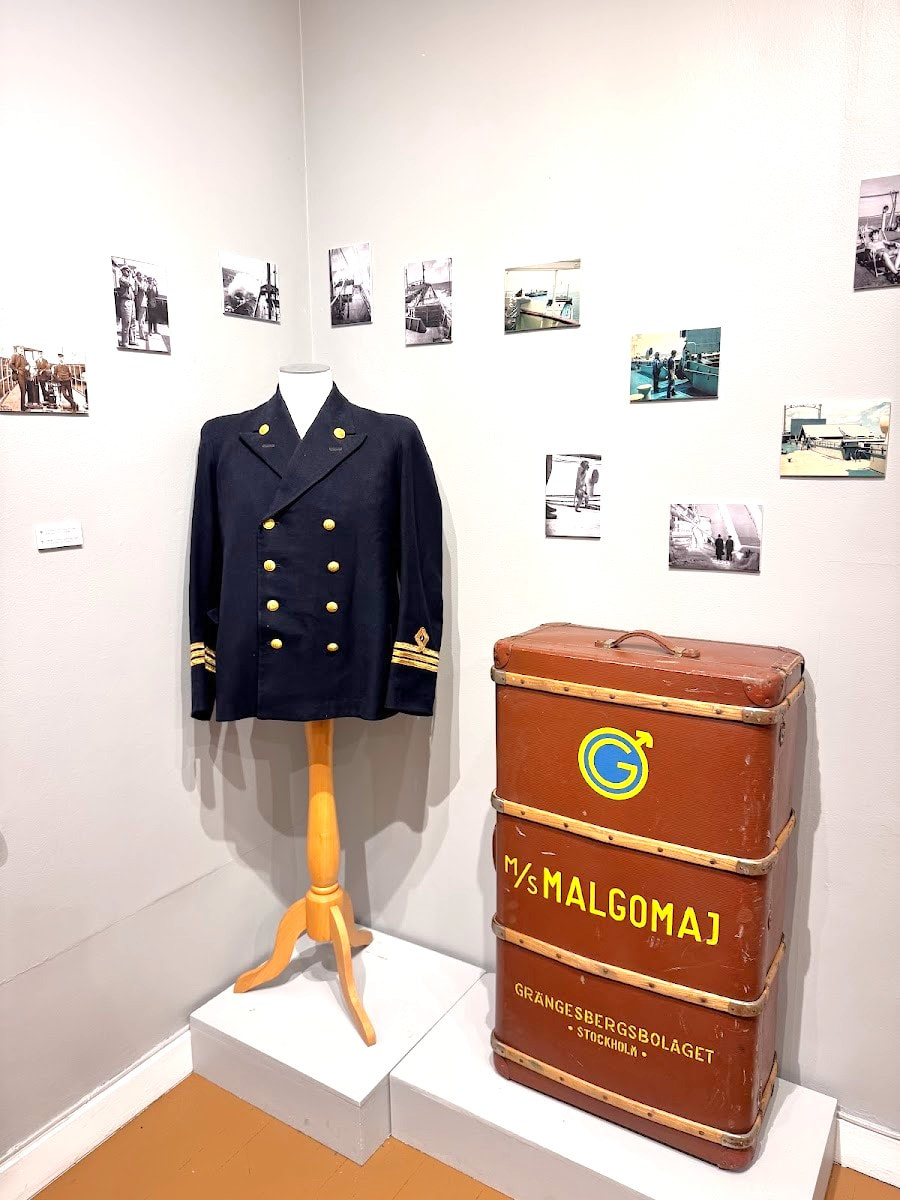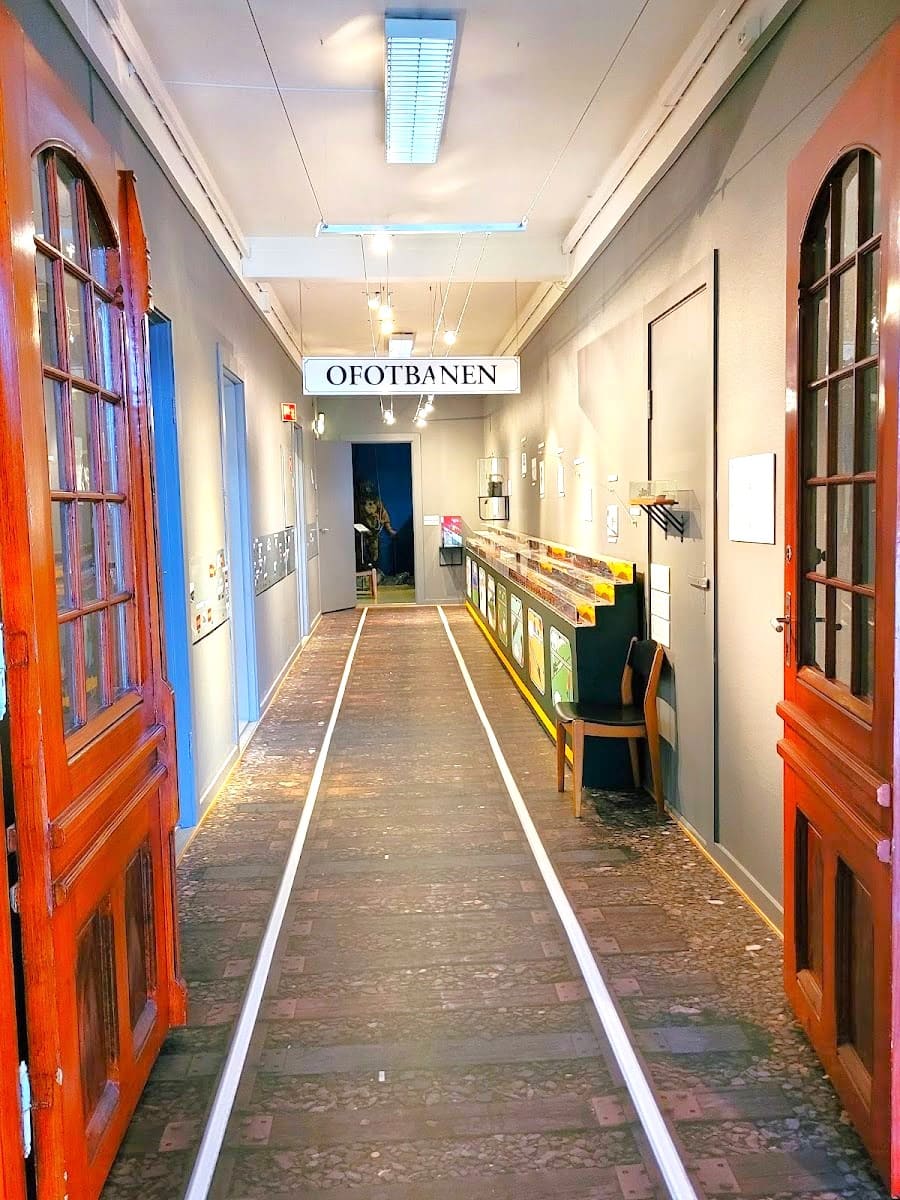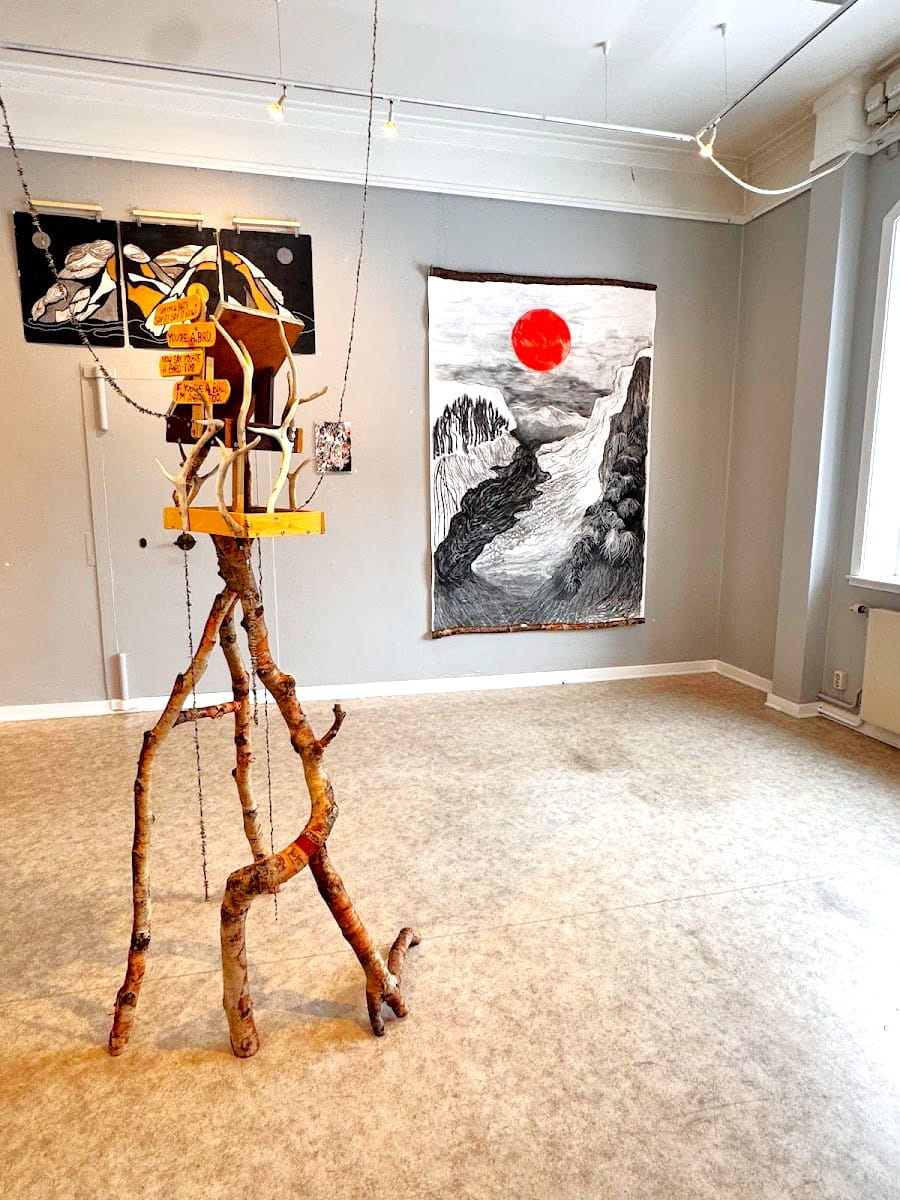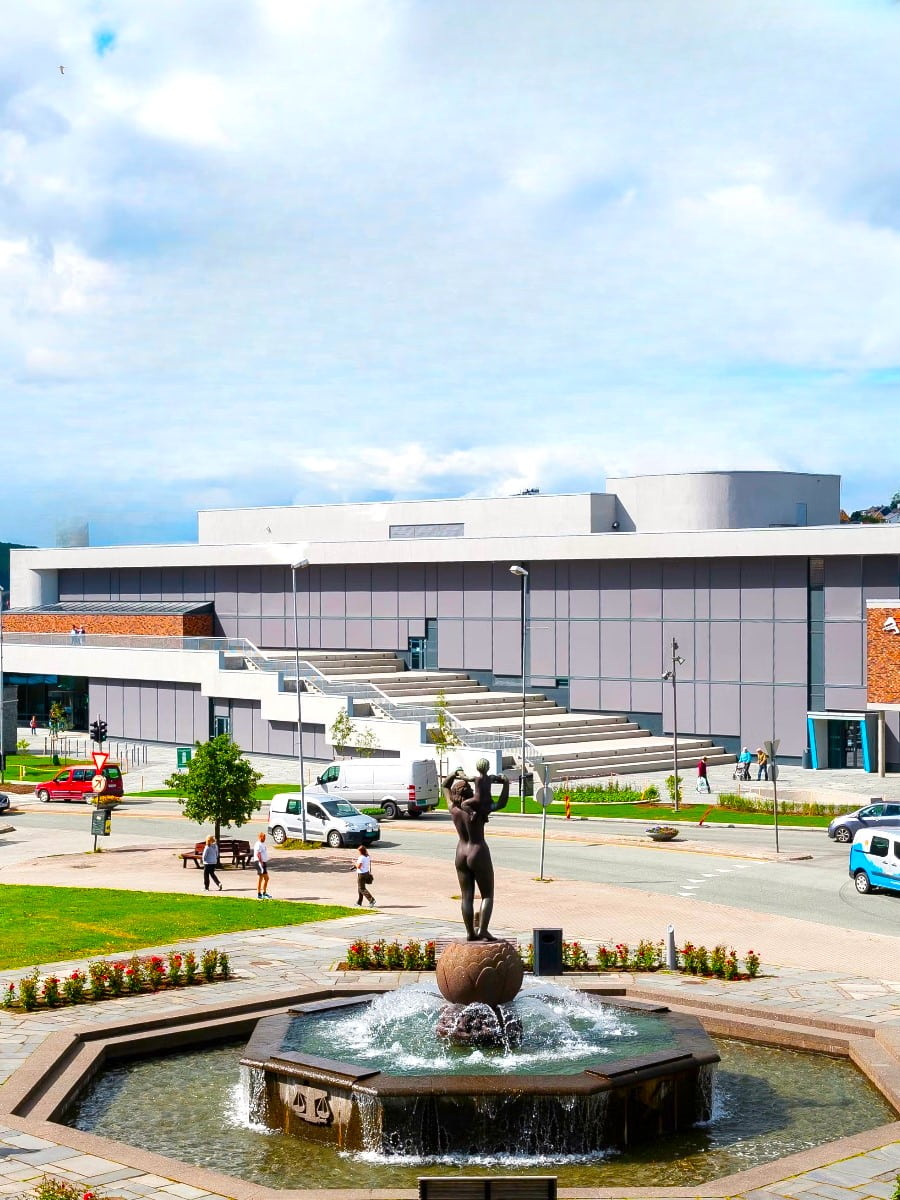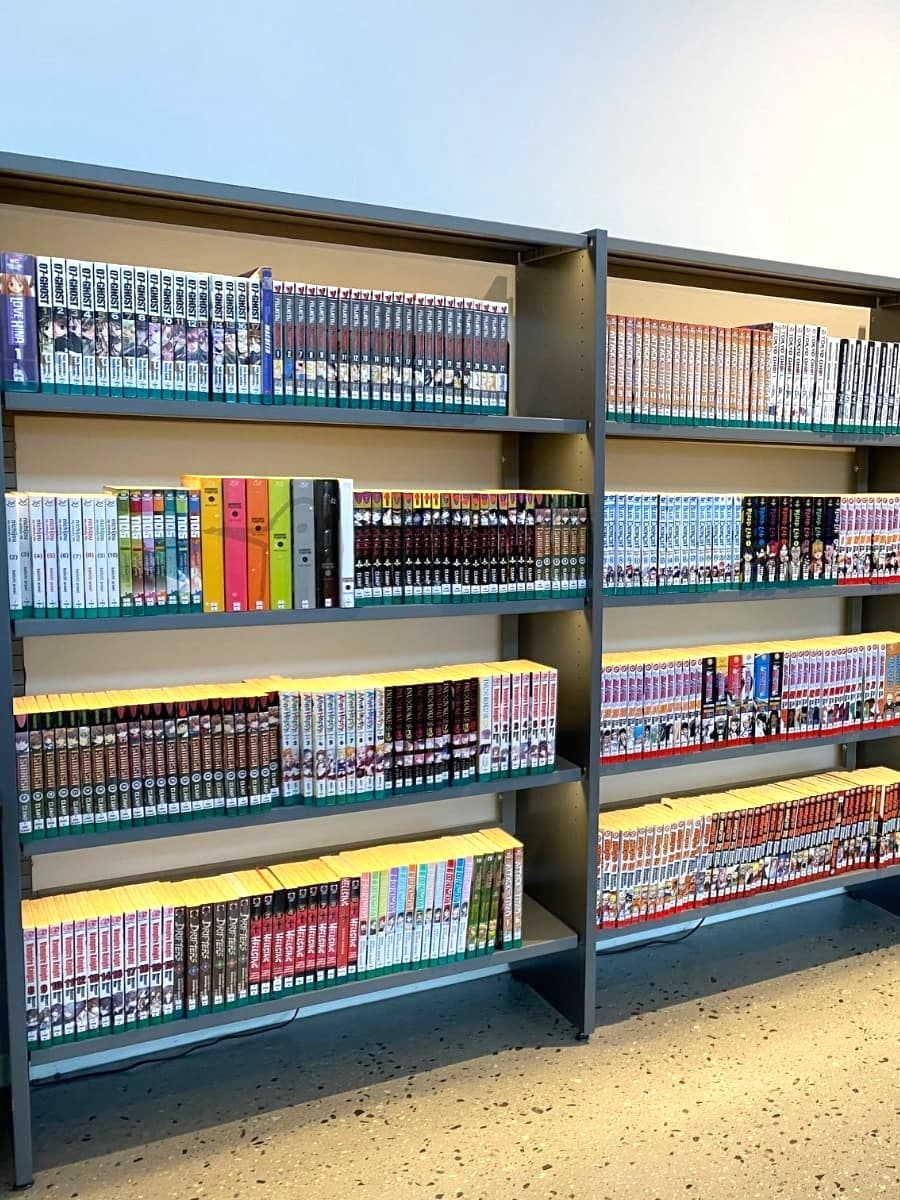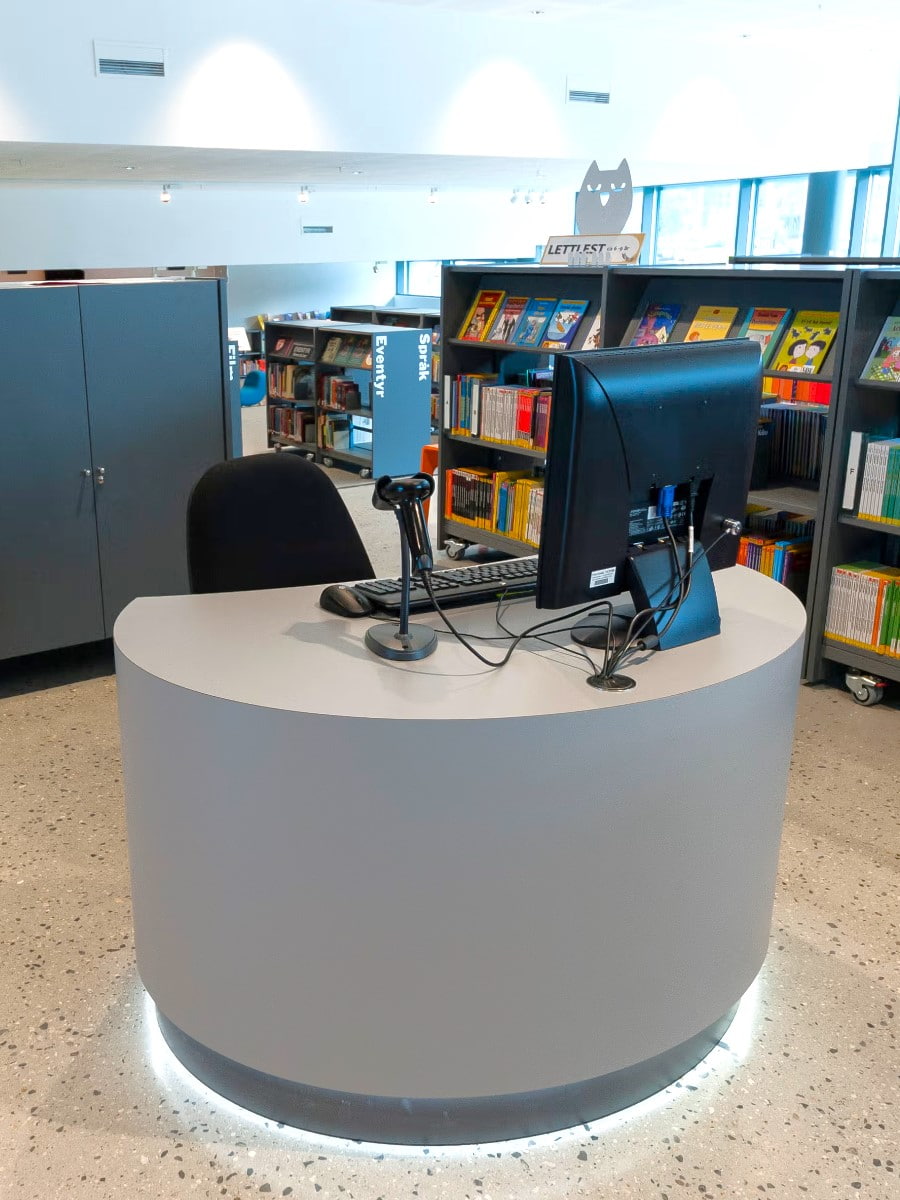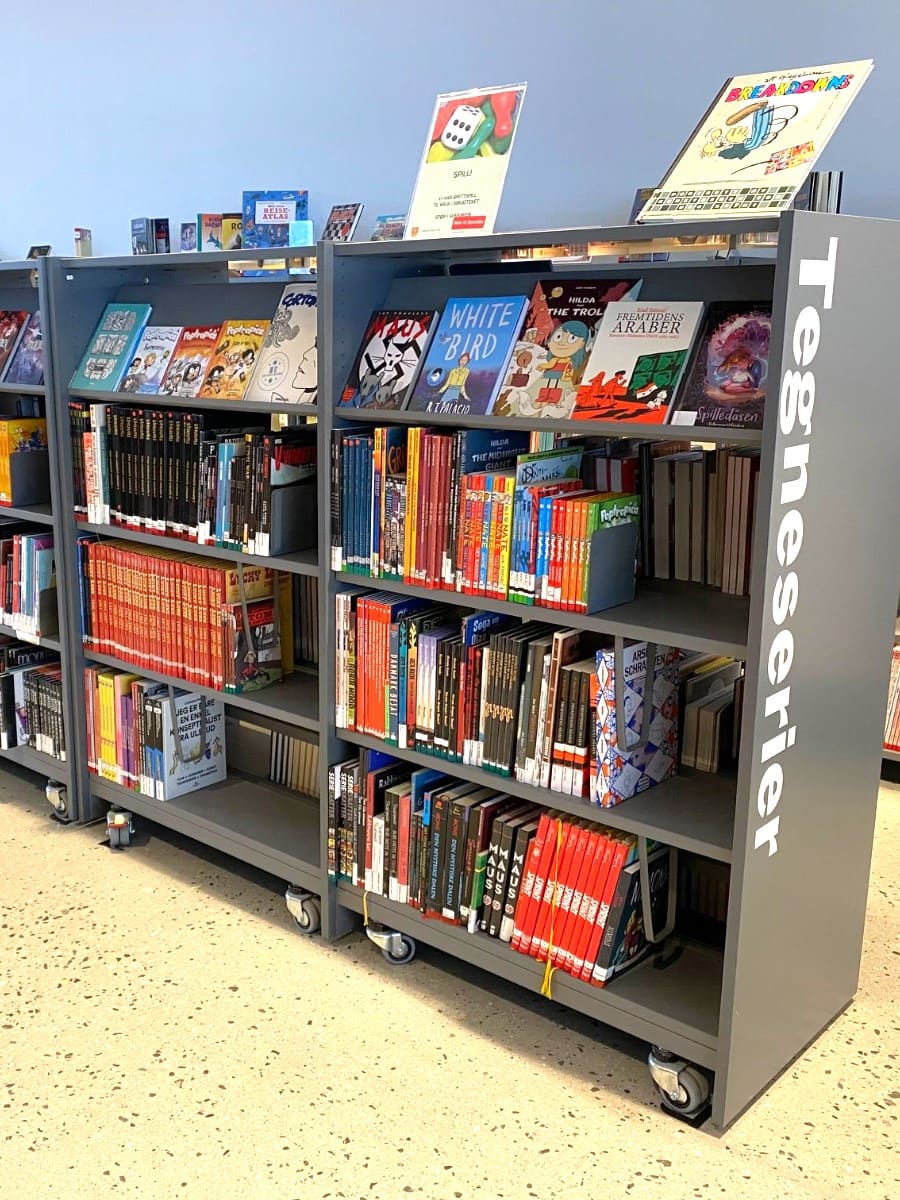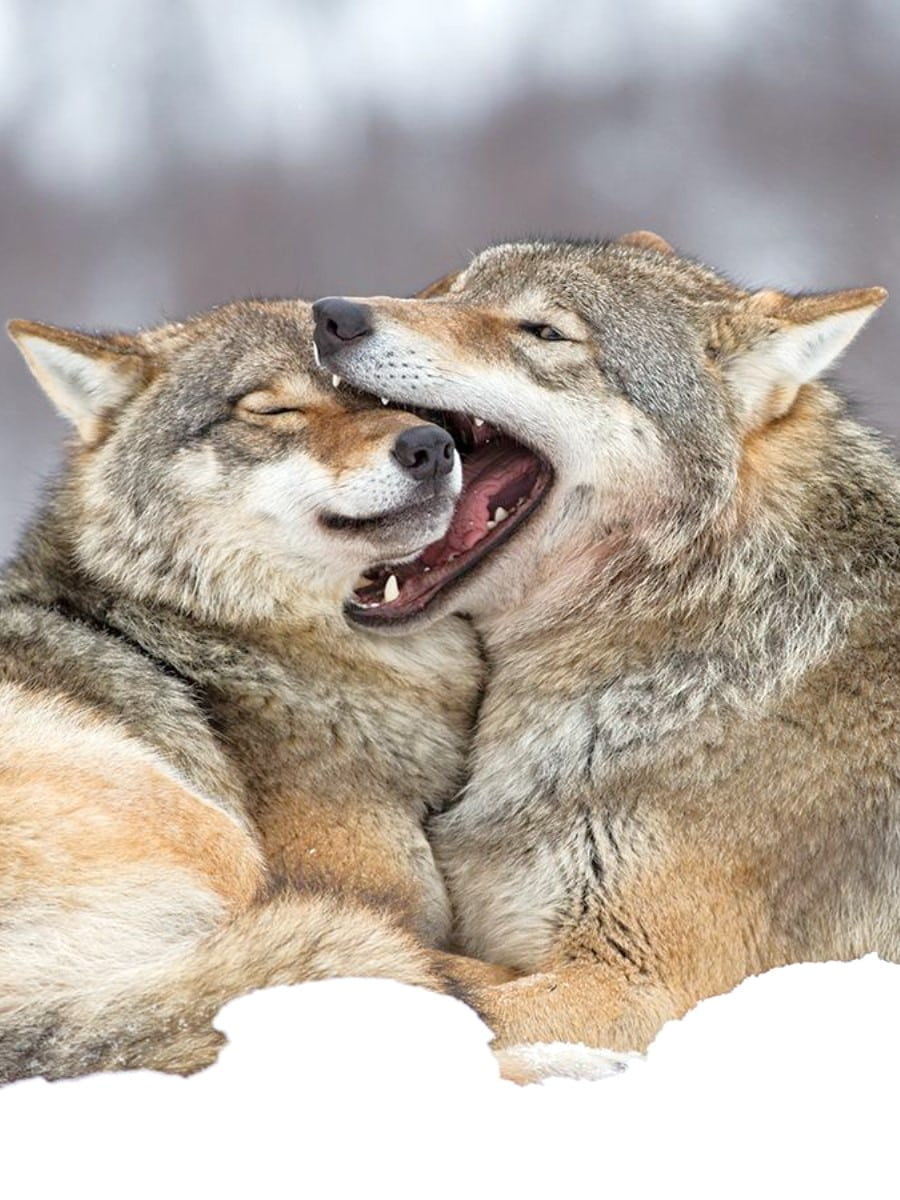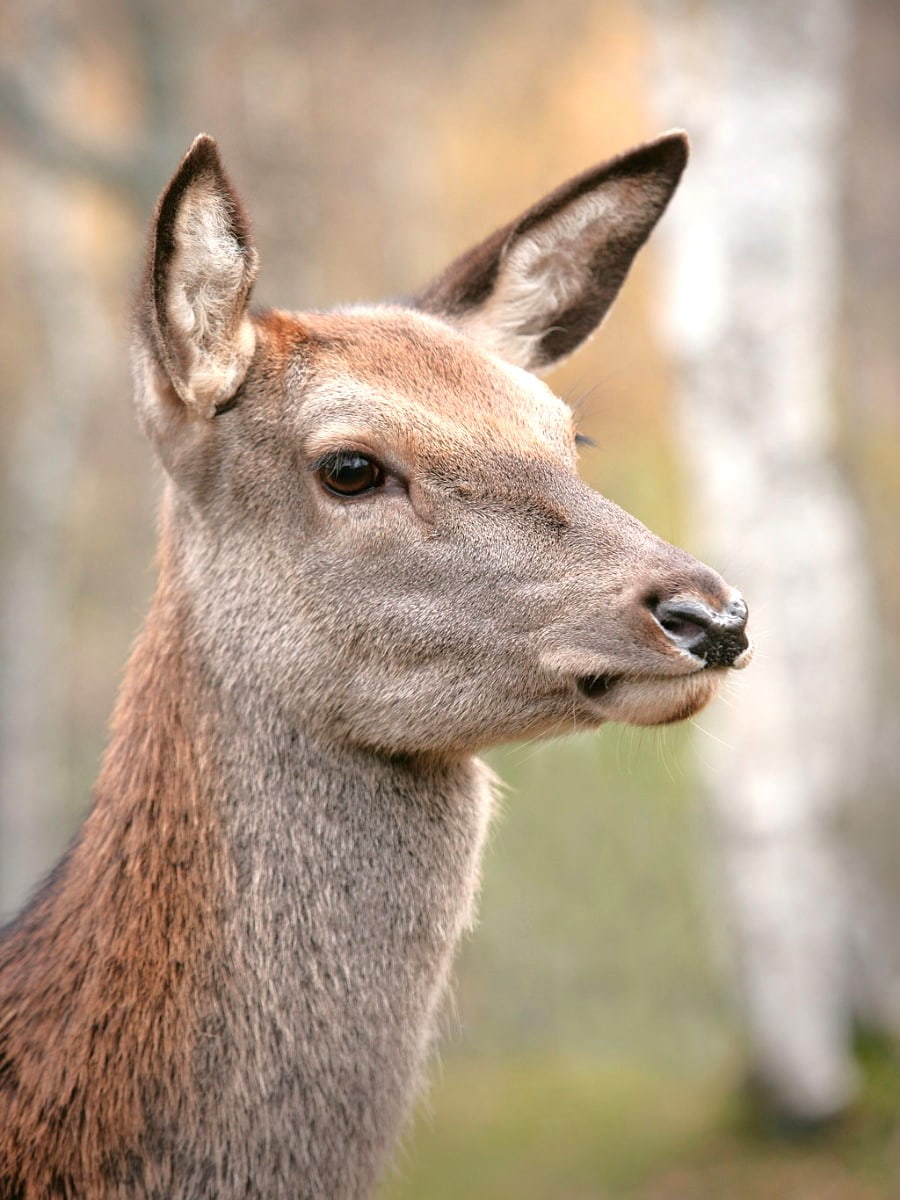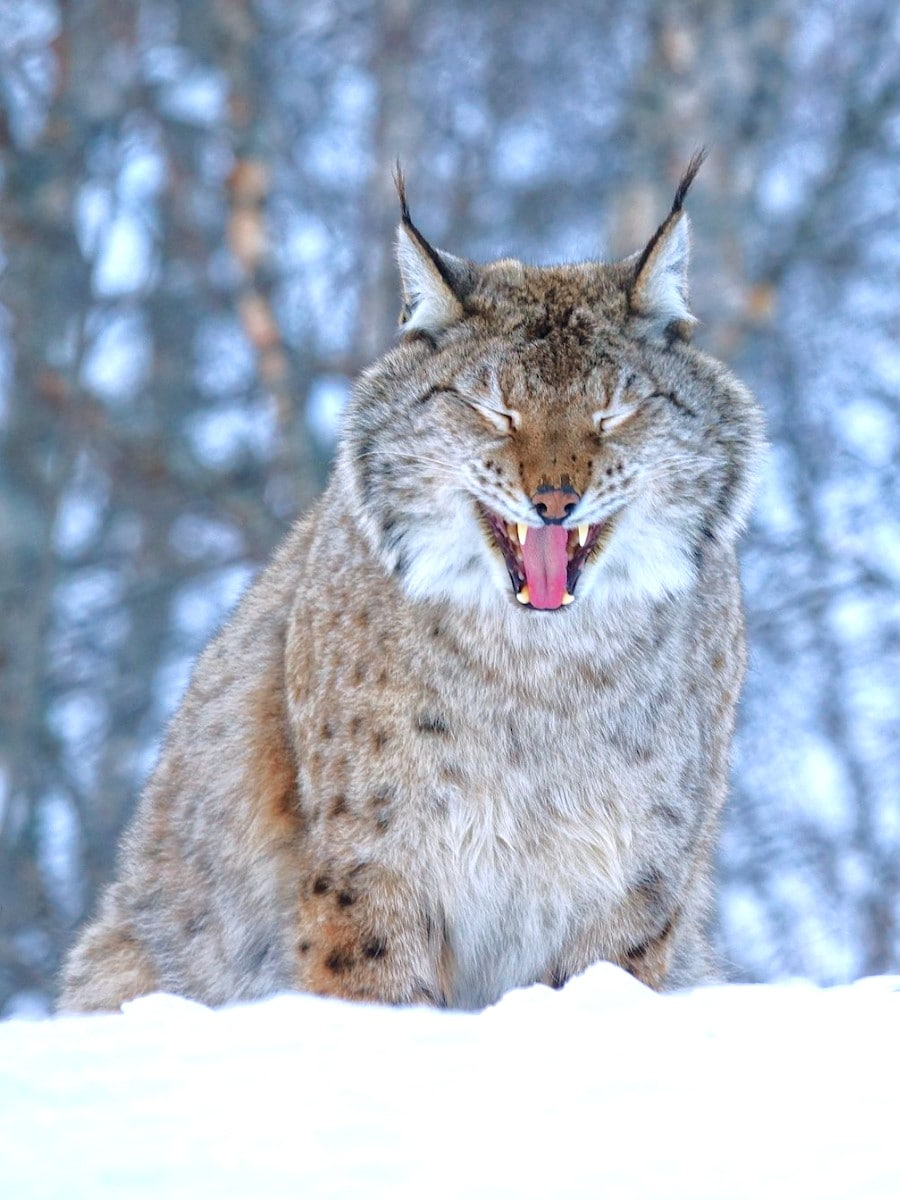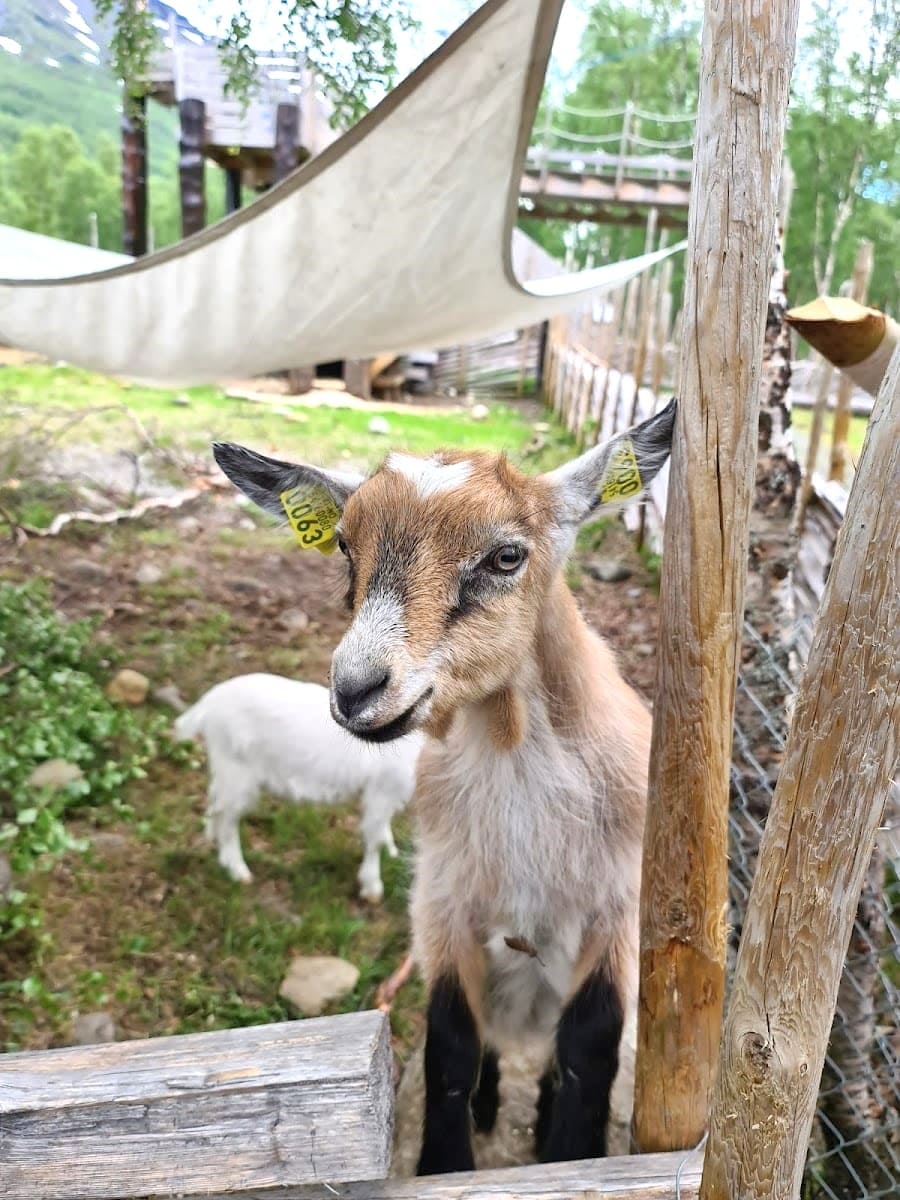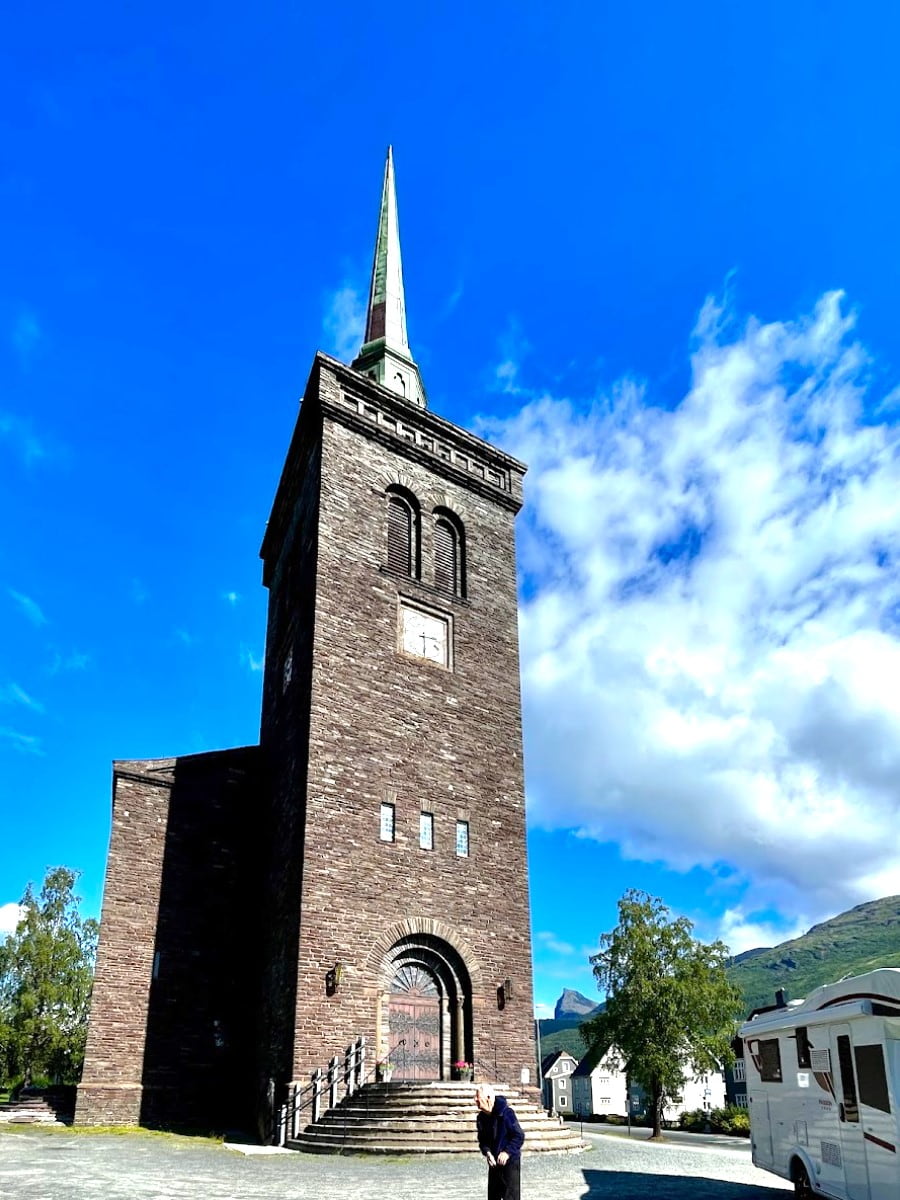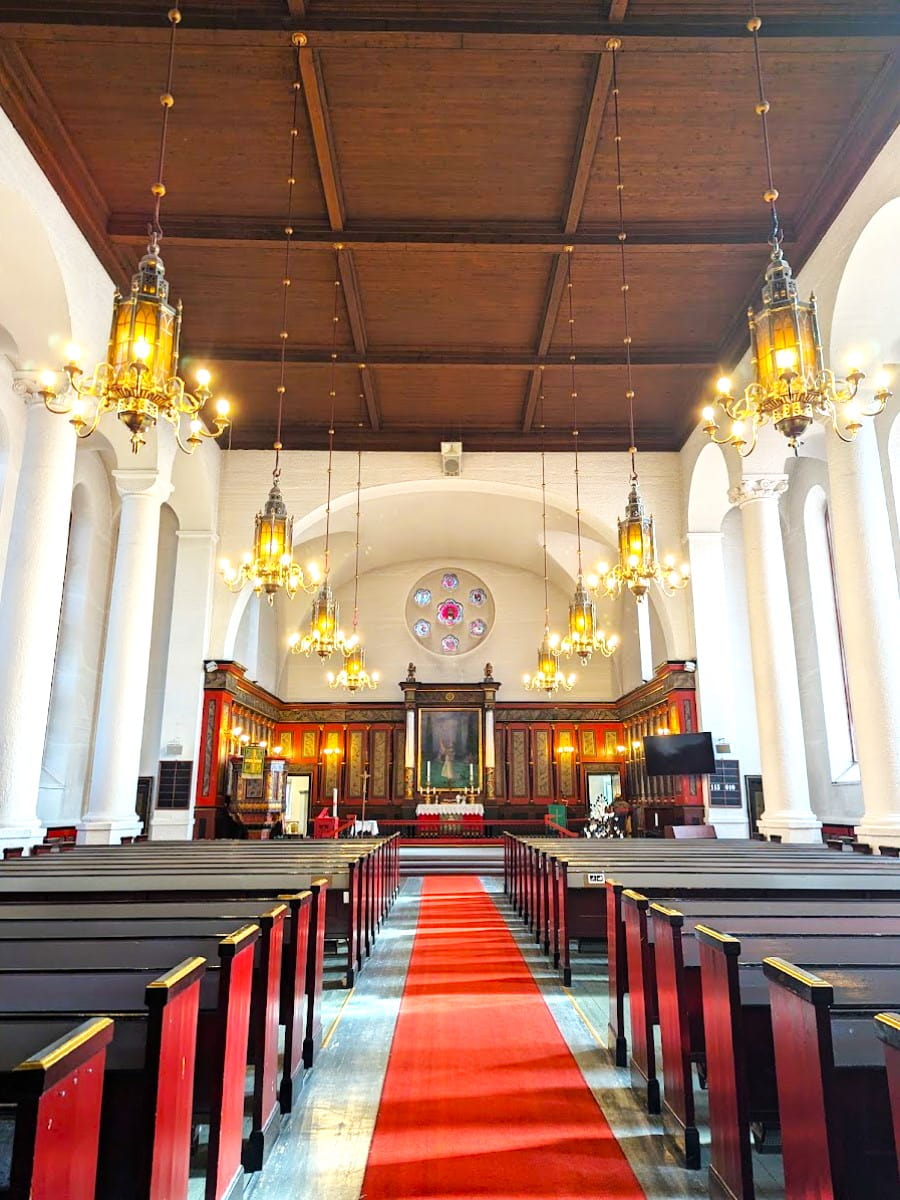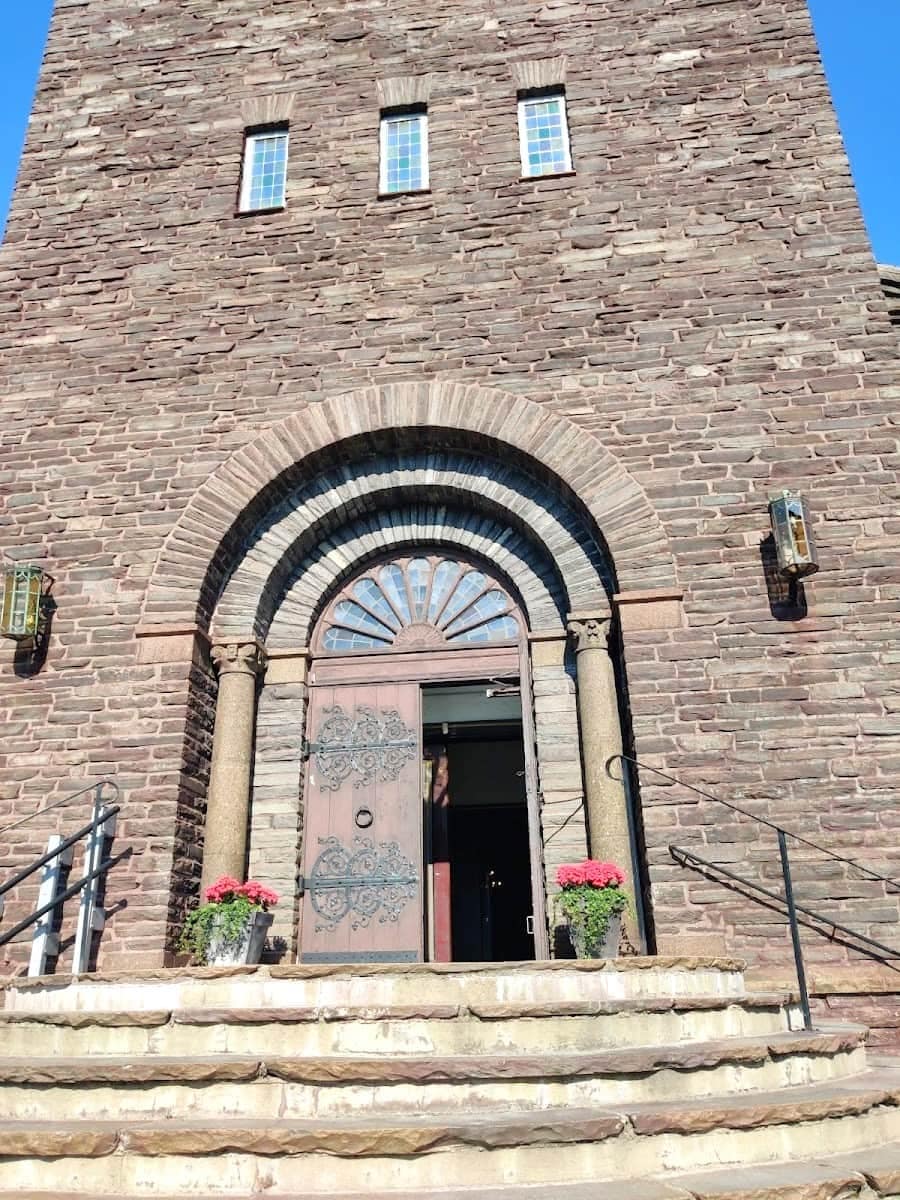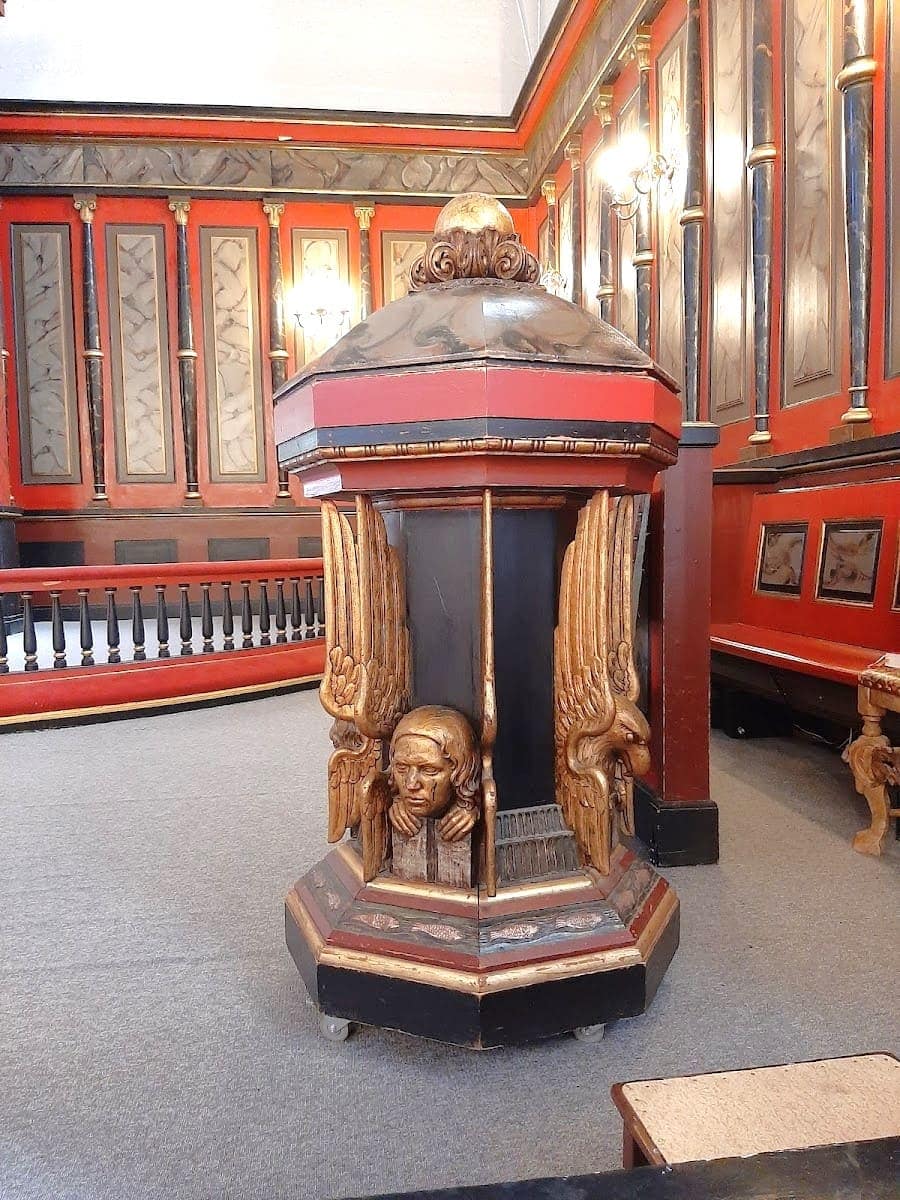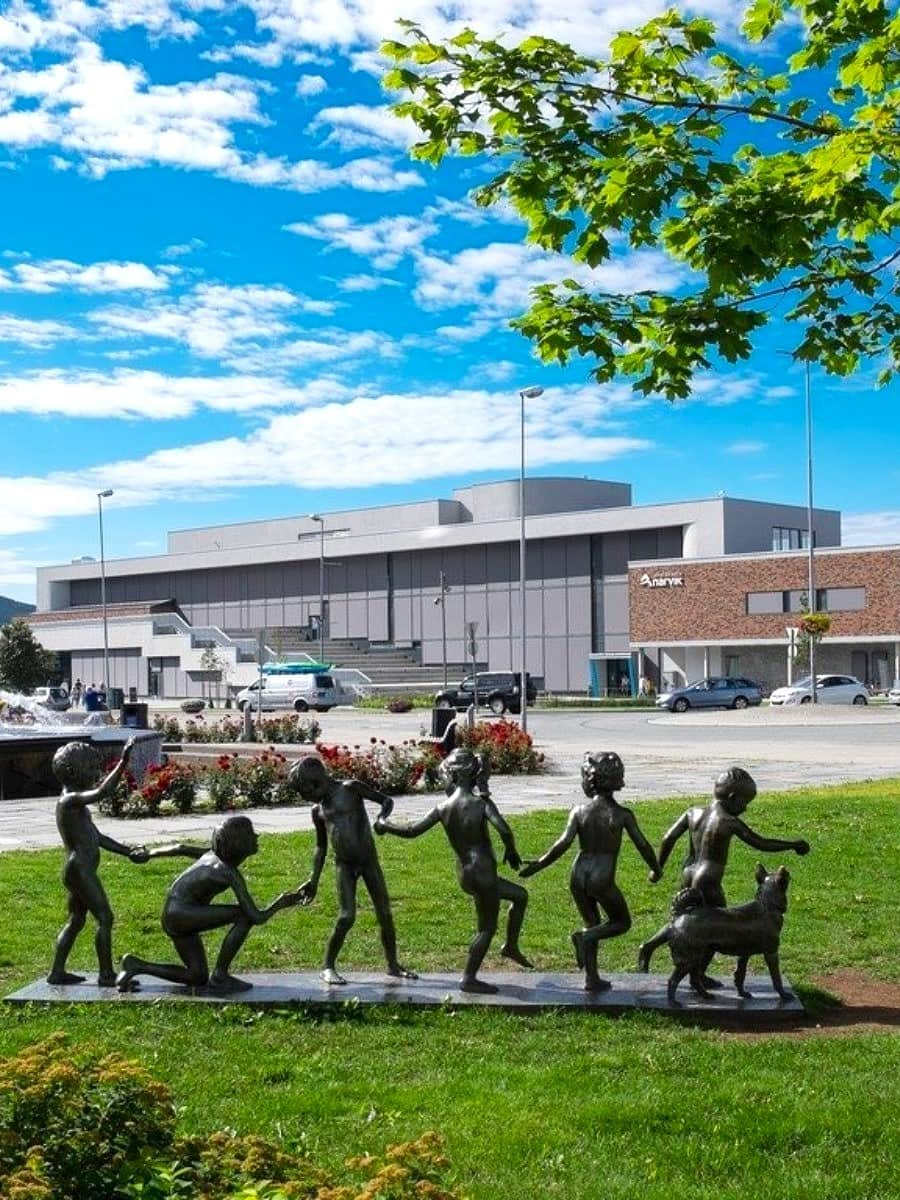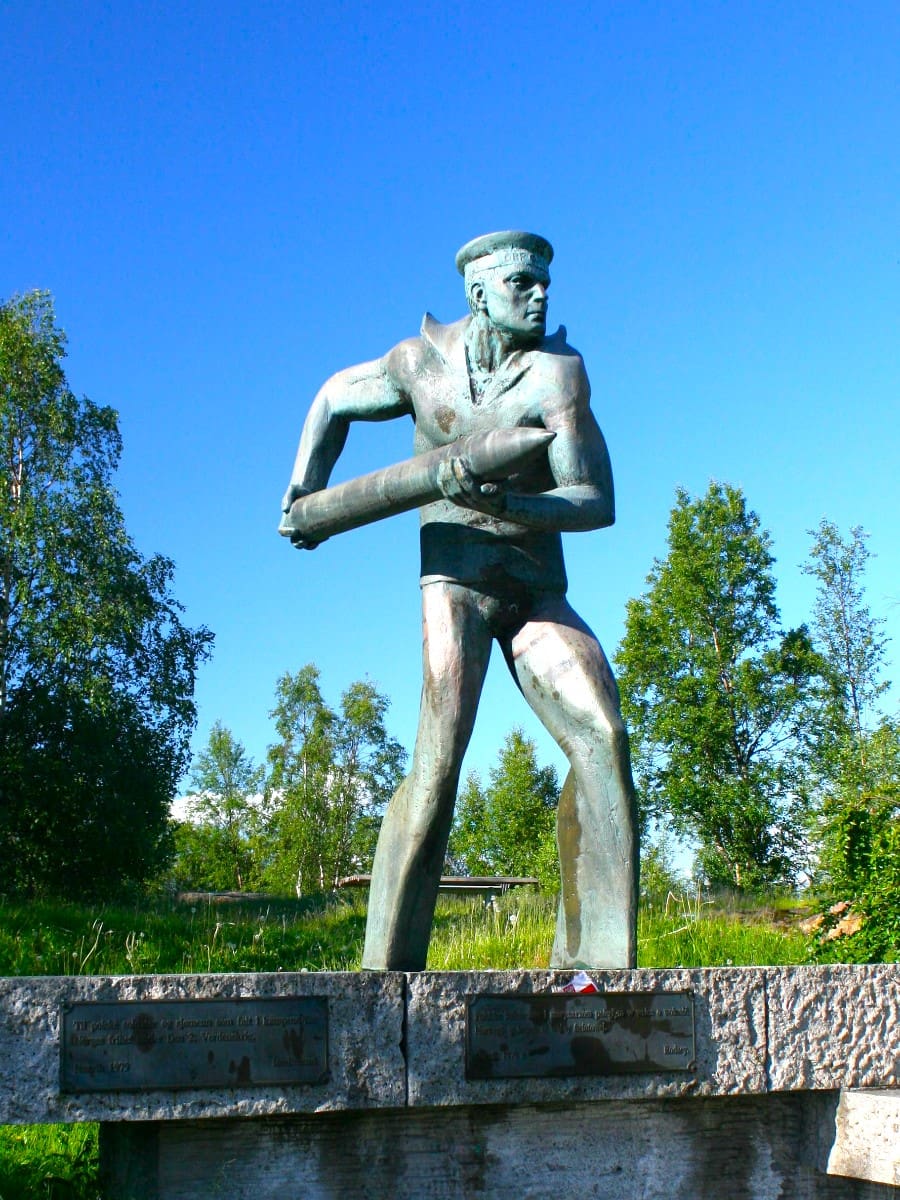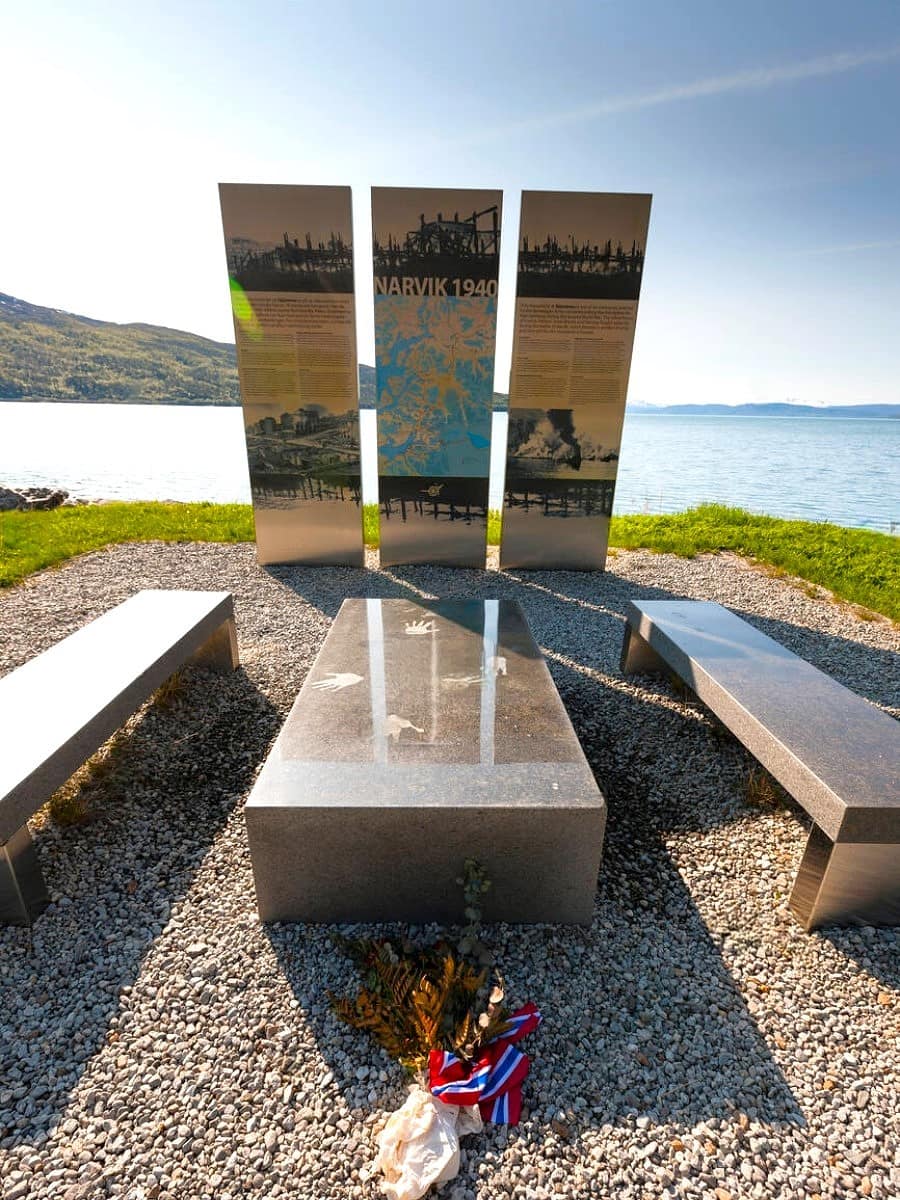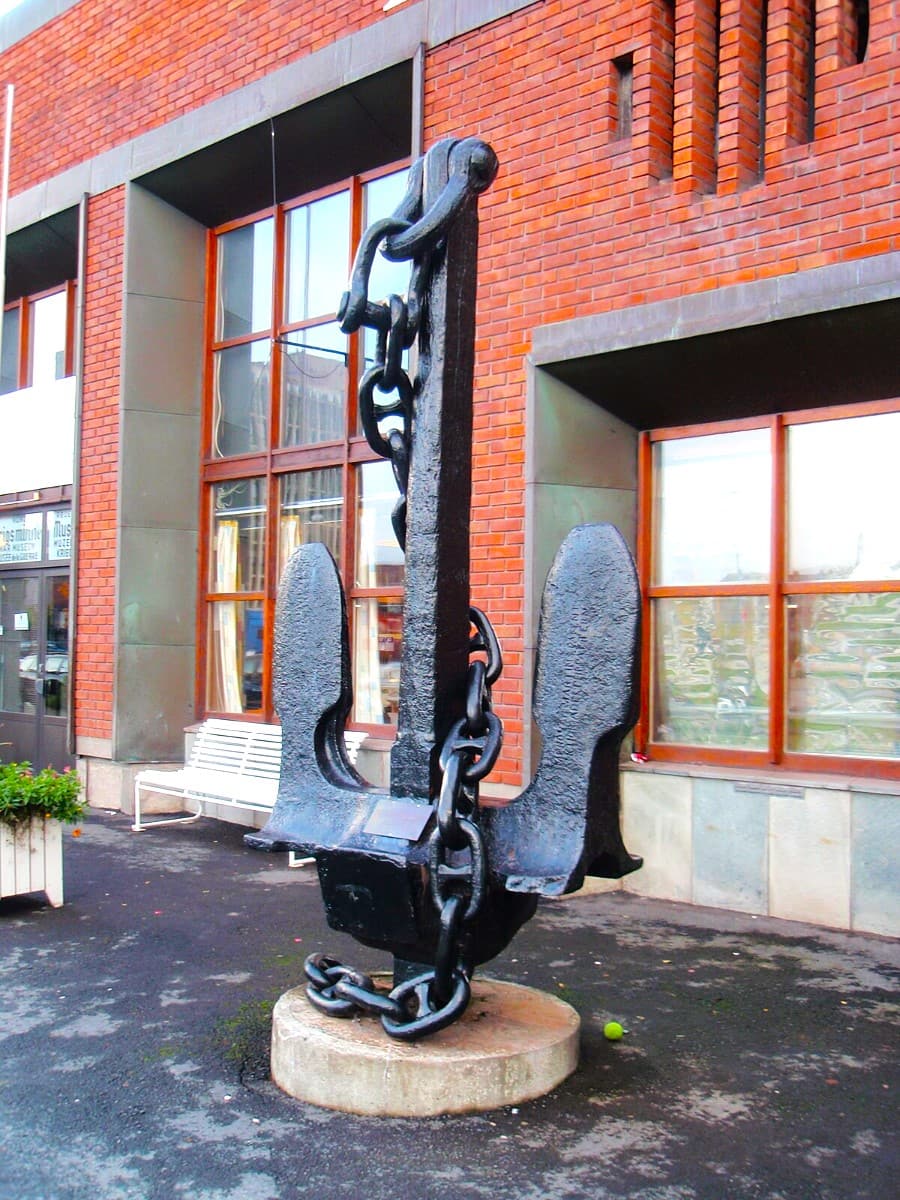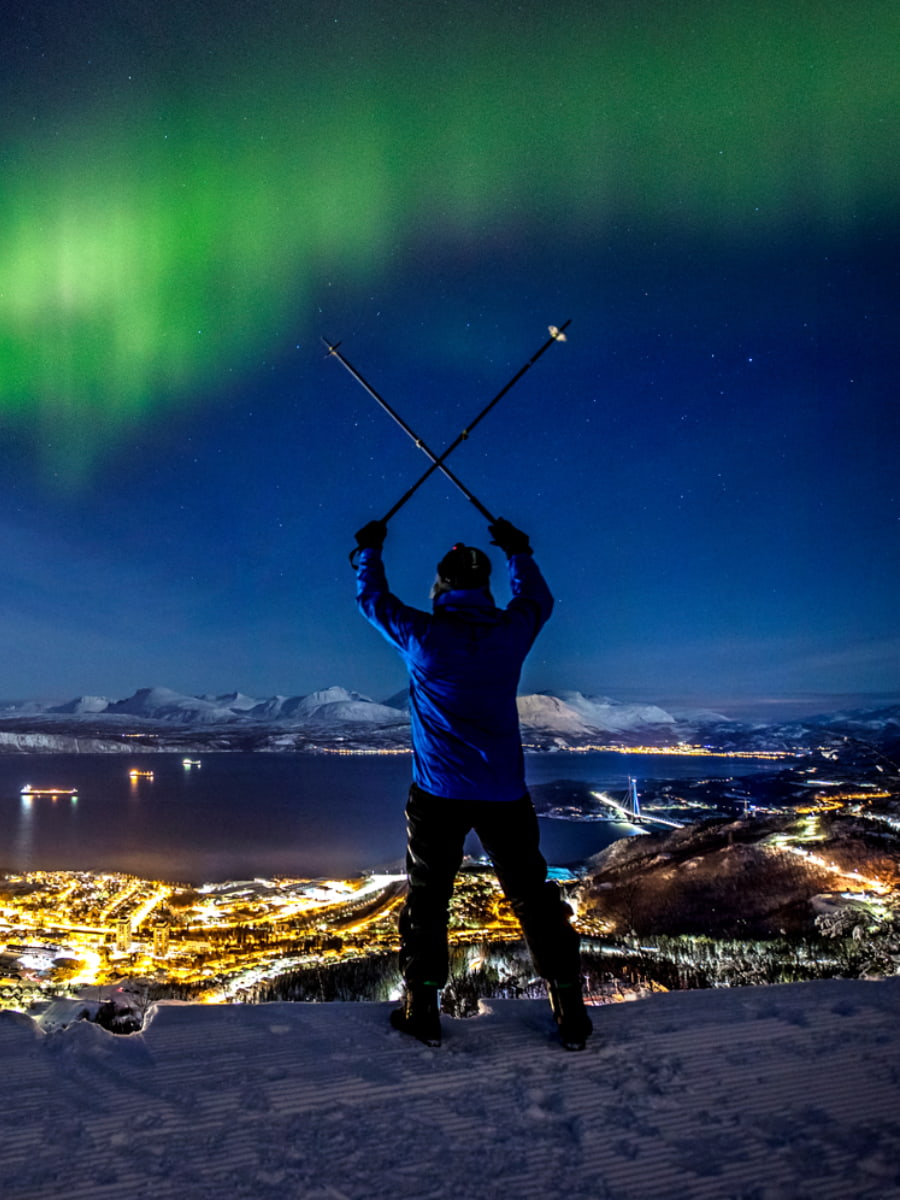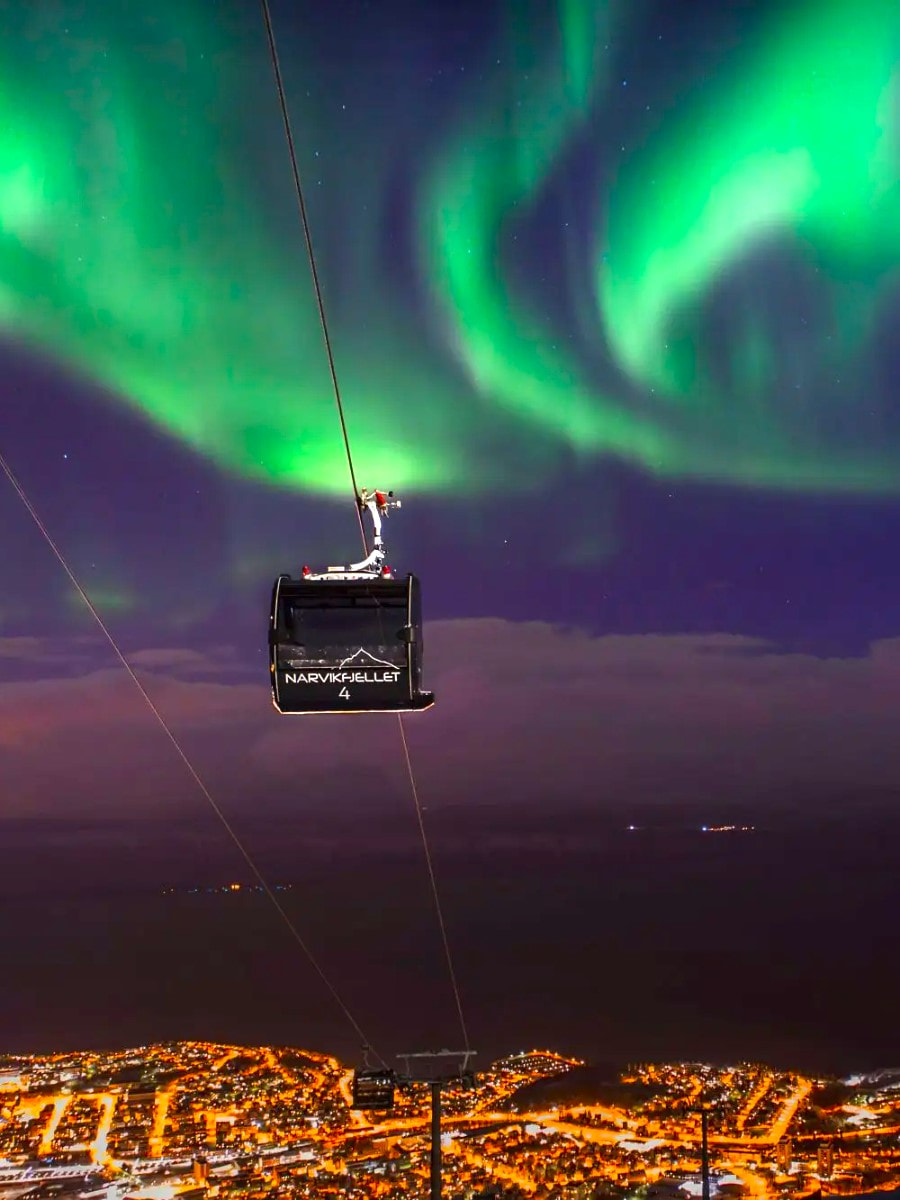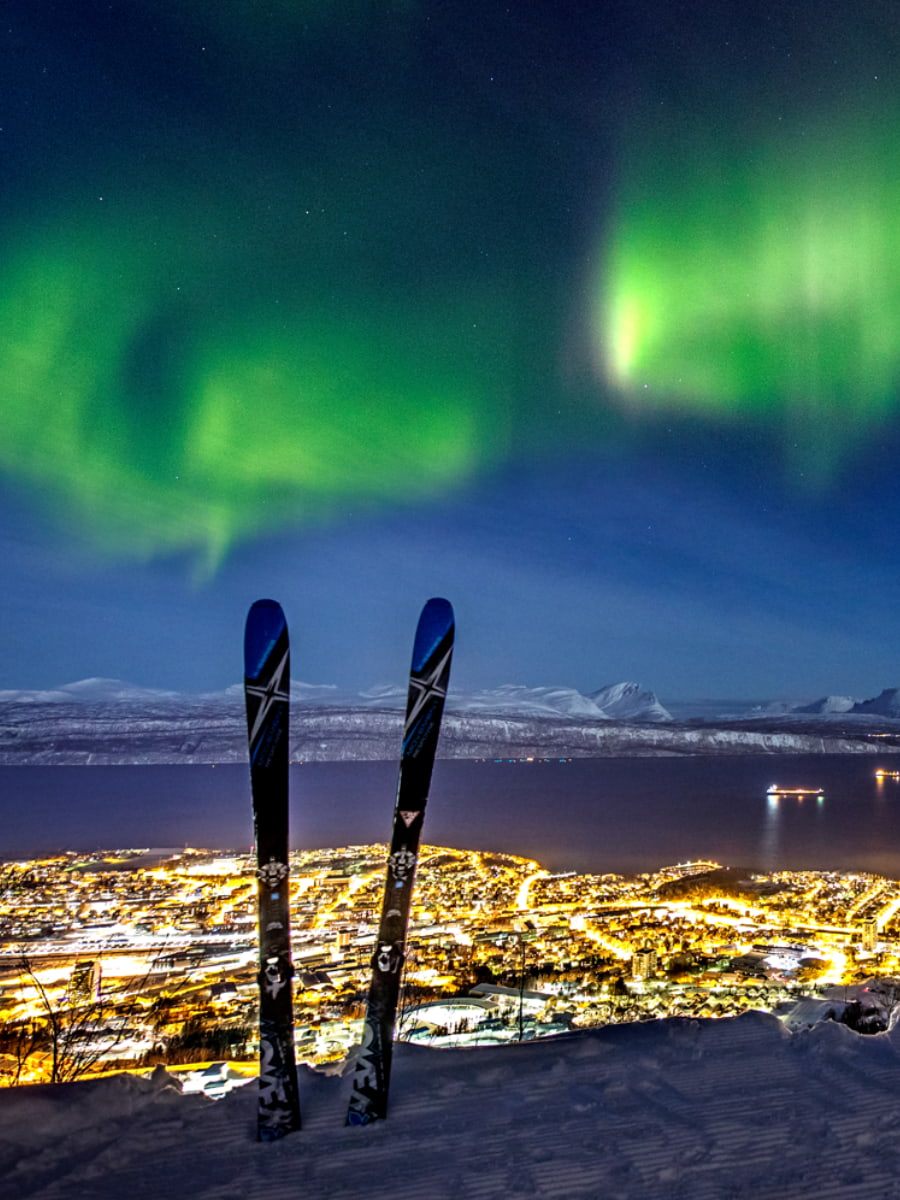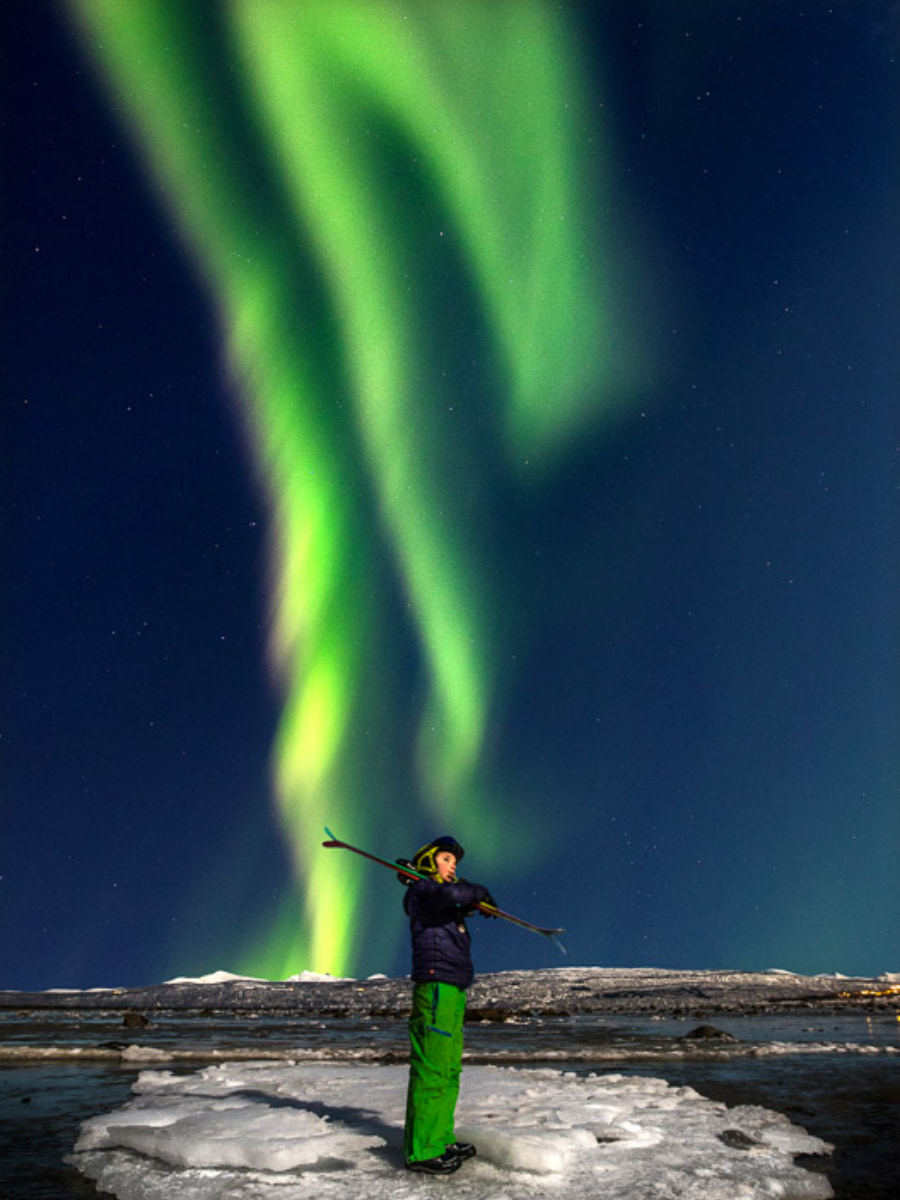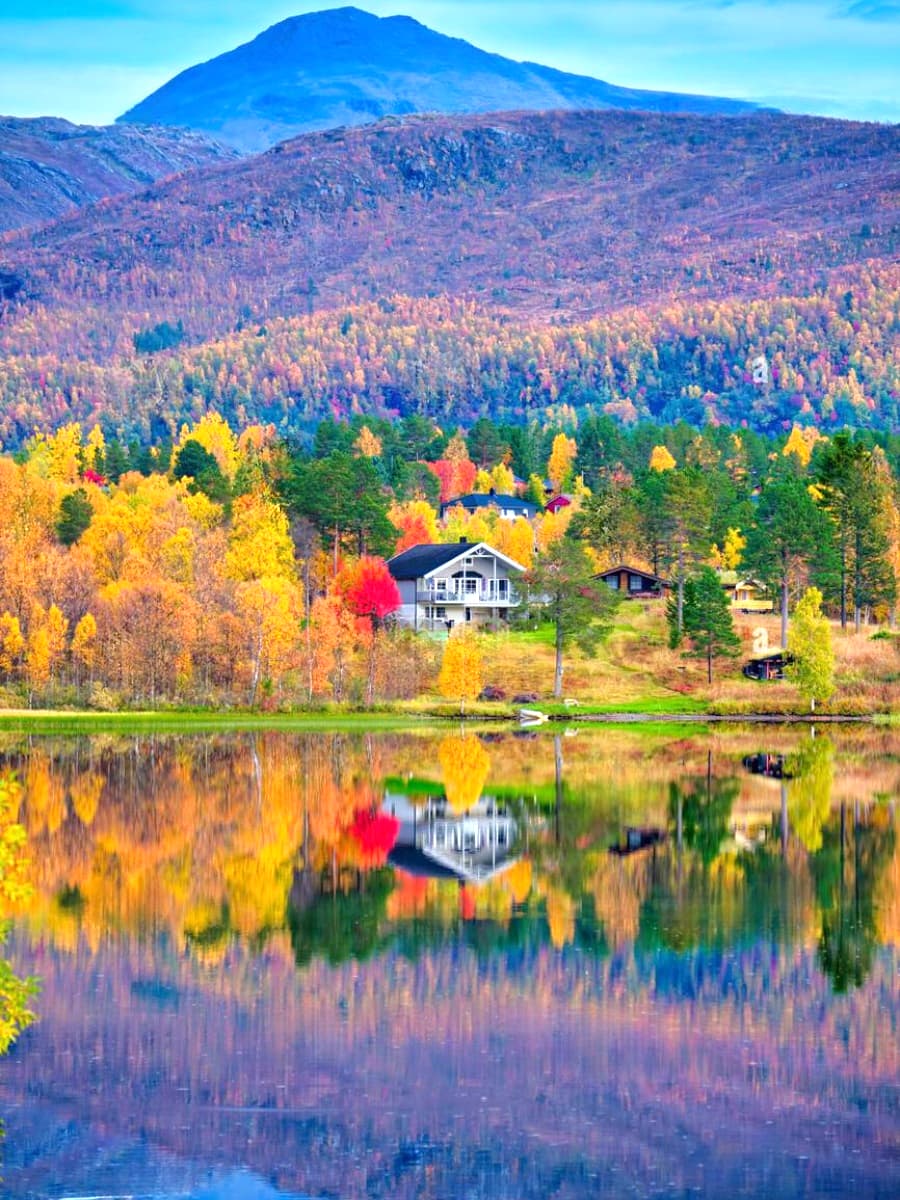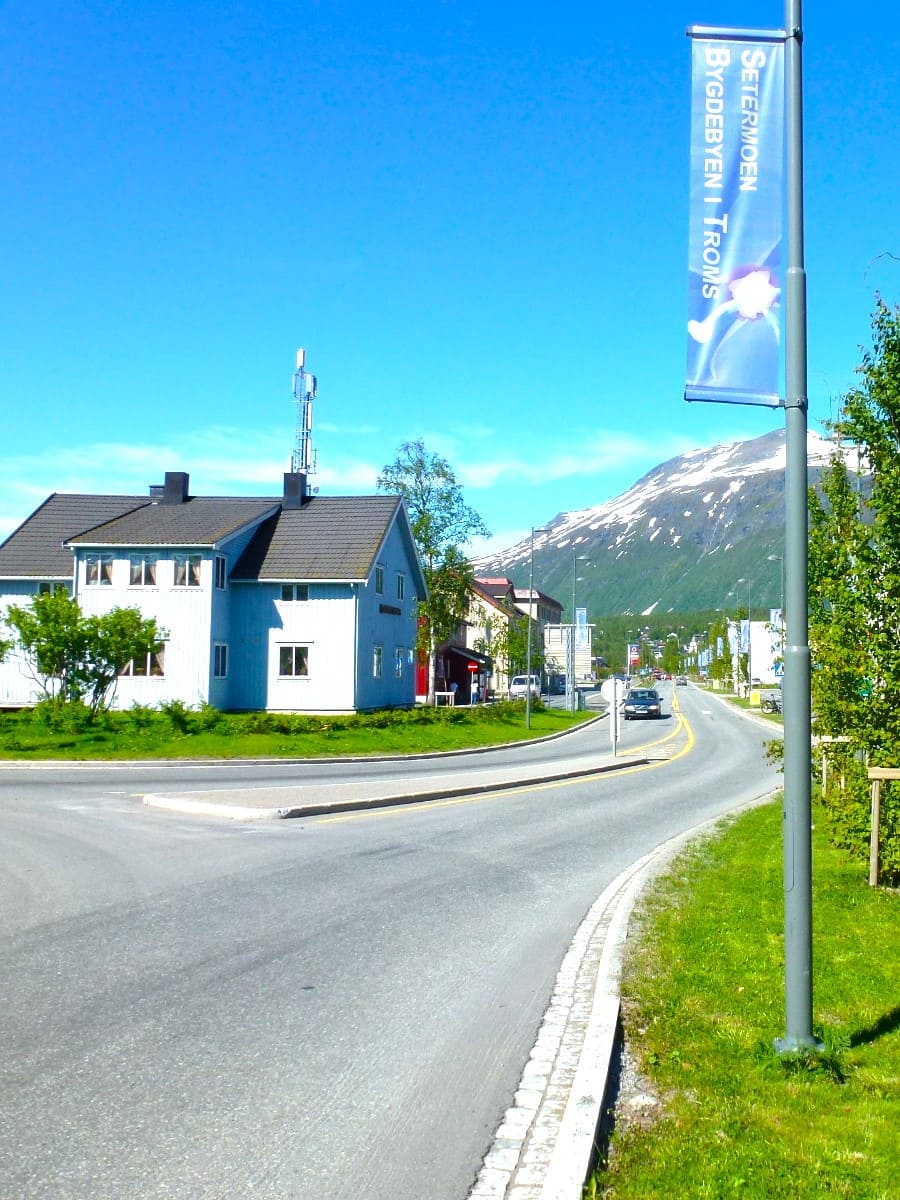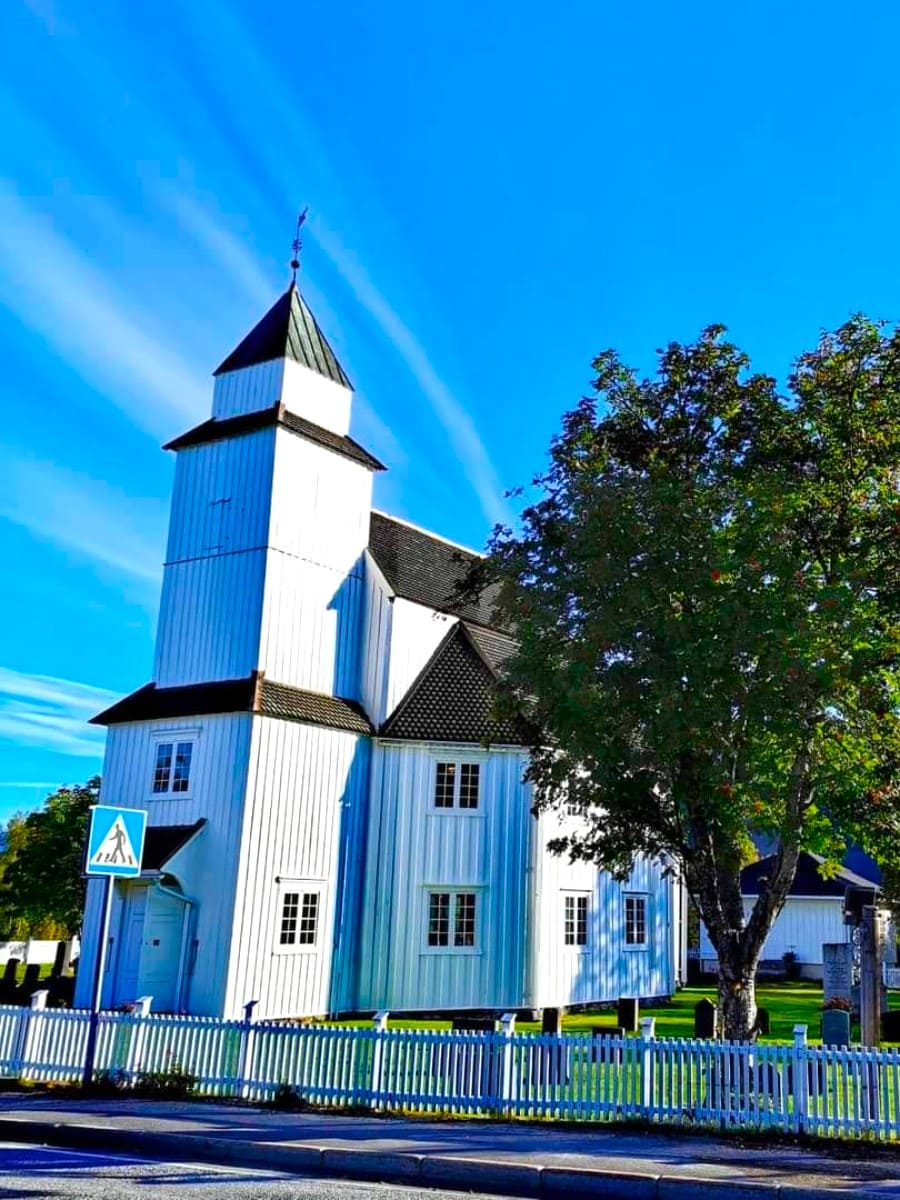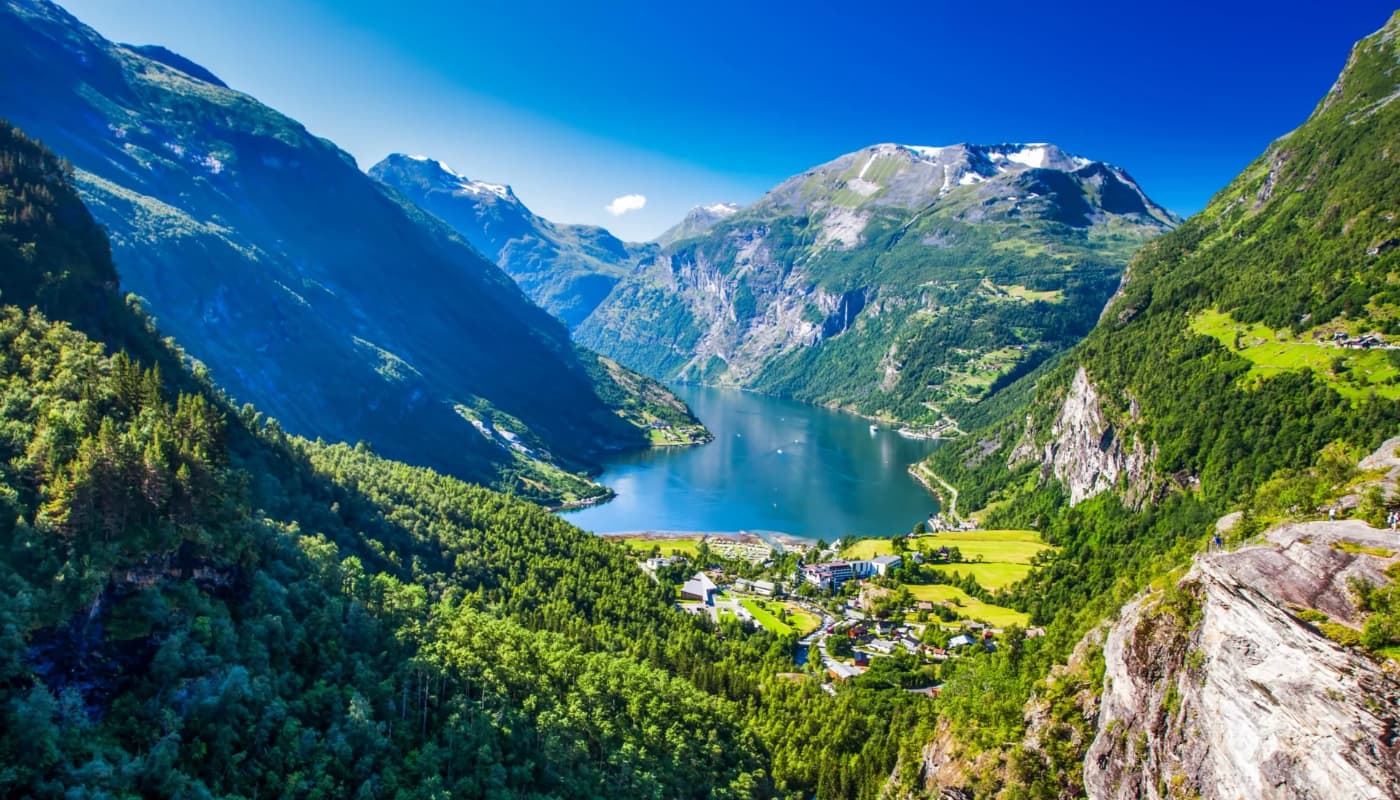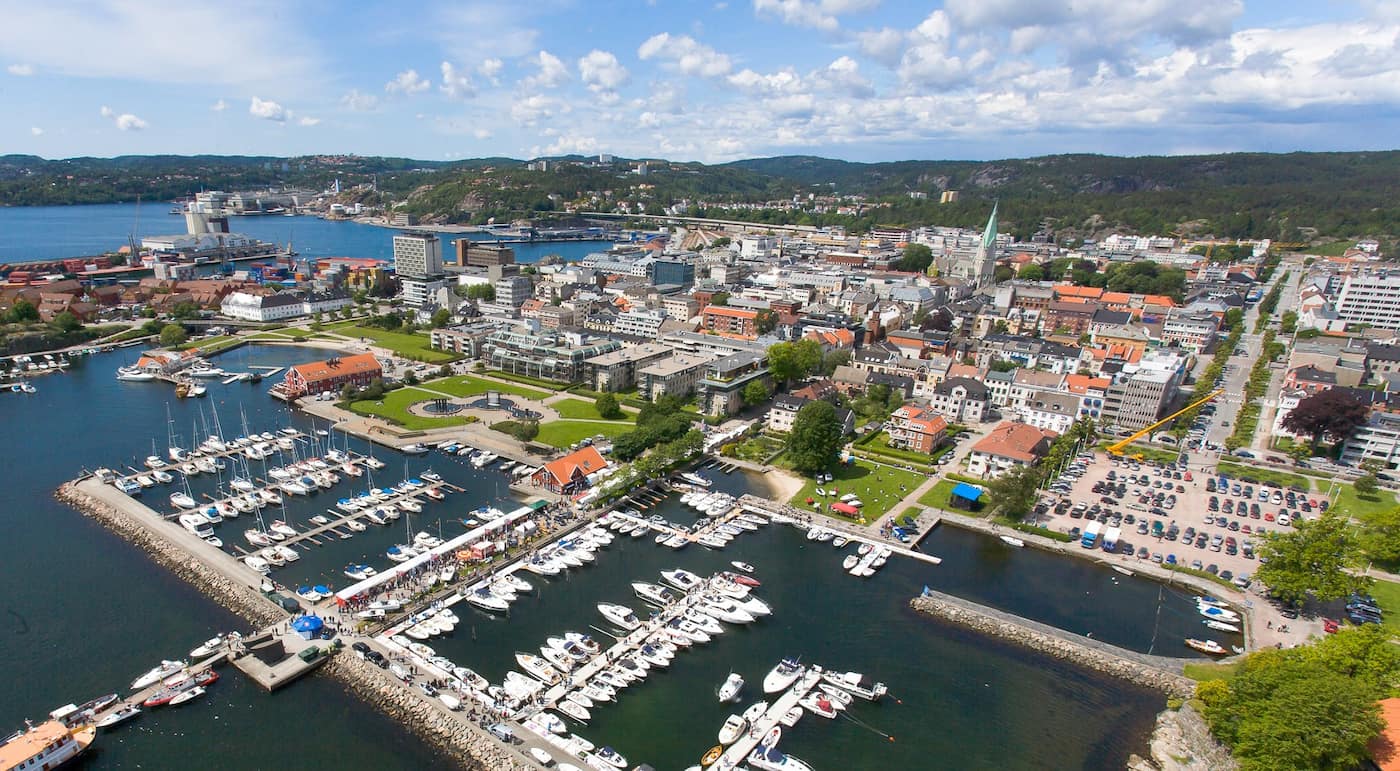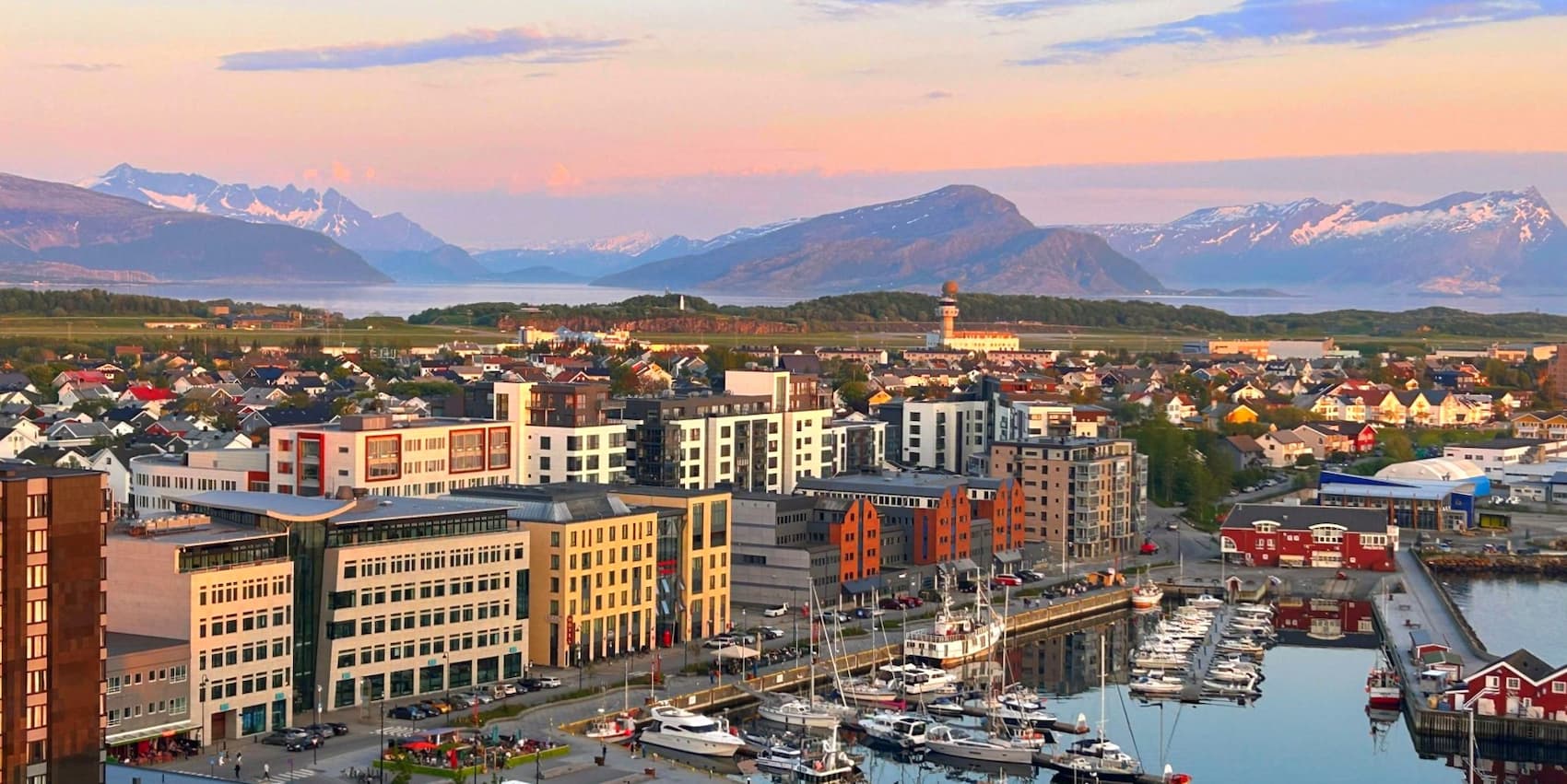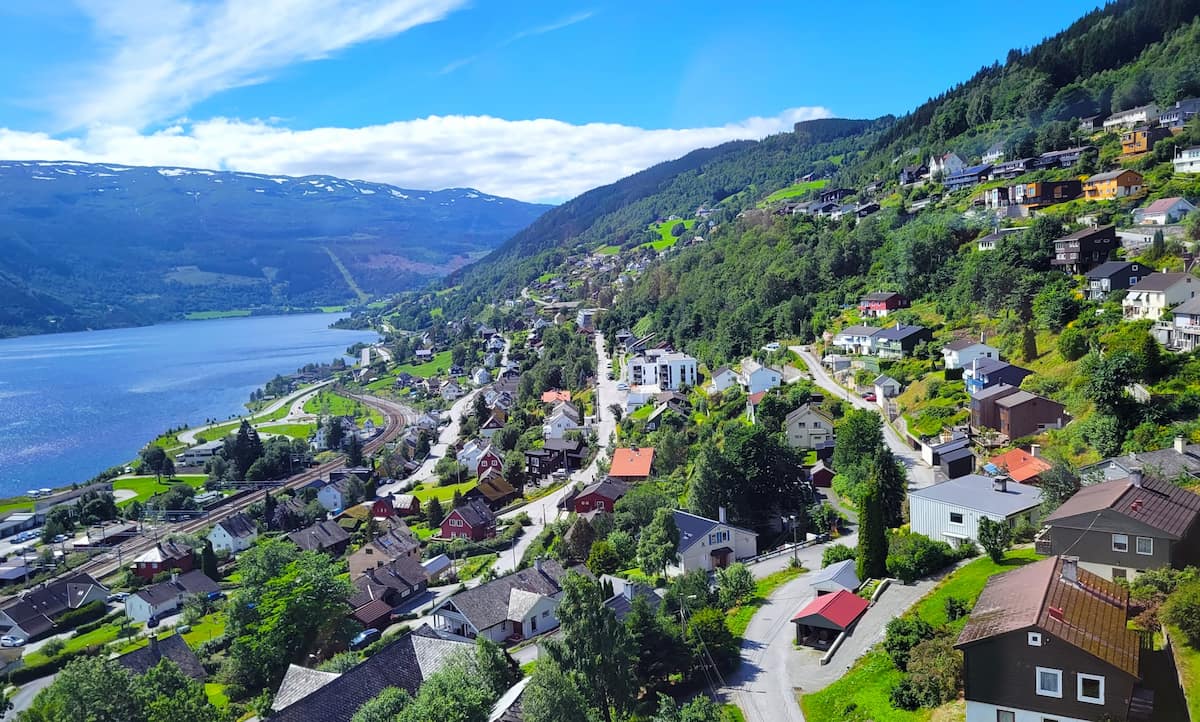Nestled between dramatic mountains and the stunning Ofotfjord, Narvik offers visitors a perfect blend of natural beauty and fascinating history. This Arctic gem in northern Norway surprises travelers with its rich World War II heritage and year-round outdoor adventures.
Whether you’re chasing the Northern Lights in winter or enjoying the midnight sun in summer, Narvik has something special for every visitor. From thrilling mountain experiences to peaceful fjord cruises, this guide will help you discover the best this charming Norwegian town has to offer.
🏠 Where to Stay in Narvik
- 💎 Luxury Hotel: Narvik Hotel Wivel, Narvik
- 🏨 4-Star: Thon Partner Hotel Narvik, Narvik
- 🛏️ 3-Star: NARVIKFJELLET Camp 291, Narvik
- 💸 Cheap: Ballangen Camping, Narvik
- 🏢 Apartment: Arctic feathers, Narvik
- 👨👩👧👦 For Families: Breidablikk Guesthouse, Narvik
- 🏩 For Couples: Quality Hotel Grand Royal, Narvik
💁 Best Guided Tours
- Narvik/Harstad: Day Tour of Fjords with Stop at Reindeer Farm from € 175 (⭐4.9/5)
- From Narvik: The Northern Lights Arctic Train Guided Tour from € 120 (⭐4.8/5)
- From Kiruna: Narvik City and Fjord Day Trip from € 140 (⭐4.7/5)
- From Narvik: Round-Trip Arctic Train Ride on Ofoten Railway from € 95 (⭐4.9/5)
Best Things To Do in Narvik
1. Narvikfjellet Cable Car and Ski Resort
Breathtaking views. I couldn’t believe my eyes as the modern 10-seater gondola whisked me up to 656 meters above sea level. The panoramic vista of deep fjords, towering mountains, and Narvik’s historic ore harbor unfolded beneath me. This cable car ride is truly an experience in itself, and I made sure to have my camera ready!
Winter wonderland. With one of Scandinavia’s largest vertical drops (885m), Narvikfjellet offers incredible skiing opportunities. I found 9.7 km of groomed slopes and 3.8 km of ski routes catering to different skill levels. The resort features 6 lifts including the gondola, three T-bars, a chair lift, and a conveyor belt for beginners.
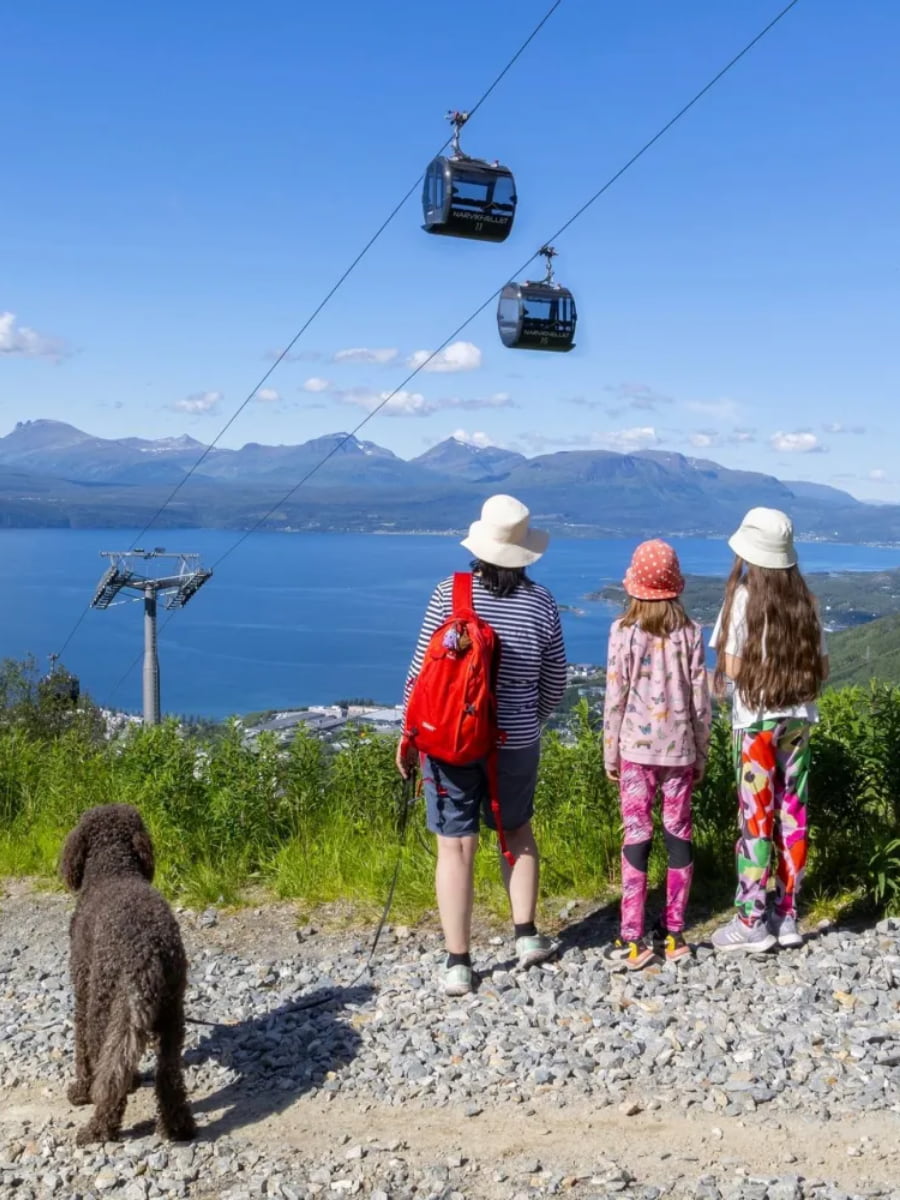
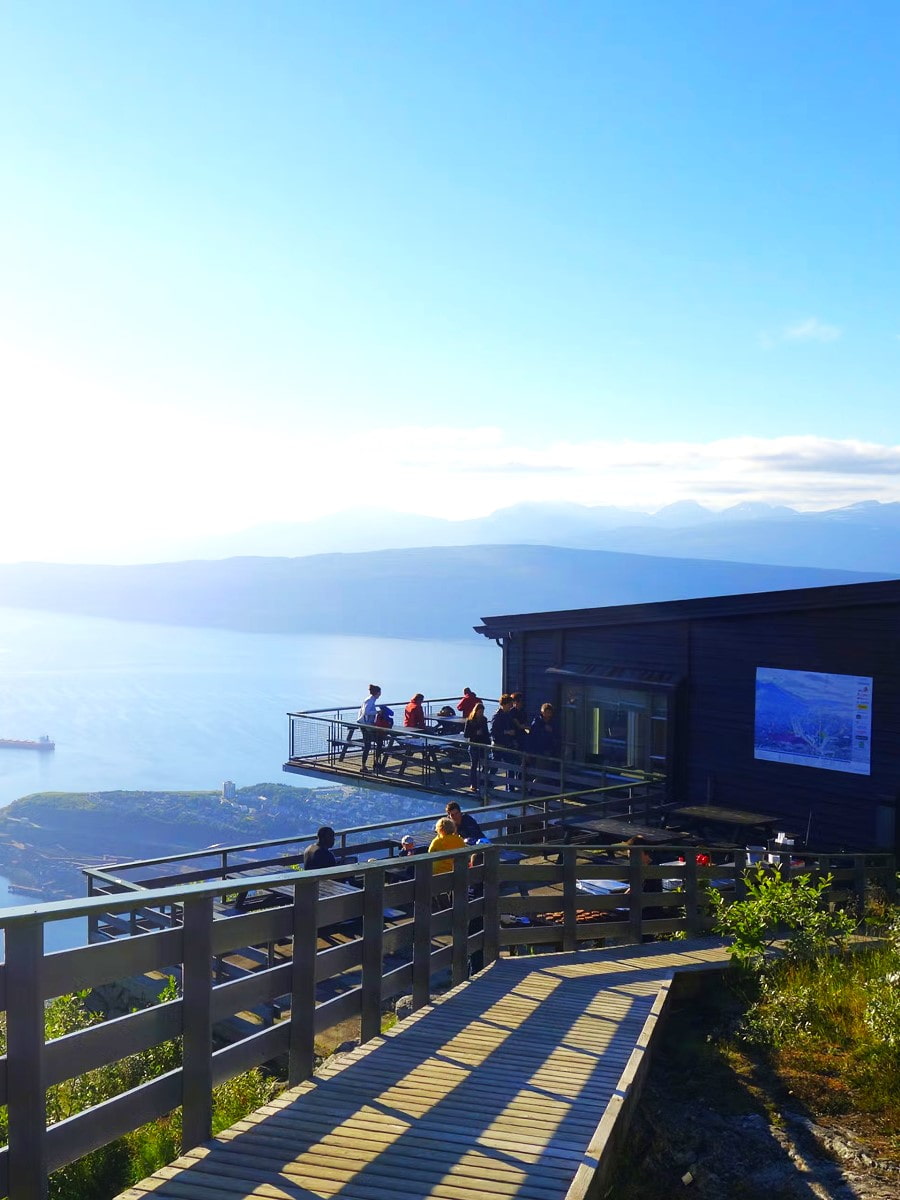
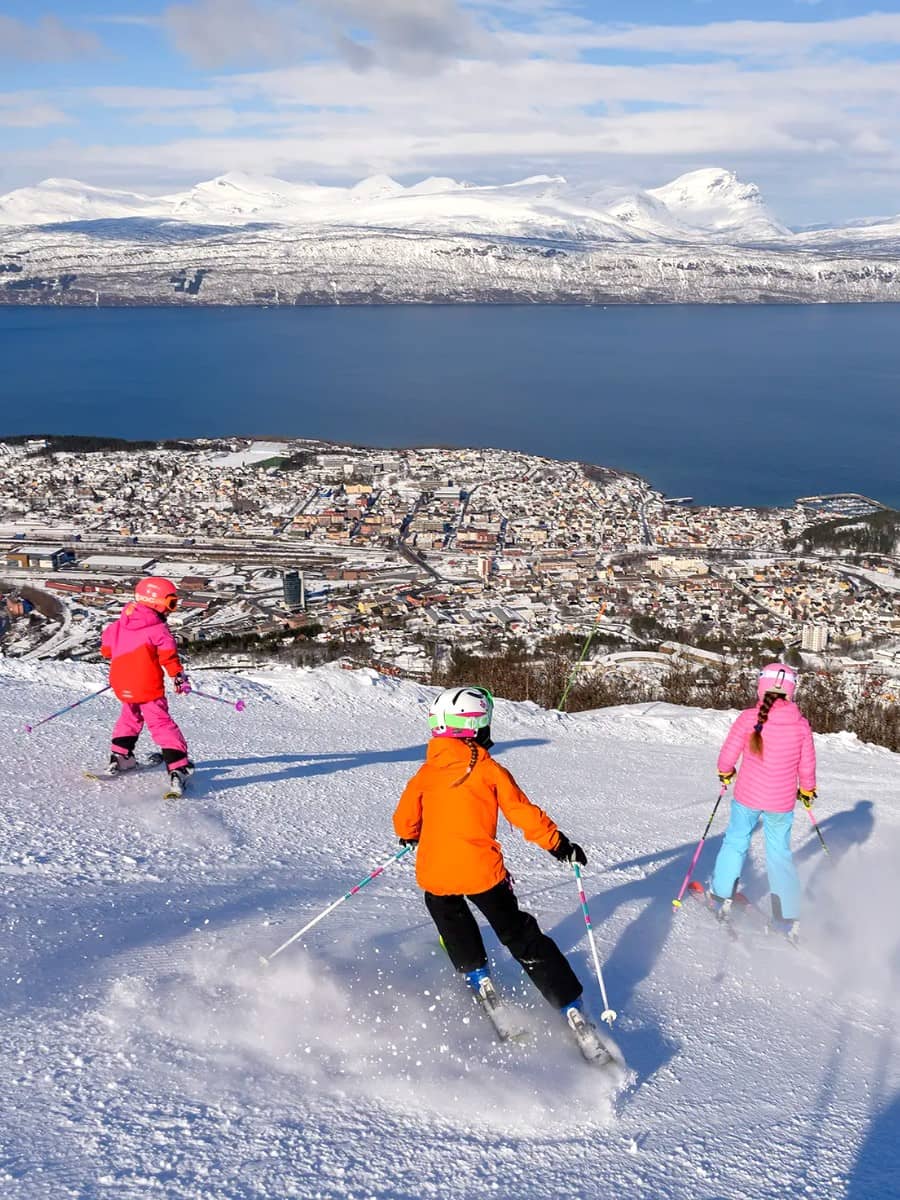
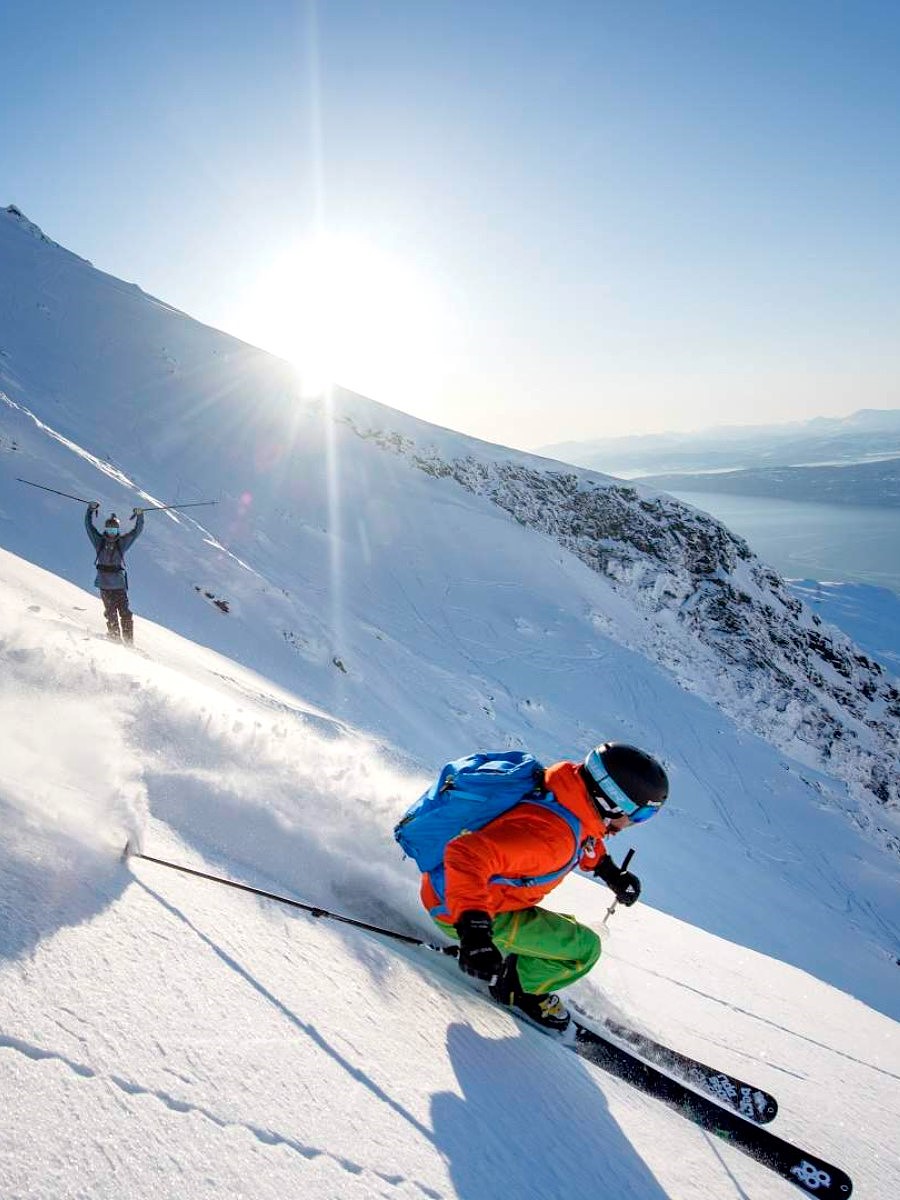
Summer adventures. When the snow melts, Narvikfjellet transforms into a hiking and mountain biking paradise. I spent hours exploring the trails and enjoying the midnight sun. The restaurant at the upper station serves delicious meals with spectacular views that made my dining experience unforgettable.
Off-piste paradise. For thrill-seekers, the chairlift takes you to Linken at 1,003m, and adventurous types can hike another 300m to Tredjetoppen (1,272m) for world-class off-piste runs. I recommend hiring a local guide if you’re planning to explore these backcountry areas.
Practical details. The cable car operates year-round (with seasonal hours) and tickets start from 100 NOK. Day passes for skiing cost 465 NOK (approximately €41) for adults and 390 NOK (€34) for children during the main season.
| Experience | Adult Price | Child Price |
|---|---|---|
| Cable Car (Return) | From 100 NOK | Reduced rates |
| Day Ski Pass | 465 NOK (€41) | 390 NOK (€34) |
My Top Tips:
- Book your cable car ticket for a specific date online to avoid queues
- Visit mid-March to mid-April for the best snow conditions and longer daylight hours
- Bring proper clothing regardless of season – the weather can change quickly
- Dogs are welcome on the cable car, perfect for hiking with your furry friend
- The facility is wheelchair and stroller accessible
2. Narvik War Museum (Krigsmuseum)
History comes alive. Walking through the doors of Narvik War Museum, I was immediately transported back to the dramatic events of World War II. This modern museum tells the compelling story of the Battle of Narvik in 1940, one of the first Allied victories against Nazi Germany.
Interactive exhibits. What impressed me most was how the museum uses technology to create an immersive experience. I found myself captivated by the personal stories, authentic artifacts, and multimedia presentations that brought this crucial chapter of Norwegian history to life.
Emotional journey. The museum doesn’t shy away from showing the human cost of war. I was moved by the exhibits depicting civilian experiences during the occupation and resistance efforts. The museum balances historical facts with personal narratives in a way that resonates with visitors of all backgrounds.
Central location. Situated in the heart of Narvik, the museum occupies a striking modern building that stands as a monument itself. I appreciated how easy it was to find, just a short walk from most hotels and the train station.
Visitor essentials. The museum is open daily from 10:00 to 16:00, with extended hours during summer. Admission costs 150 NOK (€13) for adults, with discounts for students, seniors, and children.
Museum Highlights
- Original wartime artifacts including weapons, uniforms, and personal items
- Scale models of naval vessels involved in the Narvik battles
- Interactive maps showing troop movements and battle strategies
- Documentary film with English subtitles
- Memorial wall honoring those who lost their lives
3. Ofoten Railway & Arctic Train Experience
Scenic marvel. The Railway (Ofotbanen) is one of the most spectacular train journeys in the country. I was mesmerized as the train climbed from sea level in Narvik to the Swedish border, passing through breathtaking Arctic landscapes of mountains, valleys, and fjords.
Border crossing. The journey continues to Kiruna in Sweden, making this a unique cross-border experience. I enjoyed the contrast between Norwegian fjord landscapes and the Swedish mountain plateau (vidda) as we crossed the border.
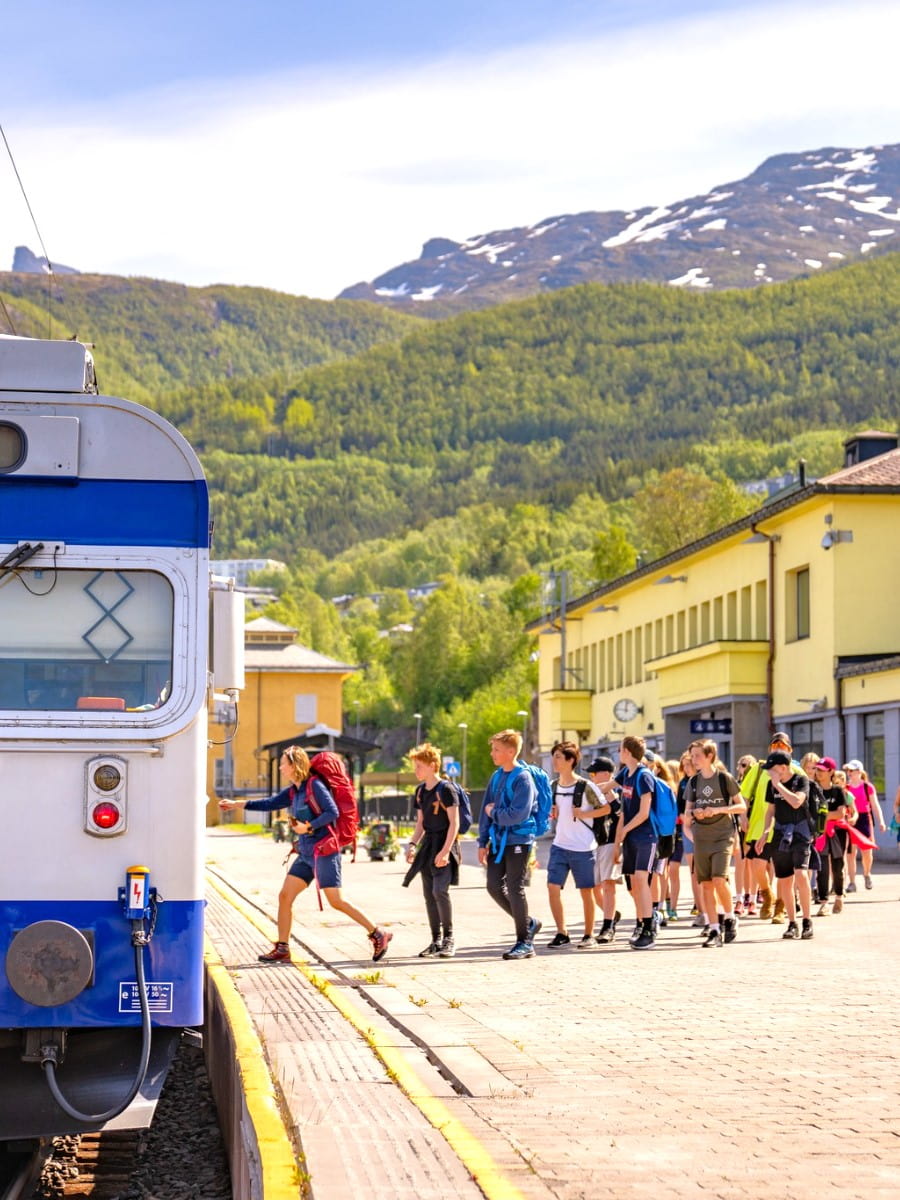
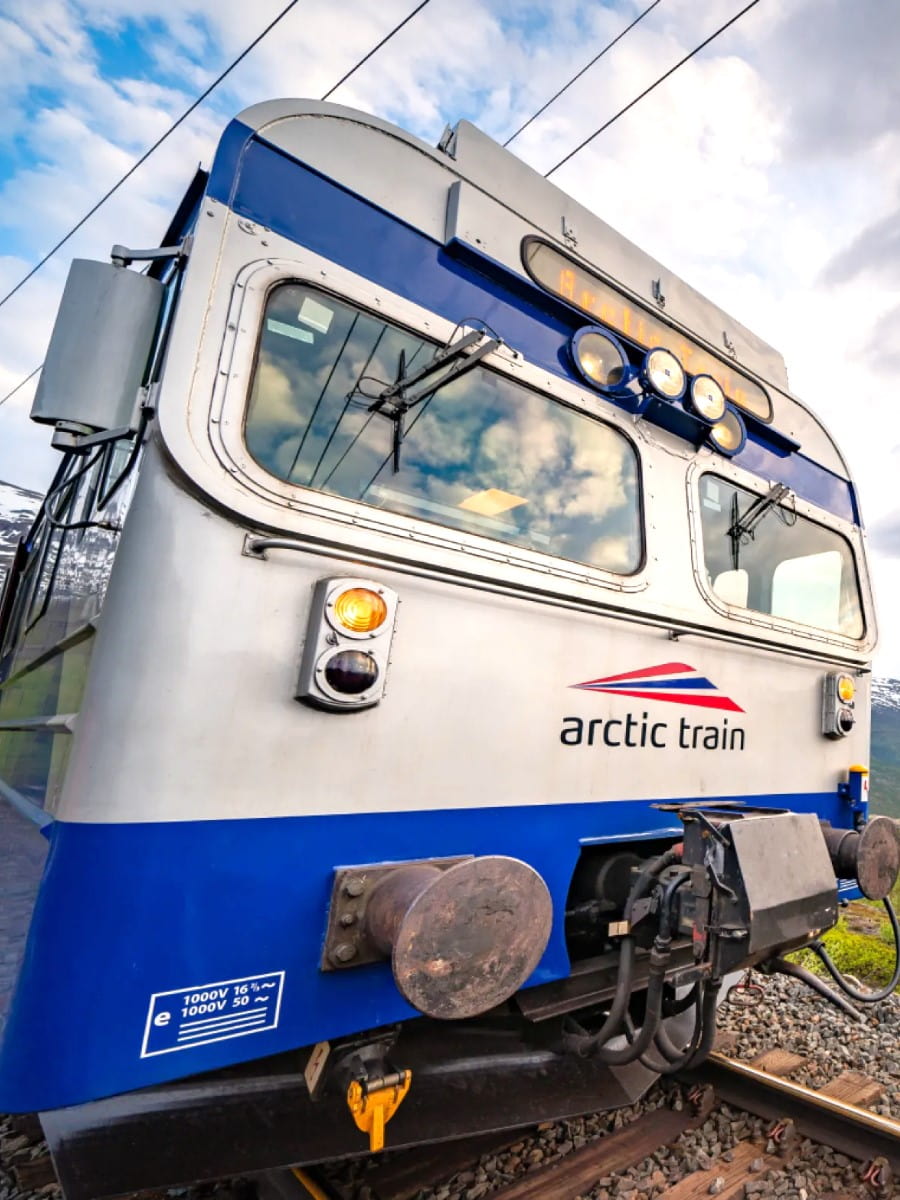
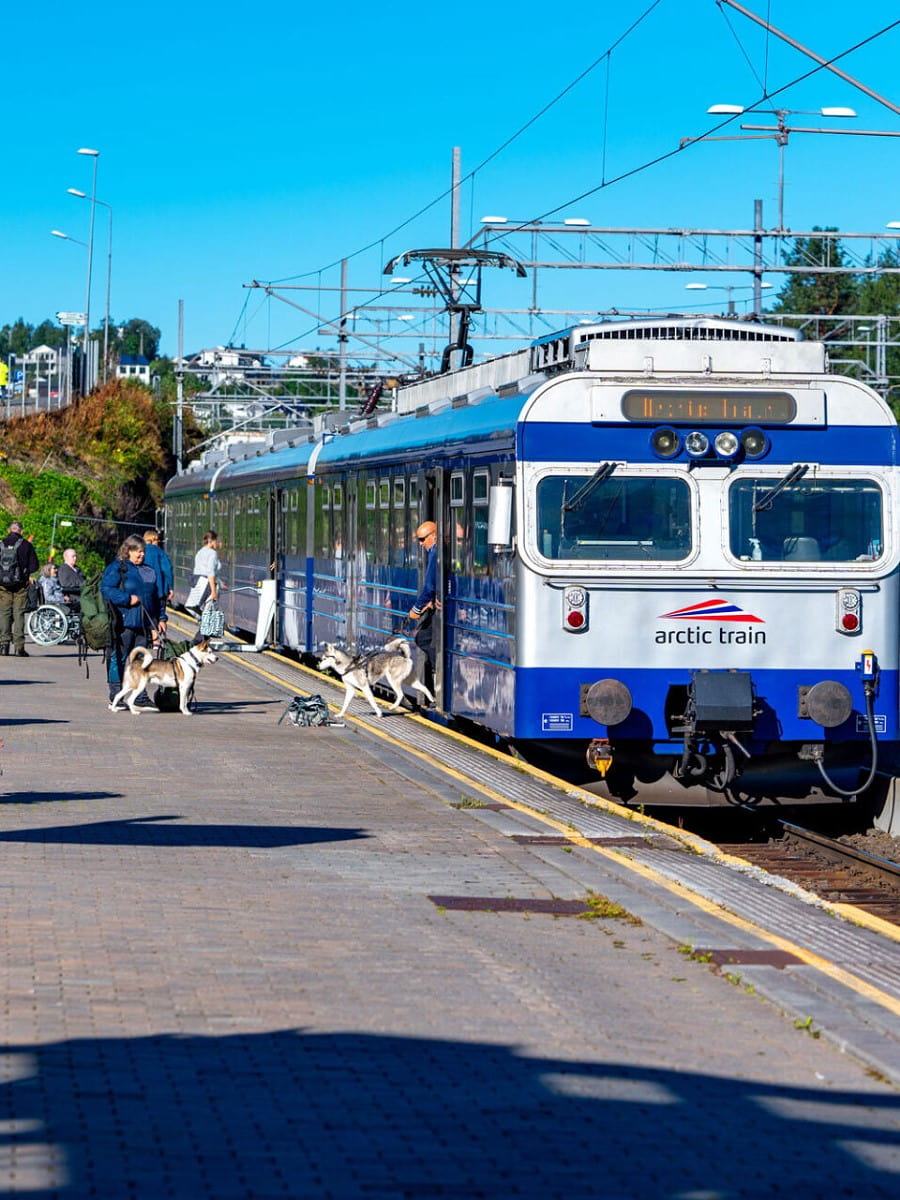
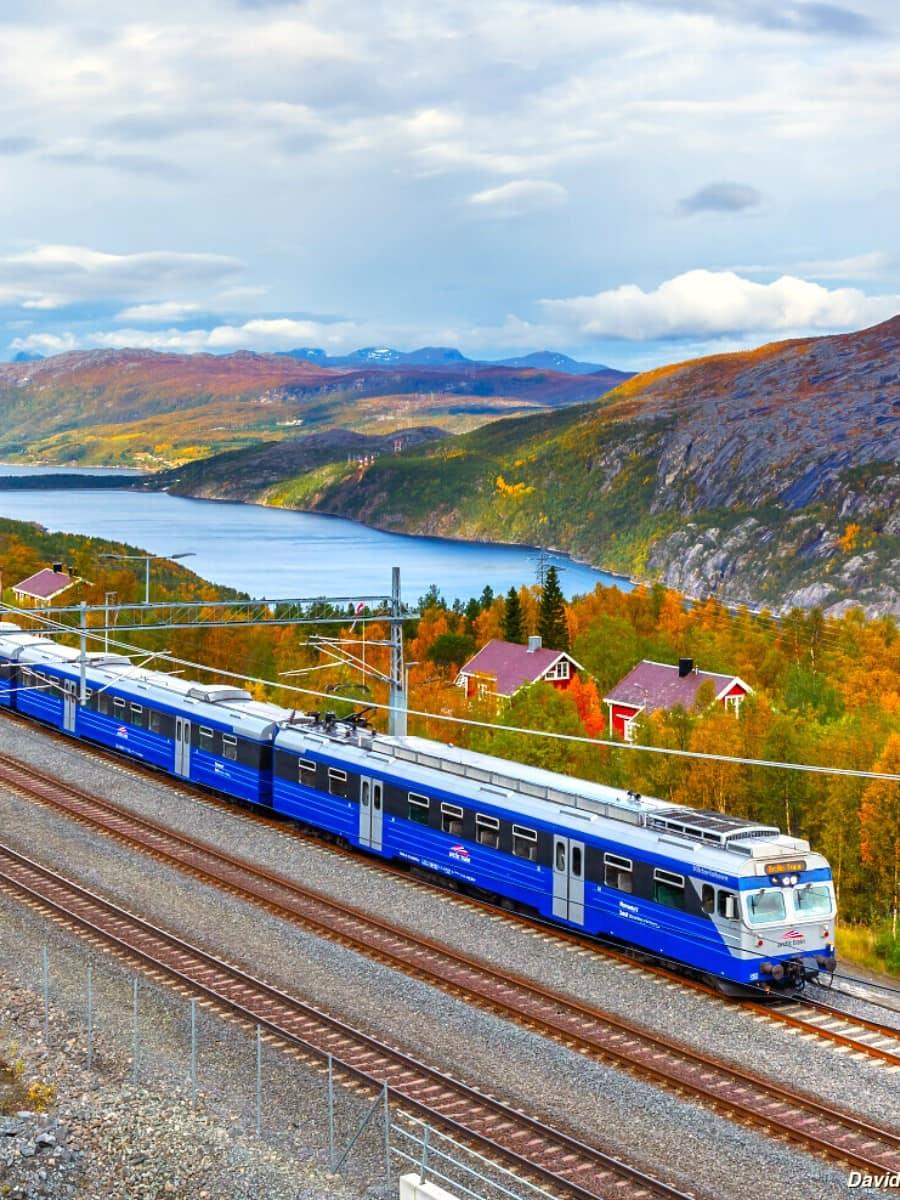
Travel details. Trains run several times daily, with tickets starting from 249 NOK (€22) one-way. The journey to the Swedish border takes about 40 minutes, while continuing to Kiruna takes approximately 2 hours.
Journey Highlights Table
| Section | Distance | Key Sights | Elevation Change |
|---|---|---|---|
| Narvik-Rombak | 10 km | Rombaksfjord views | 0-250m |
| Rombak-Katterat | 9 km | Waterfalls, tunnels | 250-520m |
| Katterat-Bjørnfjell | 10 km | Mountain plateau | 520-550m |
| Bjørnfjell-Border | 1 km | Border crossing | 550m |
⭐ Best Tours
- Arctic Train - The Northernmost Railway in Norway – Experience the breathtaking railway line from Narvik, enjoying spectacular views of fjords and mountains on this historic Arctic train journey.
- The Arctic Train: Ofoten Line – Travel on the railway in Norway with this scenic journey, taking in stunning Arctic landscapes.
4. Fjord Cruise on Ofotfjord
Maritime beauty. Gliding across the deep blue waters was a highlight of my Narvik visit. The fjord stretches approximately 78 km from the open sea to Narvik, creating a natural harbor that made the city an important port despite its Arctic location.
Dramatic scenery. As our boat navigated the fjord, I was surrounded by steep mountain walls plunging directly into the water. The contrast between snow-capped peaks and the dark fjord waters created a dramatic backdrop that’s perfect for photography.
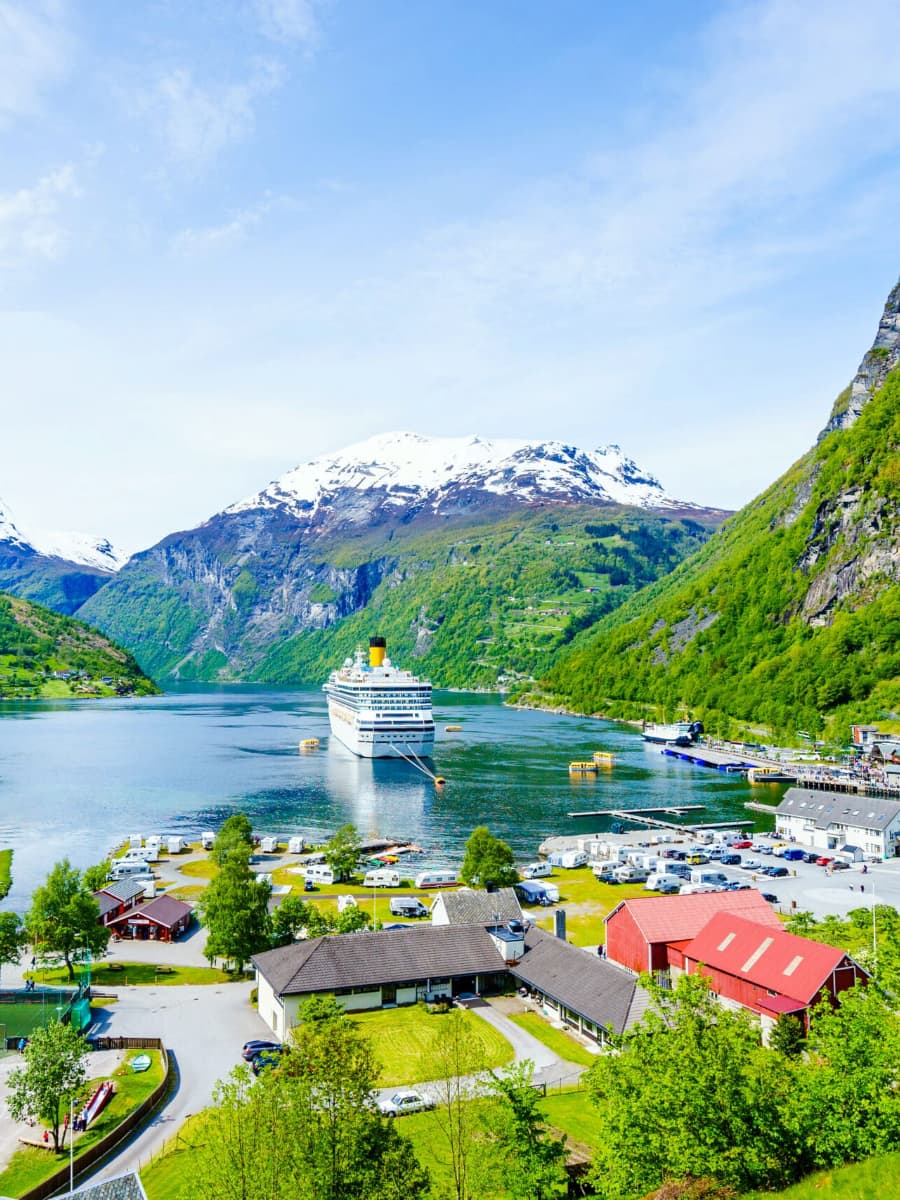
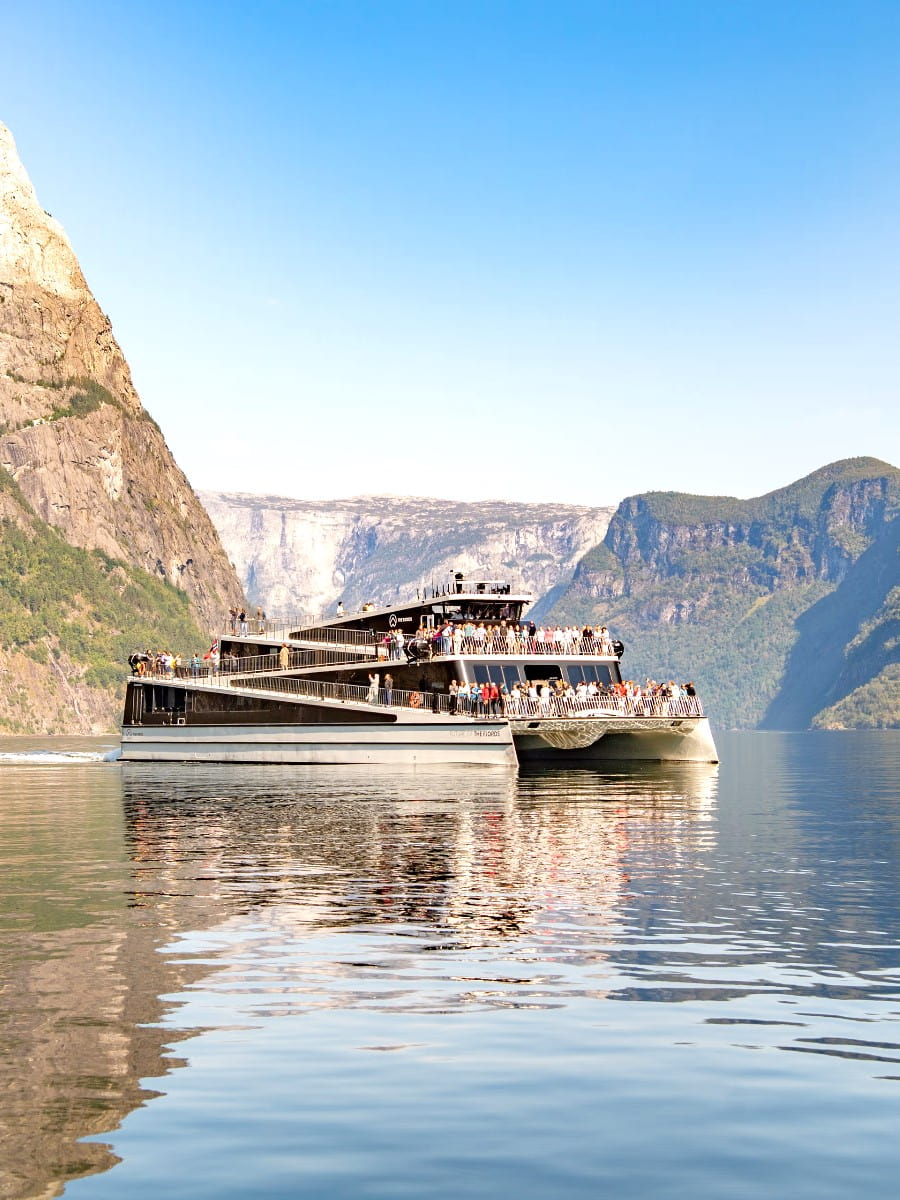
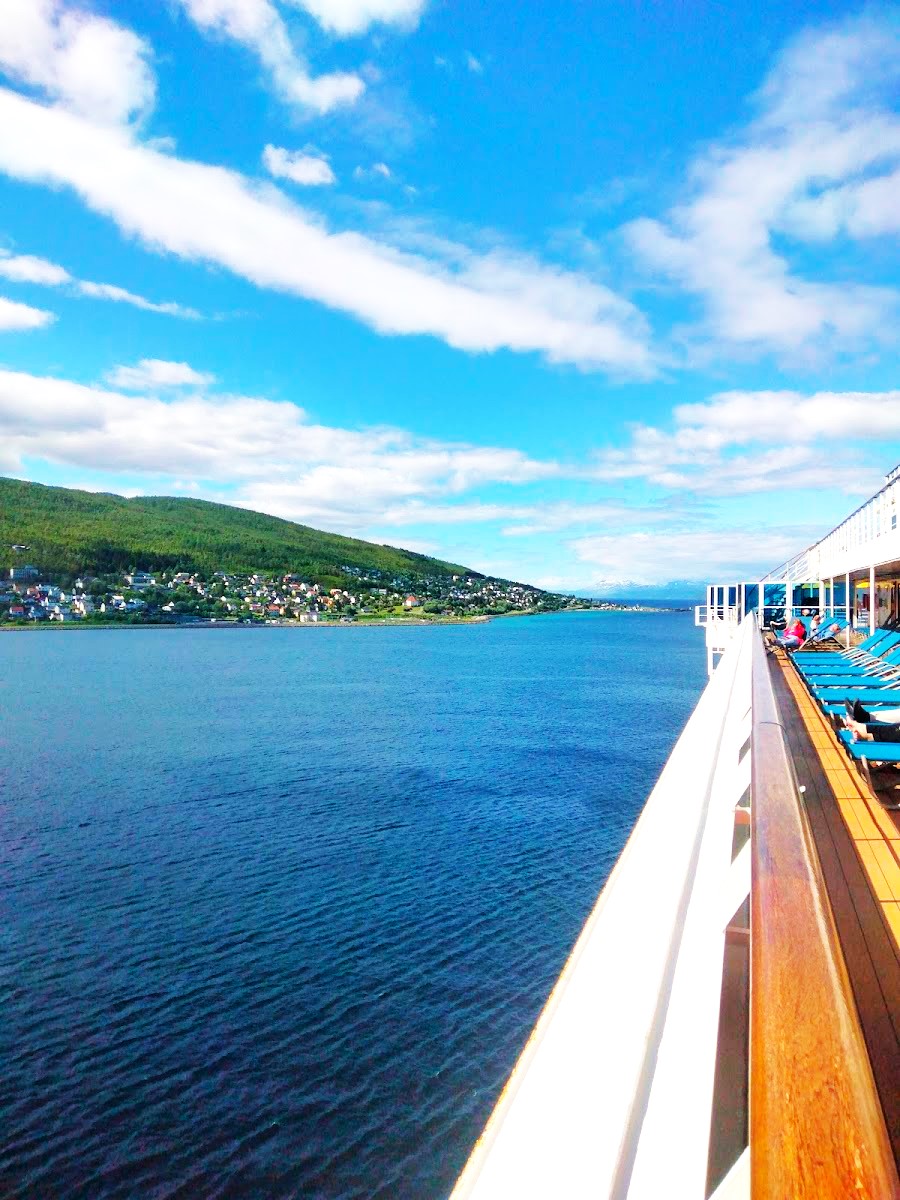
Historical waters. These waters witnessed significant naval battles during WWII, and our guide pointed out locations where German and Allied ships clashed in 1940. I found it fascinating to see these historic sites from the water perspective while learning about their significance.
Wildlife encounters. The fjord is home to diverse marine life, and I was lucky enough to spot sea eagles soaring overhead and seals playing near the shoreline. During certain seasons, you might even glimpse orcas or other whale species that sometimes enter the fjord.
Cruise options. Several operators offer fjord cruises ranging from 2-hour sightseeing trips (from 450 NOK/€40) to full-day excursions with stops at small coastal villages (from 950 NOK/€84). Most cruises depart from Narvik harbor between May and September.
What to Bring on Your Cruise
- Warm, waterproof clothing (even in summer)
- Camera with zoom lens for wildlife photography
- Binoculars for spotting distant wildlife
- Sun protection (the reflection from water intensifies UV rays)
- Motion sickness remedies if you’re prone to seasickness
⭐ Best Activities
- From Kiruna: Narvik City and Fjord Day Trip – Take a day trip from Kiruna to explore the Norwegian city of Narvik and its beautiful surrounding fjords.
5. Narvik Museum
Local heritage. Housed in the historic administration building of the LKAB mining company, Narvik Museum tells the fascinating story of how this Arctic town developed around the iron industry. I was struck by how deeply mining has shaped Narvik’s identity and landscape.
Industrial history. The museum’s exhibits detail the engineering feat of building the Railway and port facilities in such challenging Arctic conditions. I found the old photographs particularly interesting, showing how workers overcame extreme weather and terrain.
Cultural insights. Beyond industrial history, the museum offers glimpses into everyday life in this northern community. I enjoyed learning about local traditions, Sami culture, and how residents adapted to the unique Arctic conditions with midnight sun and polar nights.
Architectural gem. The building itself, constructed in 1902, is worth admiring with its distinctive yellow façade and period details. I appreciated how the museum preserved many original features while creating modern exhibition spaces.
Visitor information. The museum is open Tuesday through Sunday, 11:00-16:00, with extended hours in summer. Admission costs 100 NOK (€9) for adults, with family tickets available at 200 NOK (€18).
Exhibition Highlights
| Floor | Exhibition Theme | Notable Displays |
|---|---|---|
| Ground | Mining Technology | Original equipment, scale models |
| First | Railway Construction | Engineering plans, worker stories |
| Second | Town Development | Historical photographs, everyday items |
| Third | Cultural Life | Traditional clothing, arts, music |
6. Trinigon 3 Monument
Powerful memorial. Standing before the Trinigon 3 Monument, I felt a profound sense of the sacrifices made during WWII. This striking memorial honors the Allied forces who fought in the Battle of Narvik, particularly the soldiers from France, Poland, and the United Kingdom.
Artistic significance. The monument’s unique triangular design represents the three main Allied nations that participated in the Narvik campaign. I was impressed by how the sculptor managed to create a piece that’s both abstract and emotionally resonant.
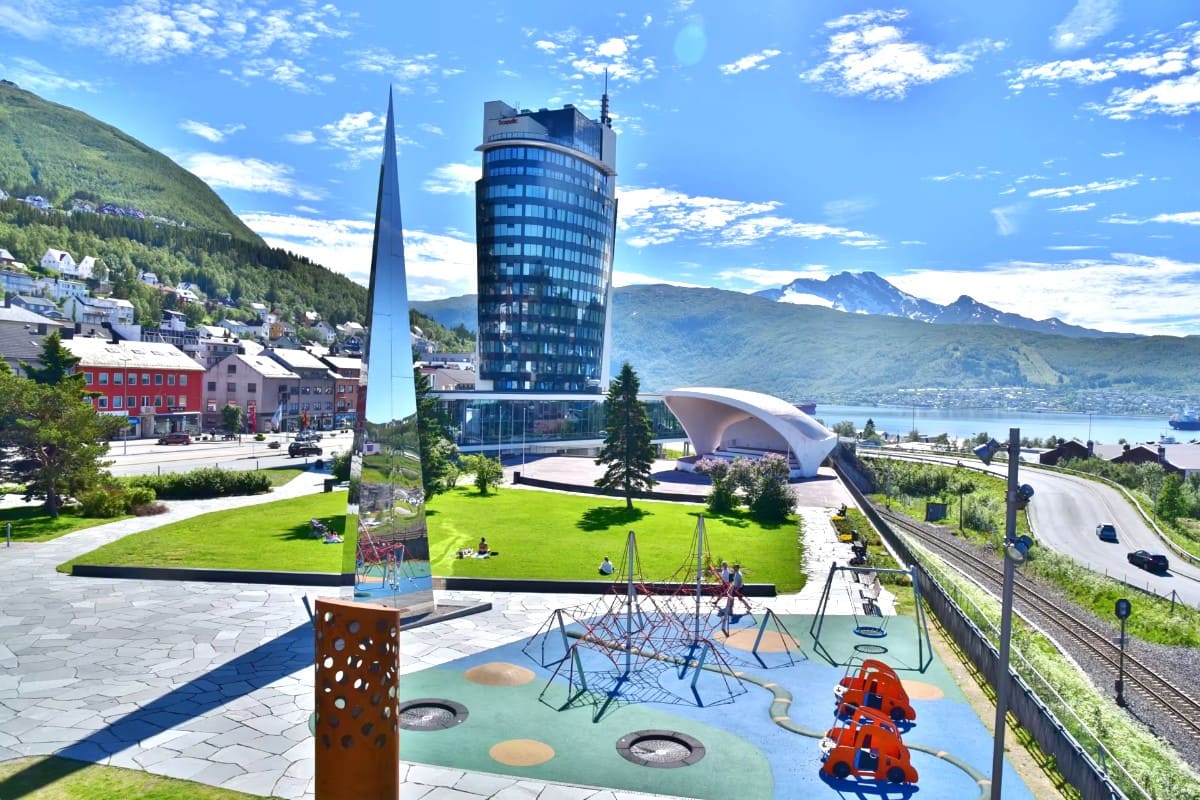
Scenic location. Positioned with a backdrop of mountains and fjord, the monument’s setting enhances its impact. I found the location perfect for quiet reflection, with benches nearby allowing visitors to sit and contemplate the historical significance.
Visitor experience. The monument is freely accessible year-round and is illuminated at night. It’s located a short walk from the city center, making it easy to include in your Narvik itinerary.
Battle of Narvik Key Facts
- Fought between April 9 and June 8, 1940
- Involved naval and land forces from Norway, UK, France, and Poland
- Initially successful Allied operation before forces were withdrawn
- First significant Allied victory in WWII
7. Narvik Kjøretøyhistoriske Museum
Automotive treasure trove. The Narvik Vehicle Historical Museum surprised me with its impressive collection of vintage cars, motorcycles, and military vehicles. Many exhibits have direct connections to Narvik’s history, including vehicles used during WWII and the mining industry.
Local passion. What makes this museum special is that it’s run by dedicated enthusiasts who are eager to share their knowledge. I enjoyed chatting with a volunteer who explained how some vehicles were adapted for Arctic conditions with fascinating engineering solutions.
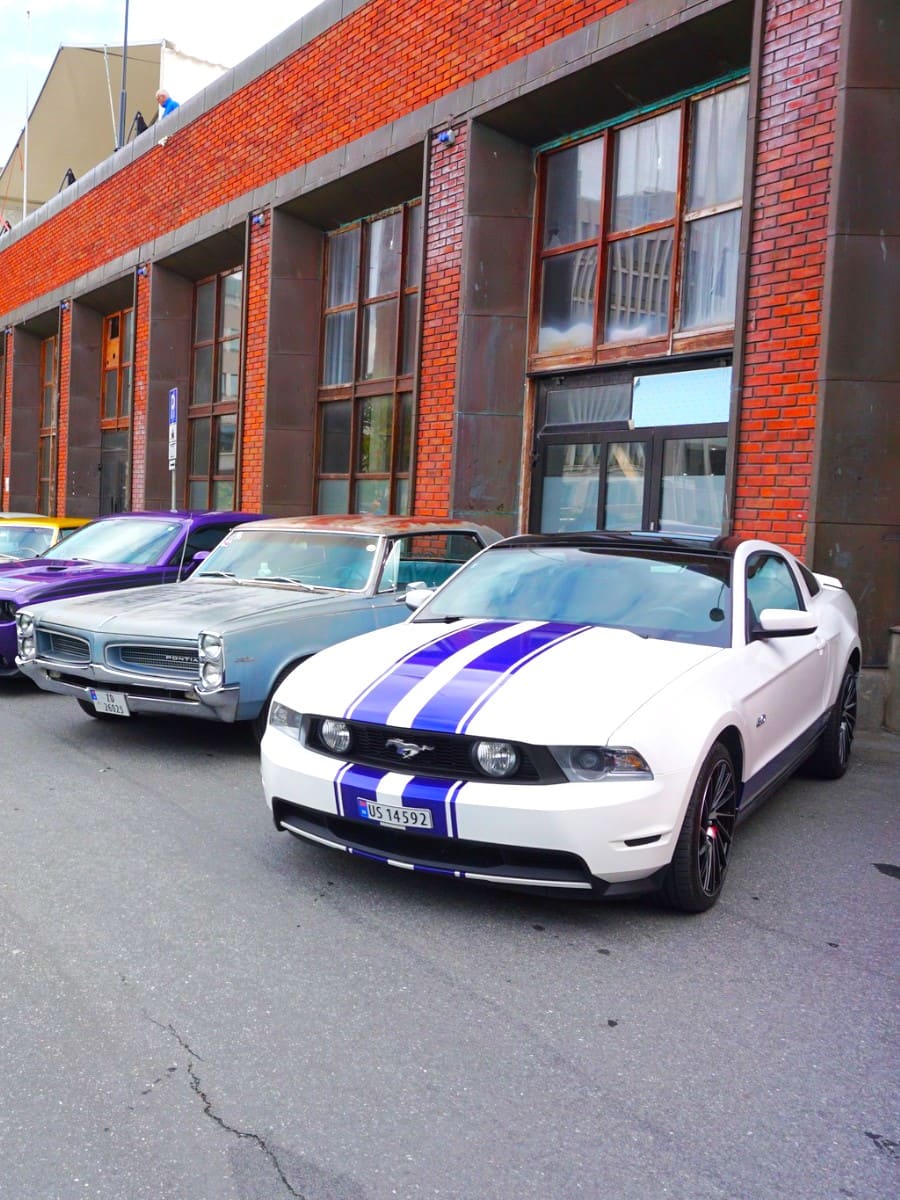
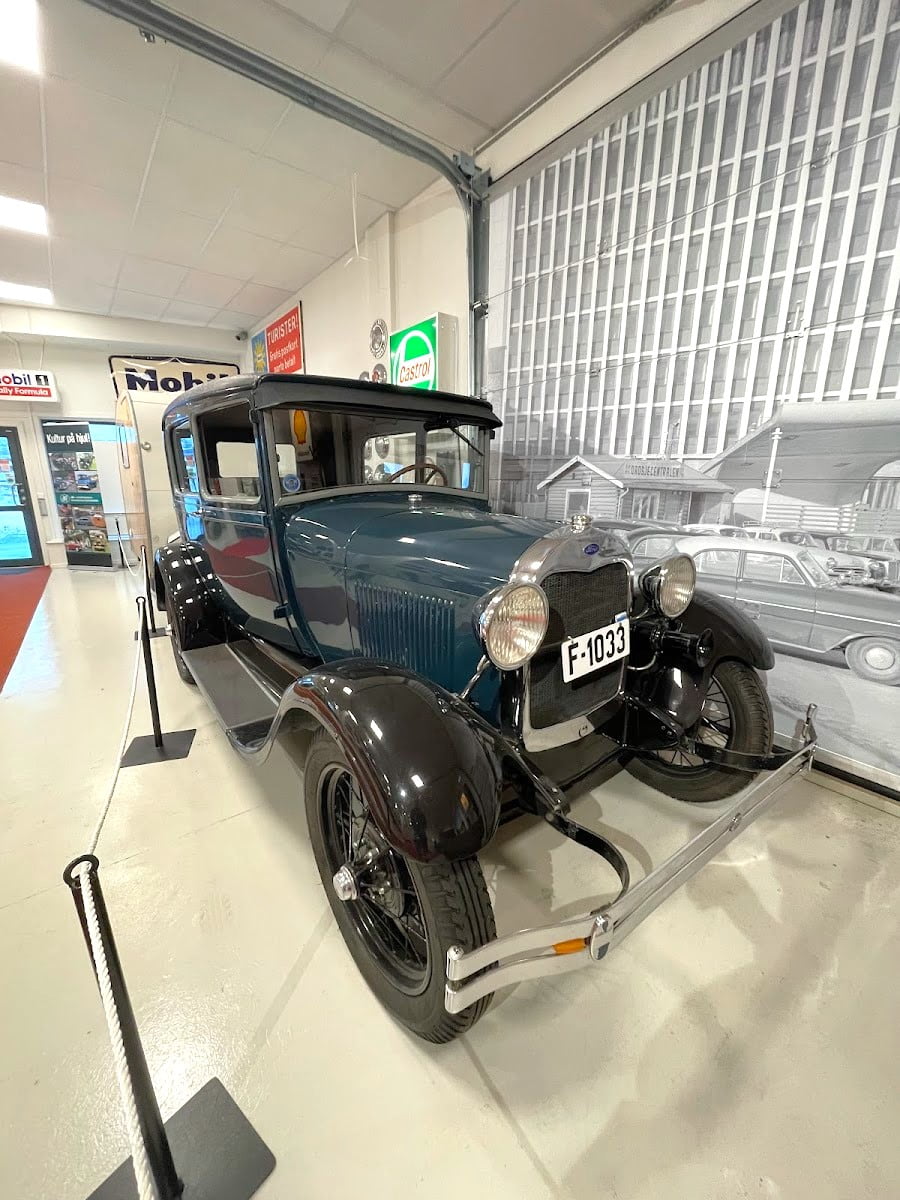
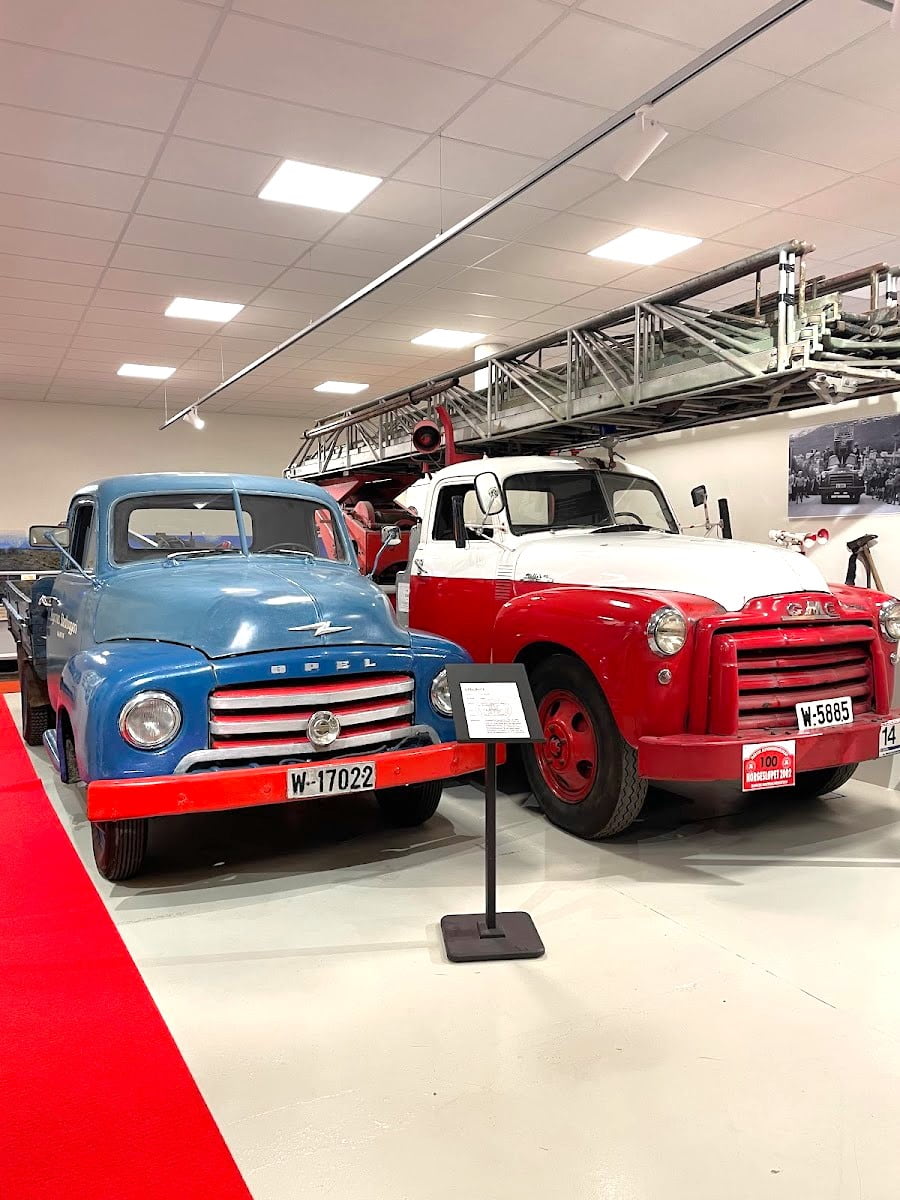
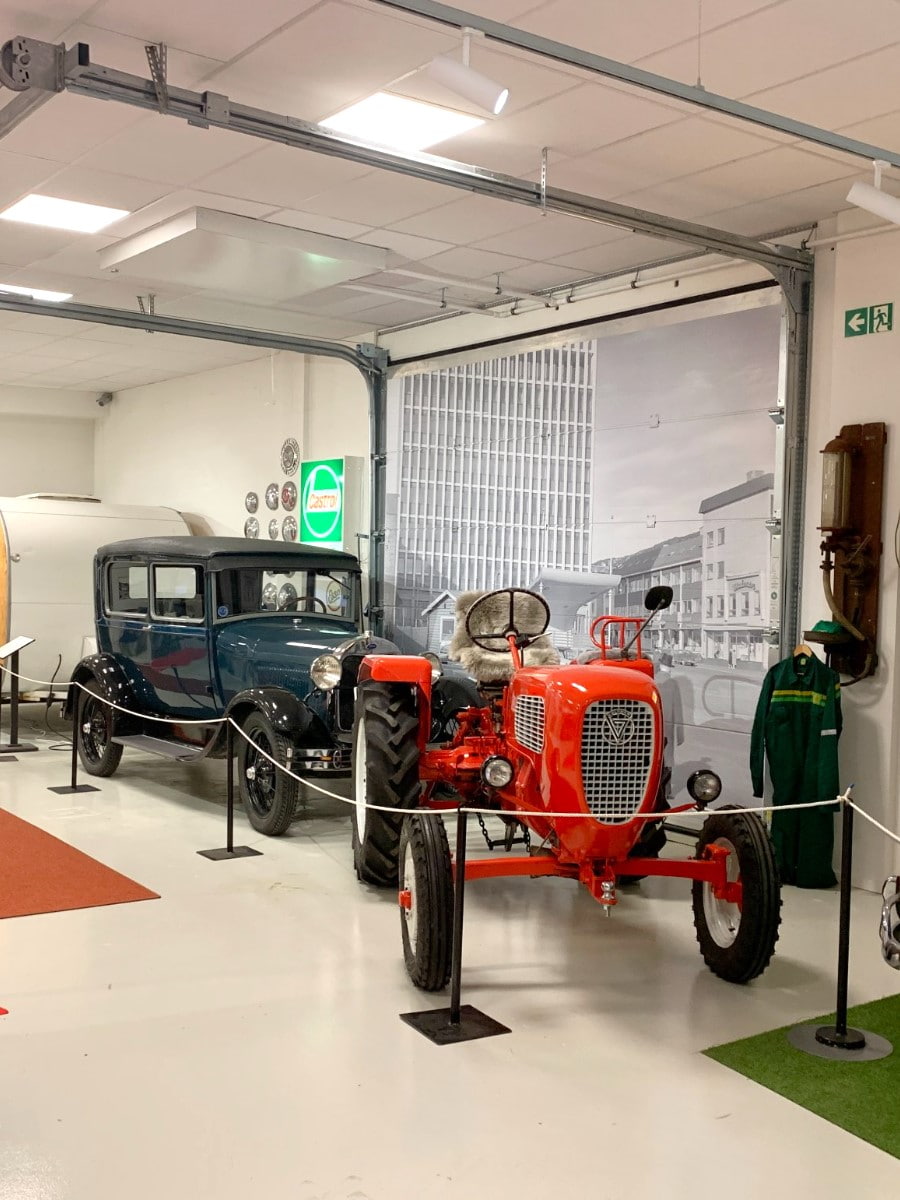
Restoration workshop. One of the unique aspects is the active restoration area where visitors can sometimes see work in progress. I watched as skilled hobbyists carefully brought a 1950s truck back to life, using both period-correct and modern techniques.
Beyond vehicles. The museum also features related memorabilia like vintage gas pumps, road signs, and automotive advertisements. I was particularly drawn to the display of Arctic expedition vehicles that highlighted the challenges of polar transportation.
Practical details. Located slightly outside the city center, the museum is open Wednesday to Sunday from 12:00 to 16:00. Admission is 90 NOK (€8) for adults and 40 NOK (€3.50) for children under 12.
Notable Vehicles in the Collection
- 1930s Chevrolet used by the Norwegian resistance
- Rare Volvo TP21 “Sugga” military vehicle
- Vintage Harley-Davidson motorcycles
- 1950s snowmobiles and tracked vehicles
- Classic Norwegian-owned American cars from the post-war period
8. Narvik Bibliotek (Library)
Architectural gem. Narvik’s public library isn’t just for bookworms—it’s an architectural marvel worth visiting. I was immediately struck by the building’s modern design with large glass facades that frame stunning views of the surrounding mountains and fjord.
Cultural hub. More than just a place for books, the library serves as Narvik’s cultural living room. I stumbled upon a small photography exhibition and learned that the space regularly hosts cultural events, from author talks to small concerts and community gatherings.
Cozy reading spots. Even as a tourist, I appreciated the comfortable seating areas where I could rest while browsing through books about local history and culture. The large windows provide natural light and spectacular views that made reading even more enjoyable.
Digital facilities. The library offers free Wi-Fi and computer access, which proved invaluable for planning my next day’s activities. I was impressed by how this modern facility seamlessly blends traditional library services with contemporary digital needs.
Visitor-friendly. Open Monday through Saturday with varying hours, the library welcomes visitors and doesn’t require a membership card to enter and enjoy the space. The helpful staff can point you toward English-language materials about the region.
Library Services for Visitors
| Service | Availability | Cost |
|---|---|---|
| Wi-Fi | Throughout building | Free |
| Computer access | Limited time slots | Free |
| International newspapers | Digital versions | Free |
| Tourist information | Reference section | Free |
| Café | Open during library hours | Various prices |
9. Peace Is a Promise of the Future Statue
Symbolic artwork. Walking through Narvik, I was drawn to this powerful statue depicting a mother with her child looking toward the horizon. Created by sculptor Espen Haavardsholm, this moving monument symbolizes hope and peace following the devastation of war.
Emotional impact. Standing before the statue, I felt a connection to Narvik’s wartime experiences and the resilience of its people. The sculptor brilliantly captures both vulnerability and strength in the figures, creating an emotional resonance that transcends language barriers.
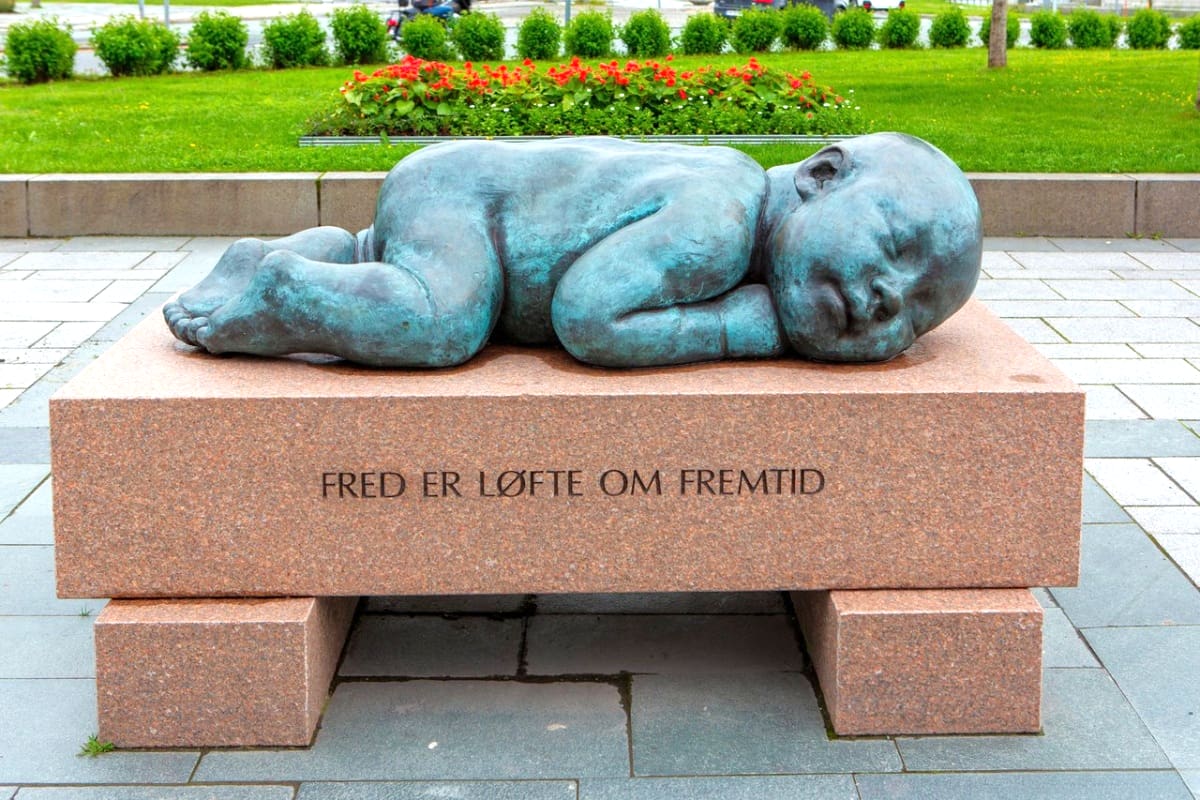
Photogenic setting. Located near the waterfront with mountains in the background, the statue is beautifully positioned for photography. I found the changing light throughout the day created different moods around the sculpture, making it worth visiting more than once.
Visitor experience. The statue is freely accessible year-round and is located within walking distance of most central hotels. A small plaque provides context in Norwegian and English, explaining the symbolism and historical background.
Nearby Points of Interest
- Narvik War Museum (5-minute walk)
- Harbor promenade (adjacent)
- City center shops and cafés (5-minute walk)
- Tourist information center (7-minute walk)
- Narvik Church (10-minute walk)
10. Hålogaland Bridge
Engineering marvel. Crossing the magnificent Hålogaland Bridge left me in awe of human engineering. Completed in 2018, this 1,533-meter suspension bridge spans the Rombaksfjord with a main span of 1,145 meters, making it one of Norway’s longest bridges.
Spectacular views. Driving across the bridge offers breathtaking panoramas of the surrounding fjords and mountains. I pulled over at the dedicated viewing platform on the northern side to take photos of this architectural wonder against its dramatic natural backdrop.
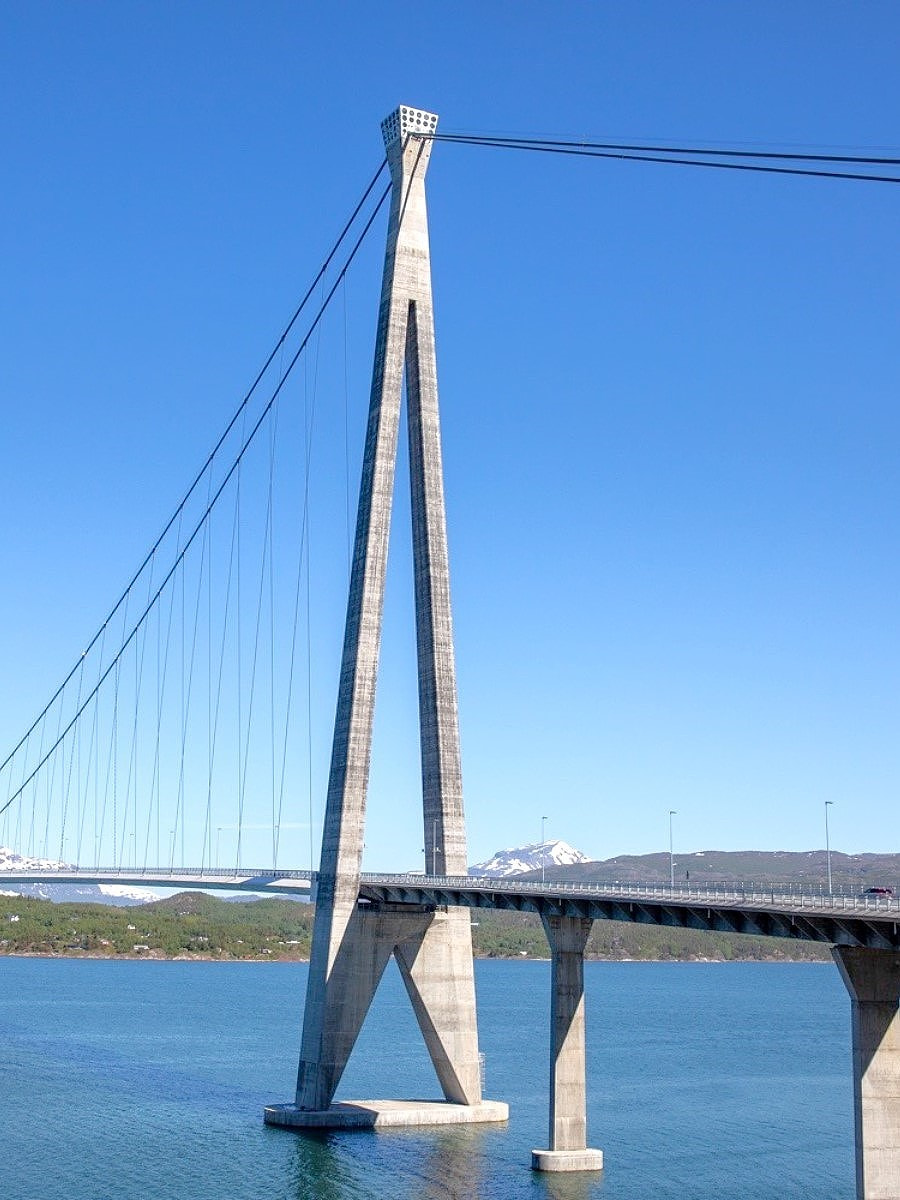
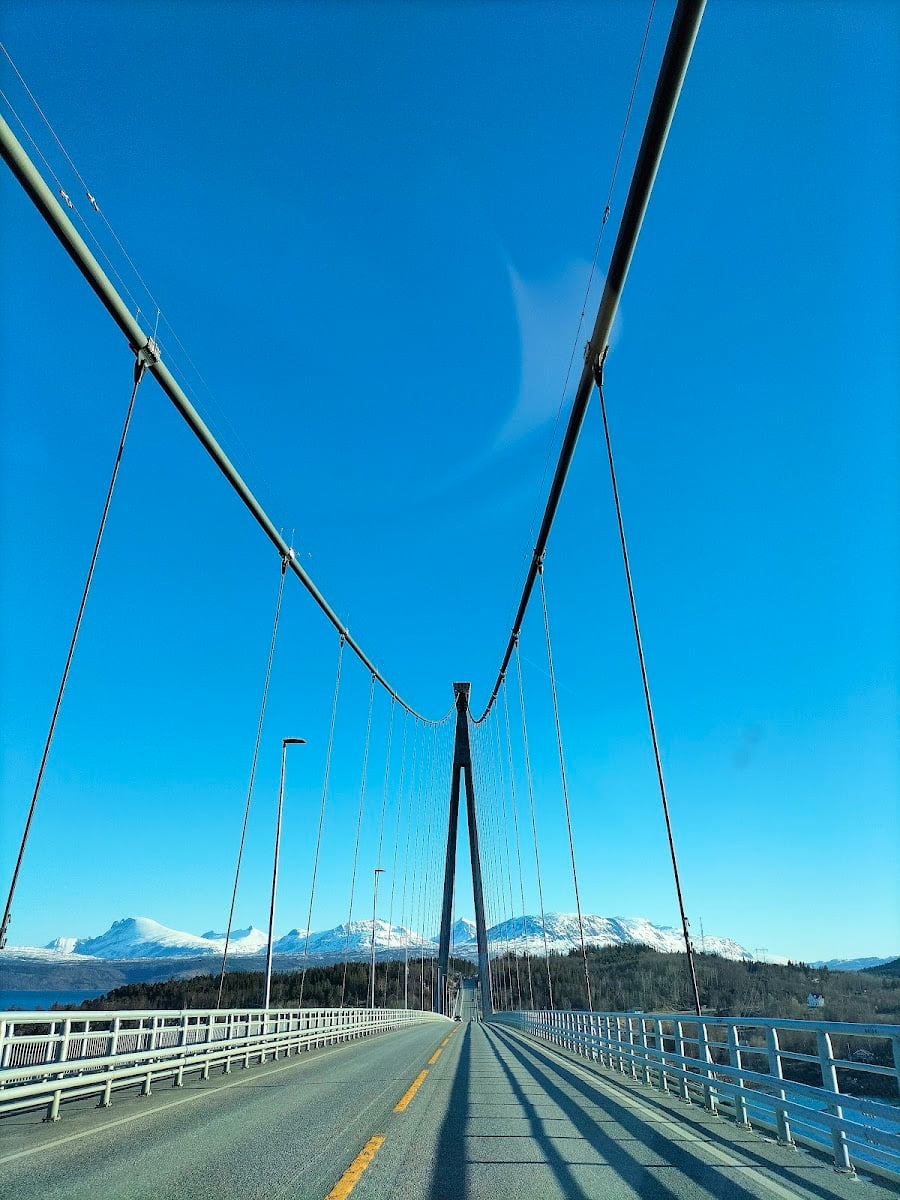
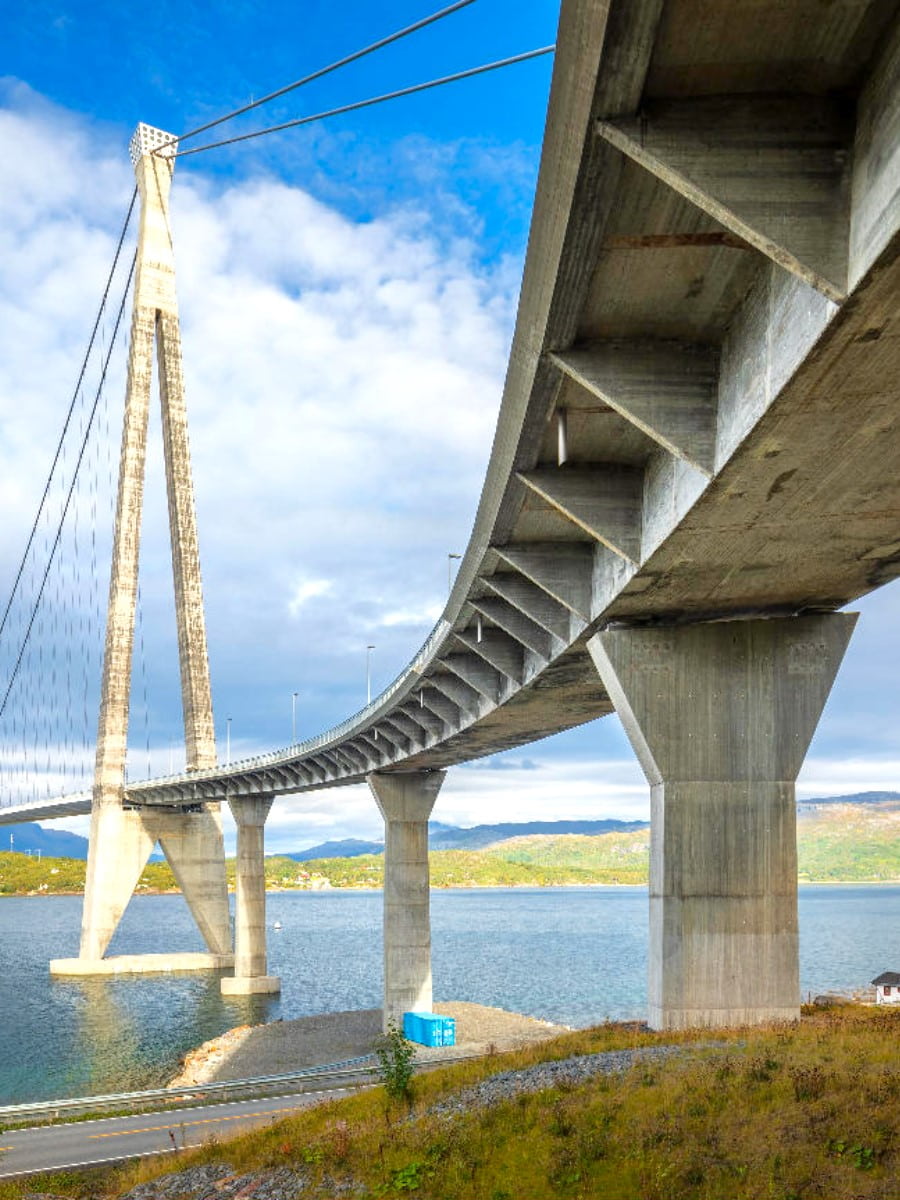
Economic importance. The bridge significantly shortened travel time along the E6 highway, bypassing the previous winding route around the fjord. I learned that it’s not just a tourist attraction but a vital link that has improved transportation for locals and businesses.
Architectural beauty. With its elegant design featuring two 175-meter towers, the bridge has become a landmark in itself. I was particularly impressed by how the architects managed to create a structure that complements rather than competes with the natural landscape.
Visitor experience. While primarily a transportation link, the bridge has become a popular spot for photographers. The viewing platform is accessible year-round and offers information panels about the bridge’s construction and the surrounding area.
Hålogaland Bridge Facts
| Feature | Measurement | Ranking |
|---|---|---|
| Total length | 1,533 meters | 3rd longest in the country |
| Main span | 1,145 meters | 2nd longest suspension span |
| Tower height | 175 meters | Among Norway’s tallest bridge towers |
| Clearance below | 40 meters | Allows large ships to pass underneath |
| Construction period | 2013-2018 | 5 years to complete |
Things to Do in Narvik with Kids
1. Polar Park Visit
Wildlife encounters. Just an hour’s drive from Narvik, the place gave my family the chance to see Arctic animals up close in near-natural habitats. As the world’s northernmost wildlife park, it specializes in Nordic species that are often difficult to spot in the wild.
Educational experience. What impressed me most was how the park balances entertainment with education. My children were fascinated by the informative presentations about each species, learning about their behaviors, habitats, and conservation challenges.
Unique opportunities. The park offers special experiences like “Wolf Kisses” where visitors can enter an enclosure with socialized wolves under expert supervision. Though pricey at 1,990 NOK (€175) per person, this once-in-a-lifetime experience was worth every krone for our family.
Practical details. Open year-round with seasonal hours, admission costs 295 NOK (€26) for adults and 195 NOK (€17) for children aged 3-15. I recommend allowing at least 3-4 hours to fully enjoy the park.
Animals You Can See
- Brown bears
- Wolves
- Lynx
- Wolverines
- Arctic foxes
- Moose
- Musk oxen
- European bison
- Various Nordic bird species
2. Dog Sledding and Reindeer Farm
Thrilling adventure. Dog sledding near Narvik provided our family with an exhilarating Arctic experience we’ll never forget. Bundled up against the cold, we glided through snow-covered forests behind an eager team of Alaskan huskies, their excitement contagious.
Educational component. Before hitting the trails, we learned about the history of dog sledding and its importance in Arctic cultures. My children were fascinated by the special relationship between mushers and their dogs, asking endless questions about training and care.
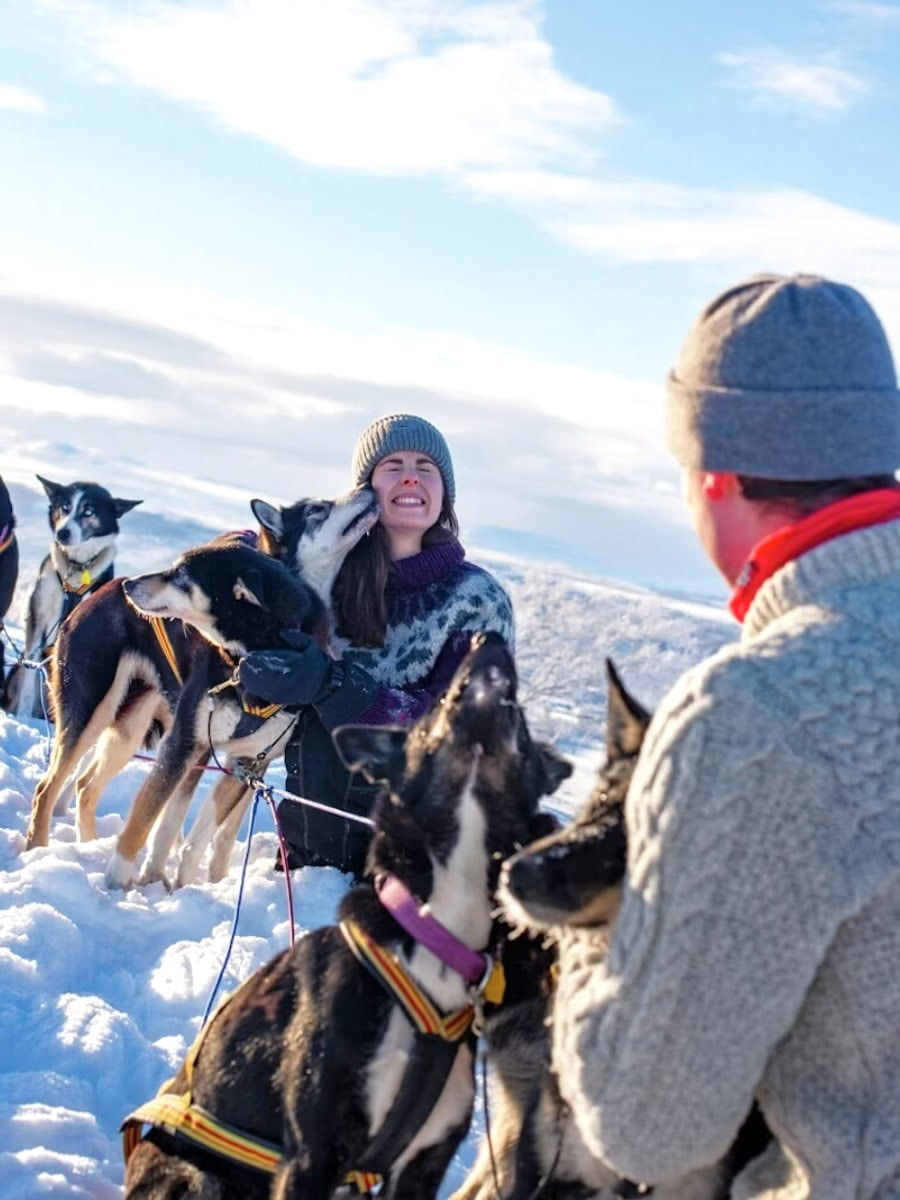
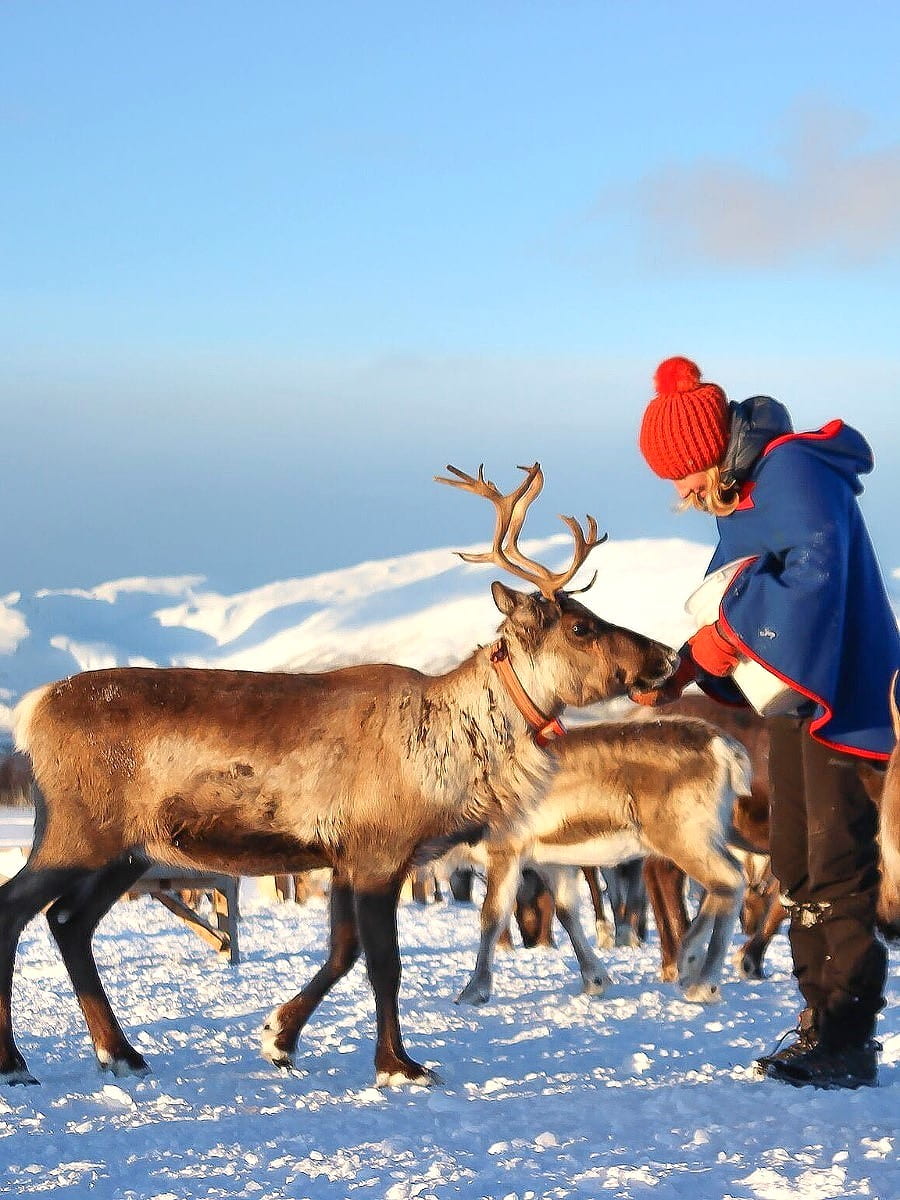
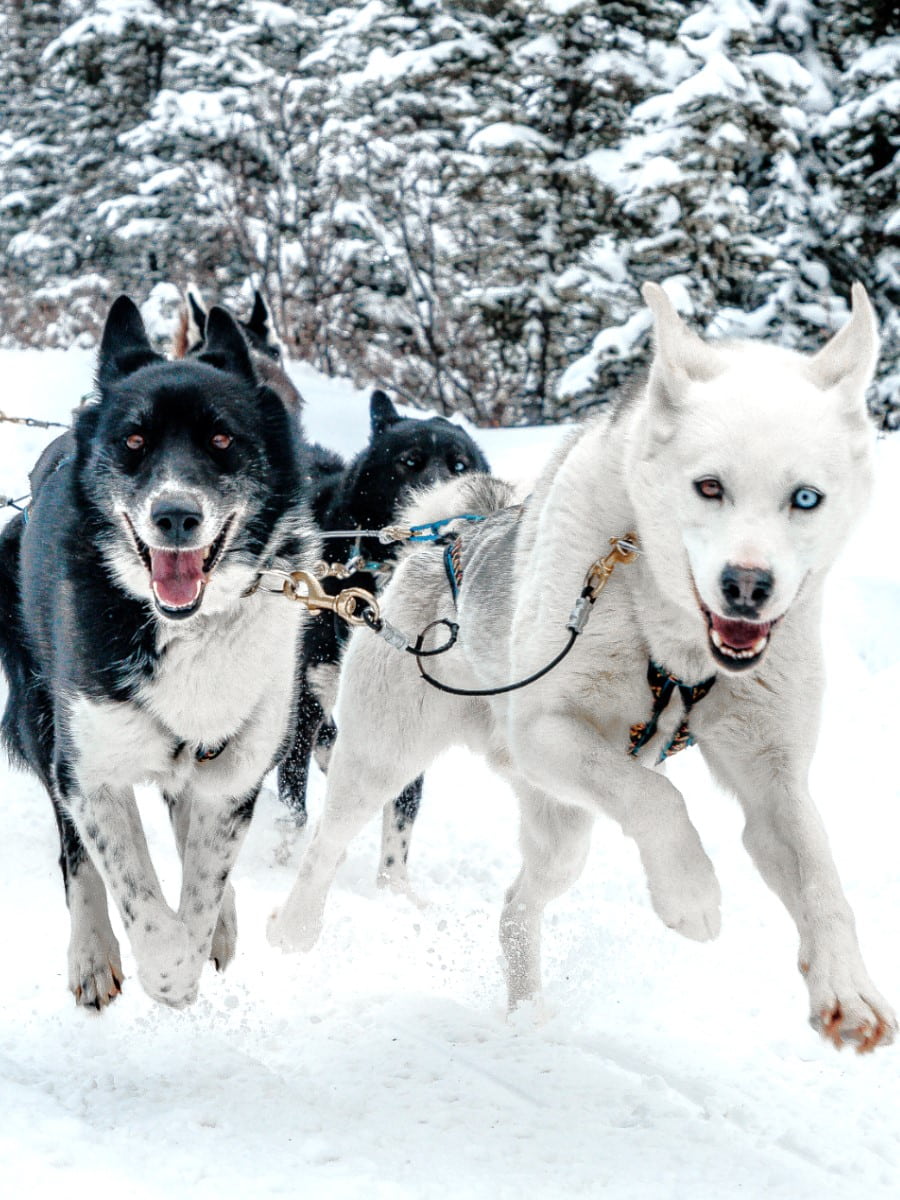
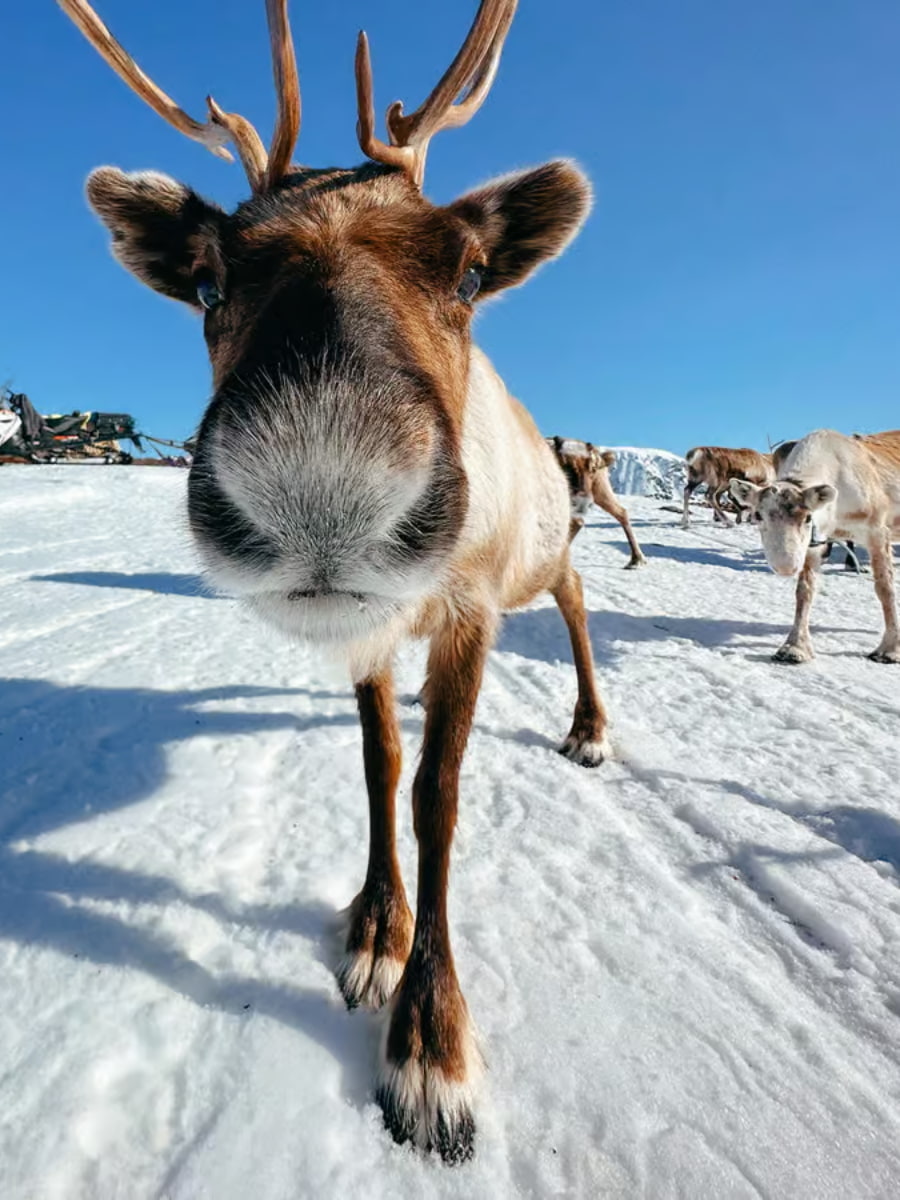
Hands-on experience. What made this activity special was the hands-on involvement. The guides taught us how to harness the dogs and basic commands, and even let the kids (under supervision) help manage the team. The pride on their faces when they helped steer was priceless.
Reindeer encounter. Many tour operators combine dog sledding with a visit to a Sami reindeer farm. We enjoyed feeding these magnificent animals while learning about Sami culture and traditional herding practices from indigenous guides who shared their heritage with us.
Tour options. Prices start from 950 NOK (€84) for a 2-hour experience, with full-day adventures including lunch in a lavvu (traditional Sami tent) available from 1,800 NOK (€159). Winter is prime season, but some operators offer summer “dry-land” sledding with wheeled sleds.
What to Wear for Dog Sledding
| Item | Recommendation | Rental Available? |
|---|---|---|
| Outer layer | Windproof, waterproof suit | Yes (usually included) |
| Mid layer | Wool or fleece | No (bring your own) |
| Base layer | Thermal underwear | No (bring your own) |
| Footwear | Insulated winter boots | Yes (usually included) |
| Accessories | Thick mittens, balaclava, goggles | Yes (usually included) |
⭐ Best Tours
- Narvik/Harstad: Day Tour of Fjords with Stop at Reindeer Farm – Explore the stunning fjords and Harstad with this comprehensive tour that includes a visit to a Sami reindeer farm, opportunities to spot wildlife like eagle rays and dolphins, and breathtaking viewpoints over the Norwegian landscape.
Free Things to Do in Narvik
1. Narvik Church Visit
Architectural beauty. Narvik Church (Narvik kirke) immediately caught my eye with its distinctive red brick exterior and elegant spire. Built in 1925 to replace the church destroyed during WWI, this Lutheran church stands as a symbol of the town’s resilience and renewal.
Peaceful sanctuary. Stepping inside, I was enveloped by a sense of tranquility. The simple yet beautiful interior features wooden pews, an impressive pipe organ, and stunning stained glass windows that cast colorful patterns across the space when the sun shines through.
Historical significance. What makes this church particularly special is that it survived the heavy bombing of Narvik during WWII. I noticed a few commemorative plaques honoring those who lost their lives during the war, adding a poignant historical dimension to my visit.
Musical heritage. If you’re lucky, you might catch the church’s excellent acoustics in action during a choir practice or organ recital. I happened to visit when the organist was practicing, and the magnificent sounds filling the space added another dimension to my experience.
Visitor information. The church is open to visitors most days, though hours vary depending on services and events. Remember this is an active place of worship, so dress respectfully and maintain a quiet demeanor during your visit.
Notable Features of Narvik Church
- Neo-Gothic architectural elements
- Beautiful stained glass windows
- Impressive pipe organ
- Memorial plaques from WWII
- Distinctive red brick exterior
2. Hiking Local Trails
Accessible nature. One of Narvik’s greatest gifts is its network of well-maintained hiking trails suitable for all fitness levels. I discovered that you don’t need to venture far from town to find yourself surrounded by pristine Arctic wilderness and breathtaking views.
Panoramic rewards. The trails around Narvikfjellet offer some of the most spectacular vistas I’ve experienced. Even on relatively short hikes, I was rewarded with sweeping panoramas of the fjord, mountains, and town below that made every step worthwhile.
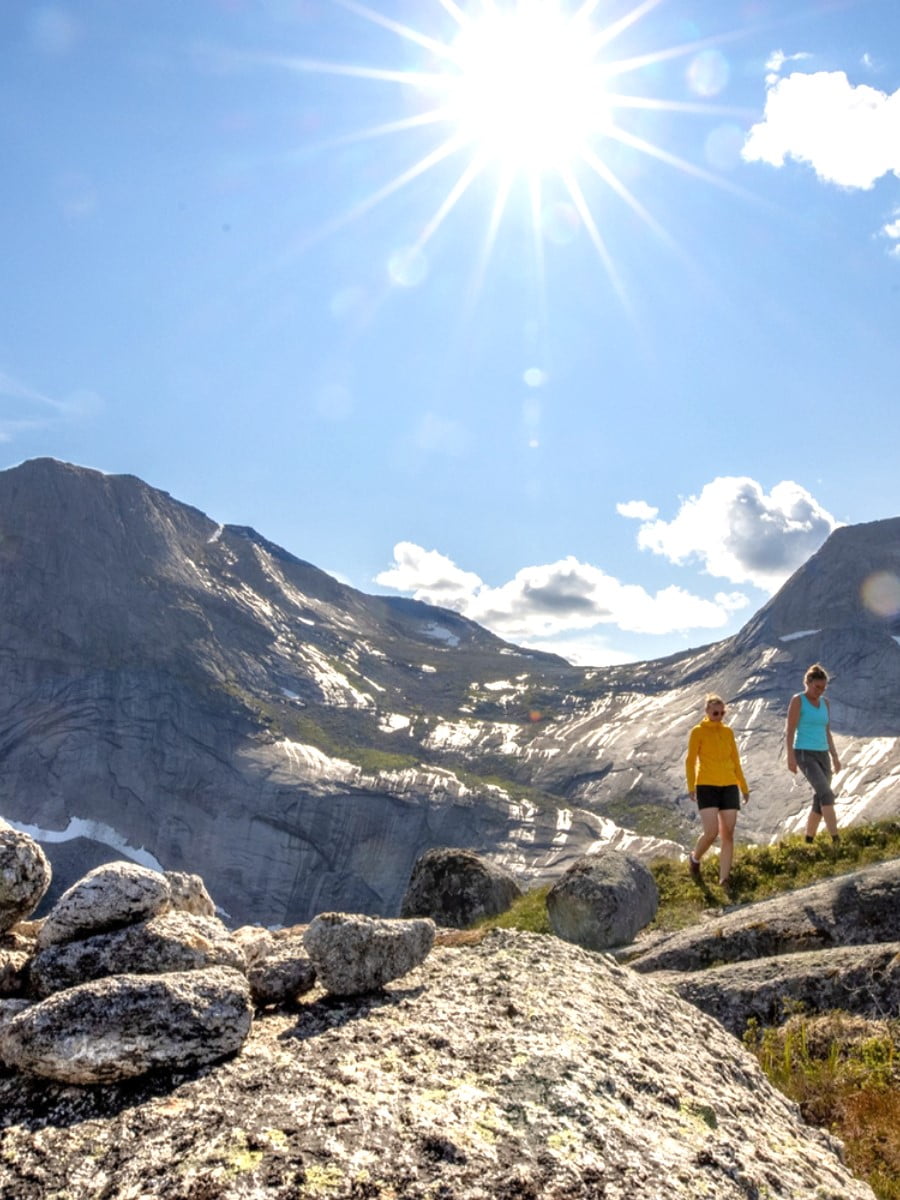
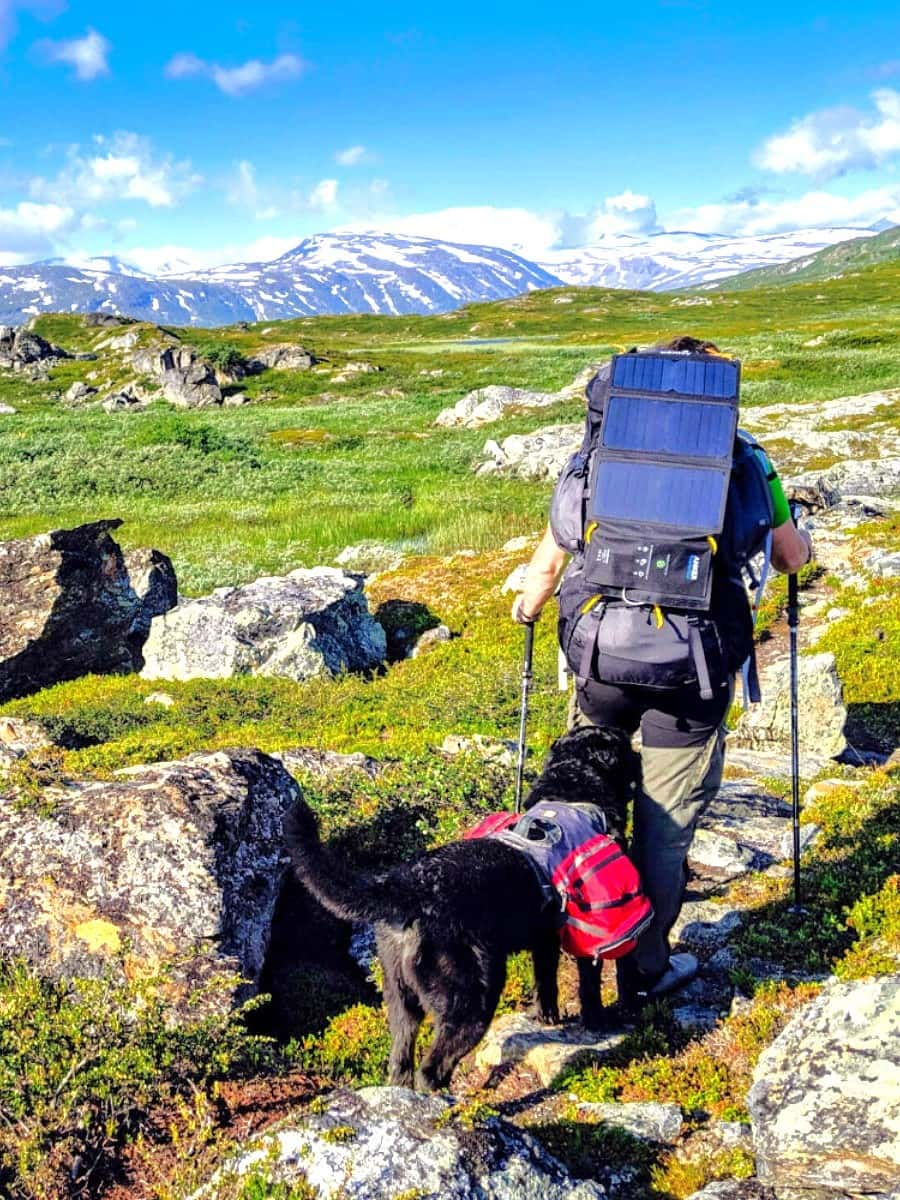
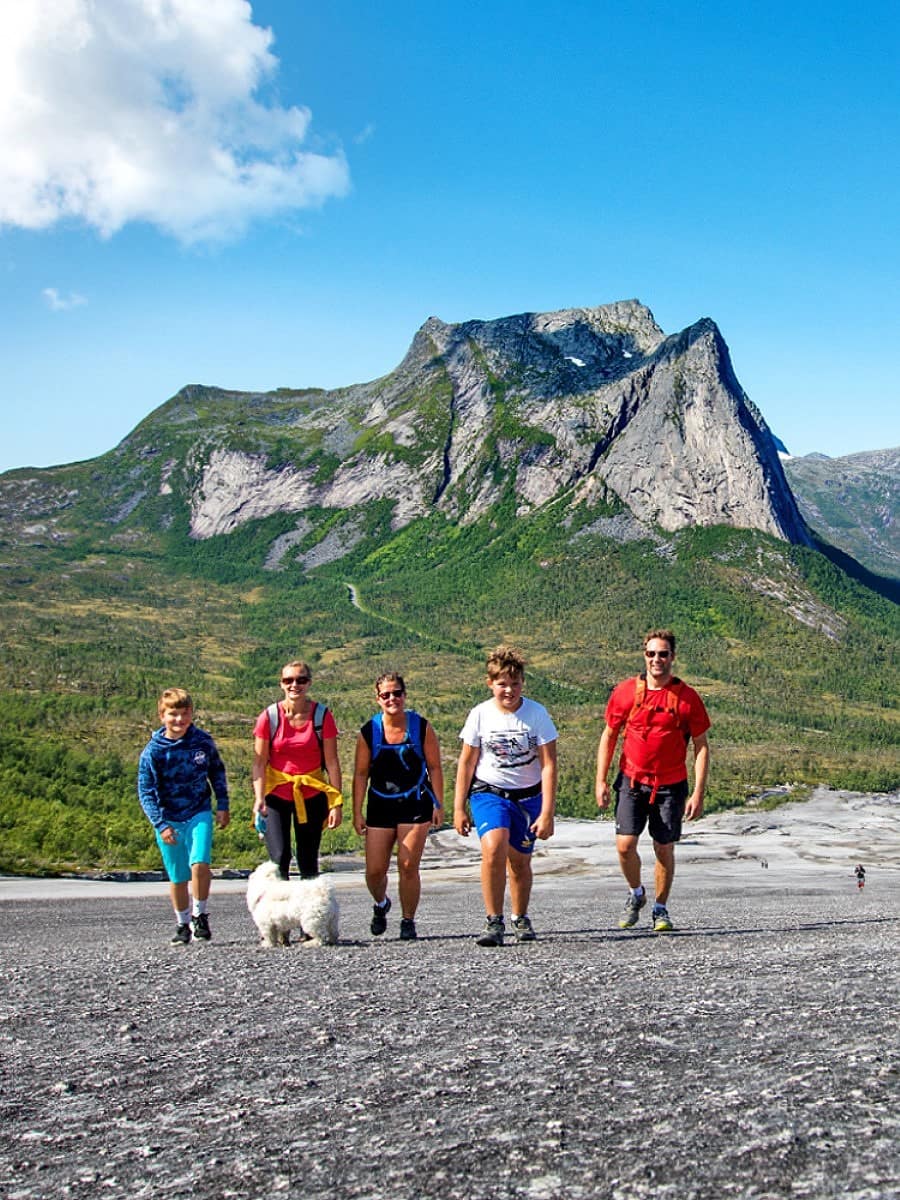
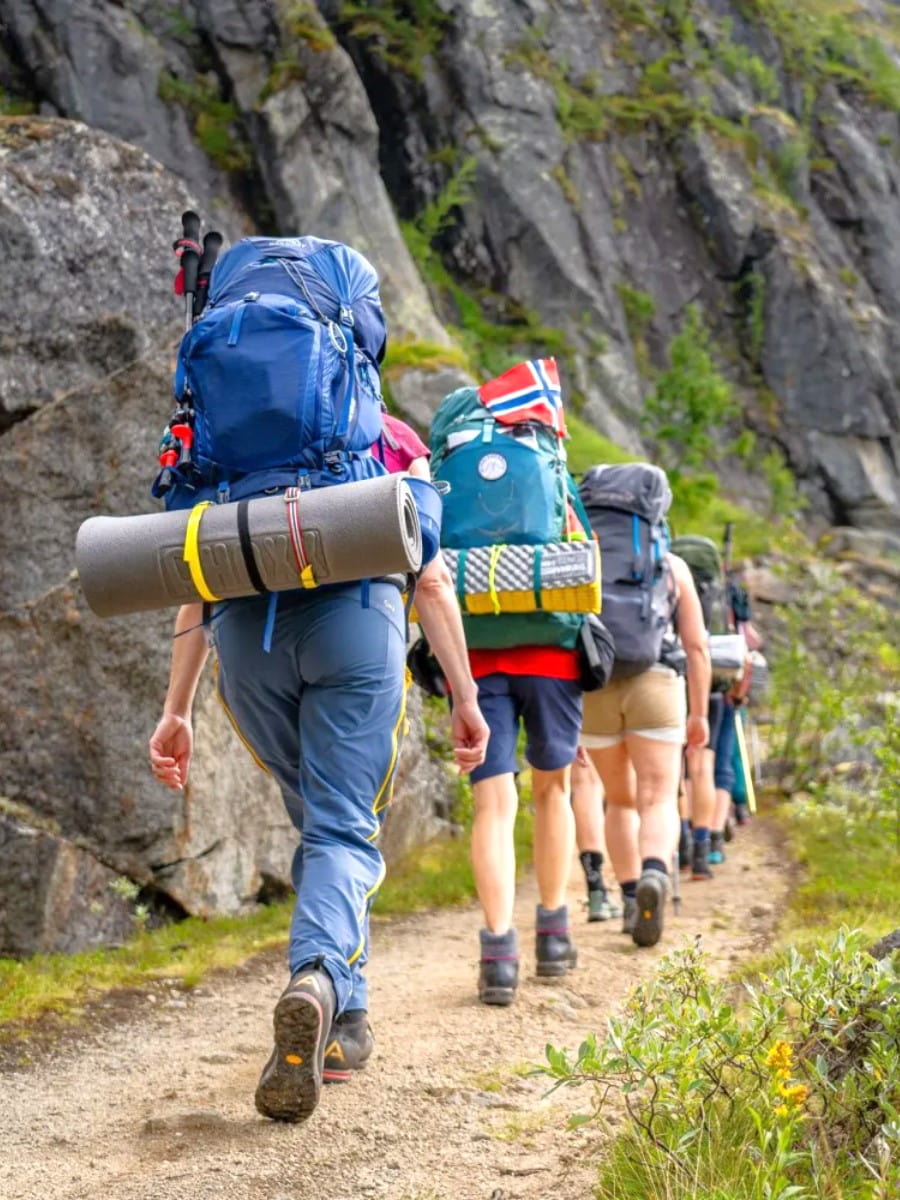
Seasonal variations. Each season transforms these trails into completely different experiences. I hiked in summer under the midnight sun, but locals told me about the magical winter landscapes when trails are converted for snowshoeing and cross-country skiing.
Trail information. The tourist office provides free maps of local trails with difficulty ratings and estimated times. I found the AllTrails app also offered good GPS tracking for the more popular routes around Narvik.
Recommended Trails by Difficulty
| Trail Name | Difficulty | Length | Elevation Gain | Highlights |
|---|---|---|---|---|
| Fjord Promenade | Easy | 3 km | Minimal | Waterfront views, urban trail |
| Taraldsvikfjellet | Moderate | 5 km | 400m | Town views |
| Rombaksbotn | Moderate | 8 km | 300m | Historical railway path |
| Skamdalsryggen | Challenging | 12 km | 800m | Alpine landscapes, ridge walk |
3. Public Art and Monuments Walk
Cultural exploration. I discovered that Narvik provides a surprising amount of public art and monuments that tell the story of this northern community. A self-guided walk through town revealed sculptures, murals, and memorials that provided insight into local history and culture.
War memorials. Given Narvik’s significant WWII history, several monuments commemorate the battles and those who lost their lives. I was particularly moved by the Norwegian-Polish friendship monument, honoring the Polish troops who fought alongside Norwegians in 1940.
Contemporary art. Beyond historical monuments, Narvik features modern public art that adds color and creativity to the urban landscape. I enjoyed discovering murals painted by both local and international artists, often reflecting themes of Arctic life and nature.
Self-guided tour. The tourist office provides a free map marking the locations of public art and monuments throughout Narvik. I found this walk particularly enjoyable in the evening when many pieces are dramatically lit against the Arctic sky.
Must-See Public Art in Narvik
- Peace Is a Promise of the Future statue
- Trinigon 3 Monument
- Norwegian-Polish friendship memorial
- Railway worker monument
- Contemporary murals in the town center
4. Midnight Sun Viewing (Summer)
Natural wonder. Experiencing this in Narvik was truly magical—watching the sun hover above the horizon, casting a golden glow across the landscape well past midnight. From late May to mid-July, the sun never fully sets, creating a surreal 24-hour daylight phenomenon.
Photography opportunities. The quality of light is unlike anything I’ve experienced elsewhere. I captured some of my best photos between 11 PM and 2 AM when the low-angled sunlight bathed the mountains and fjord in warm, golden hues.
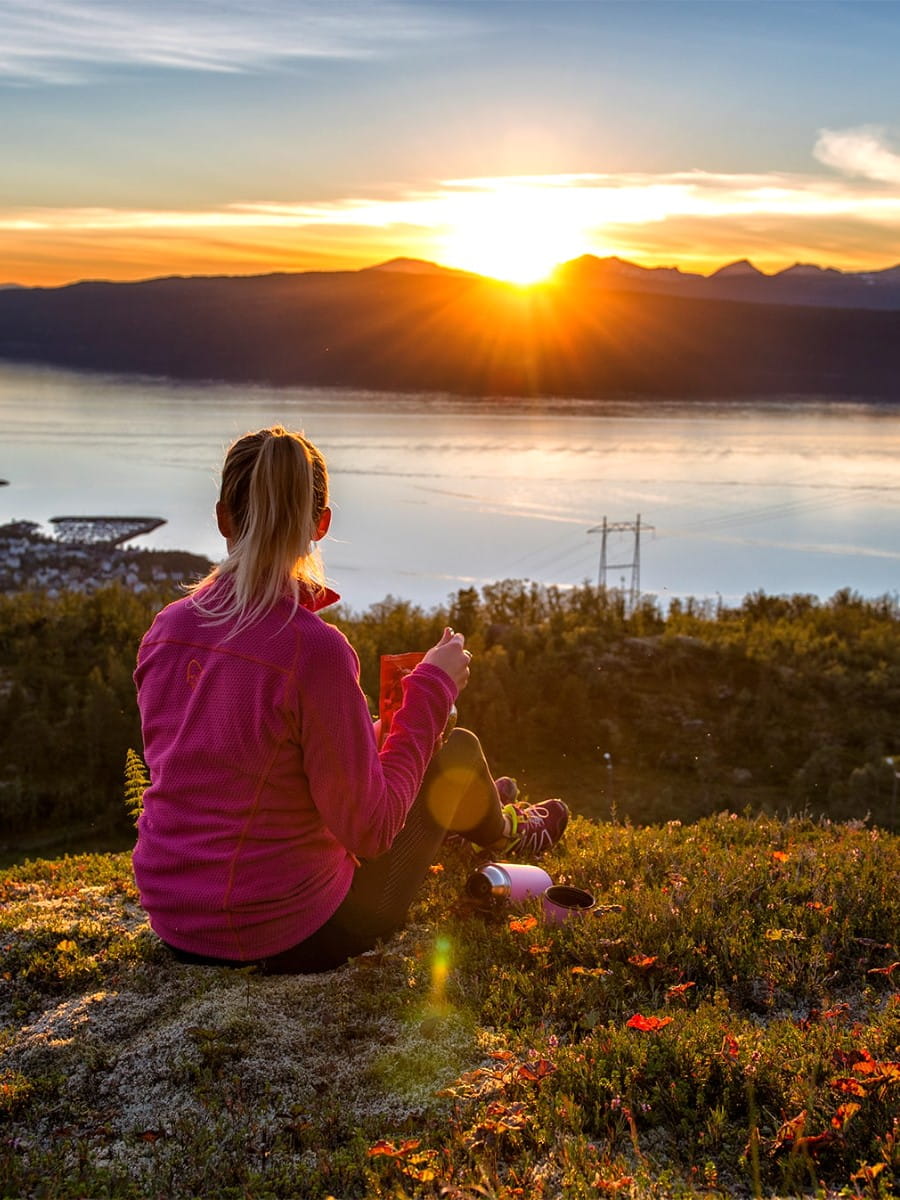
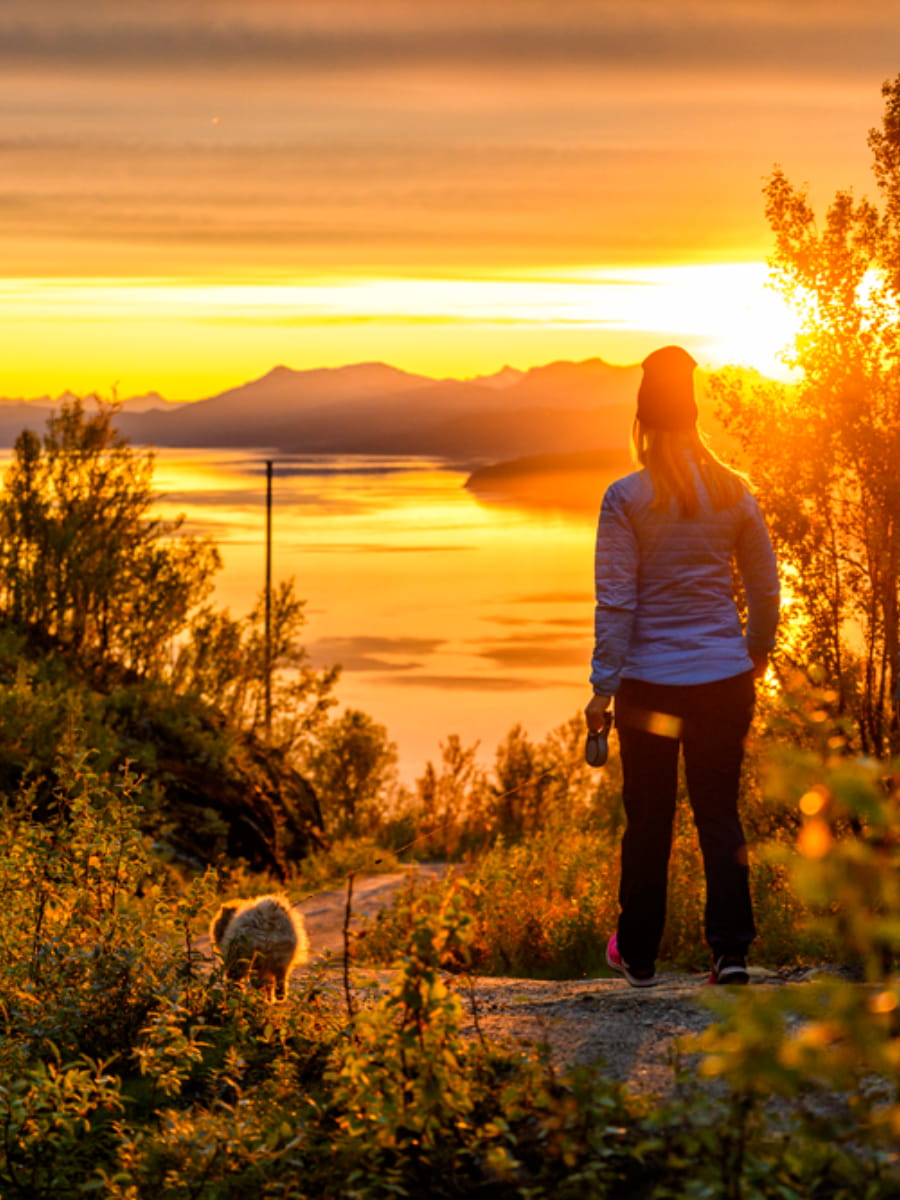
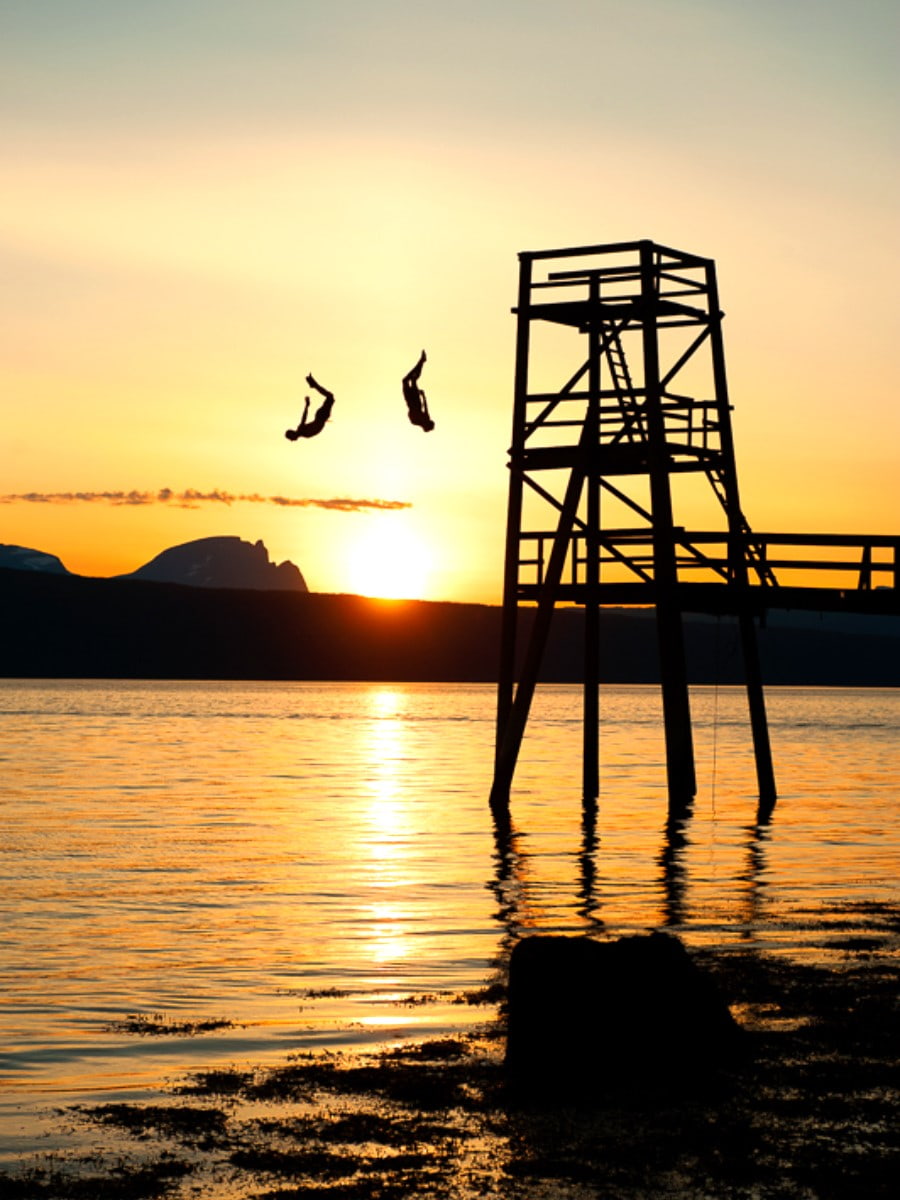
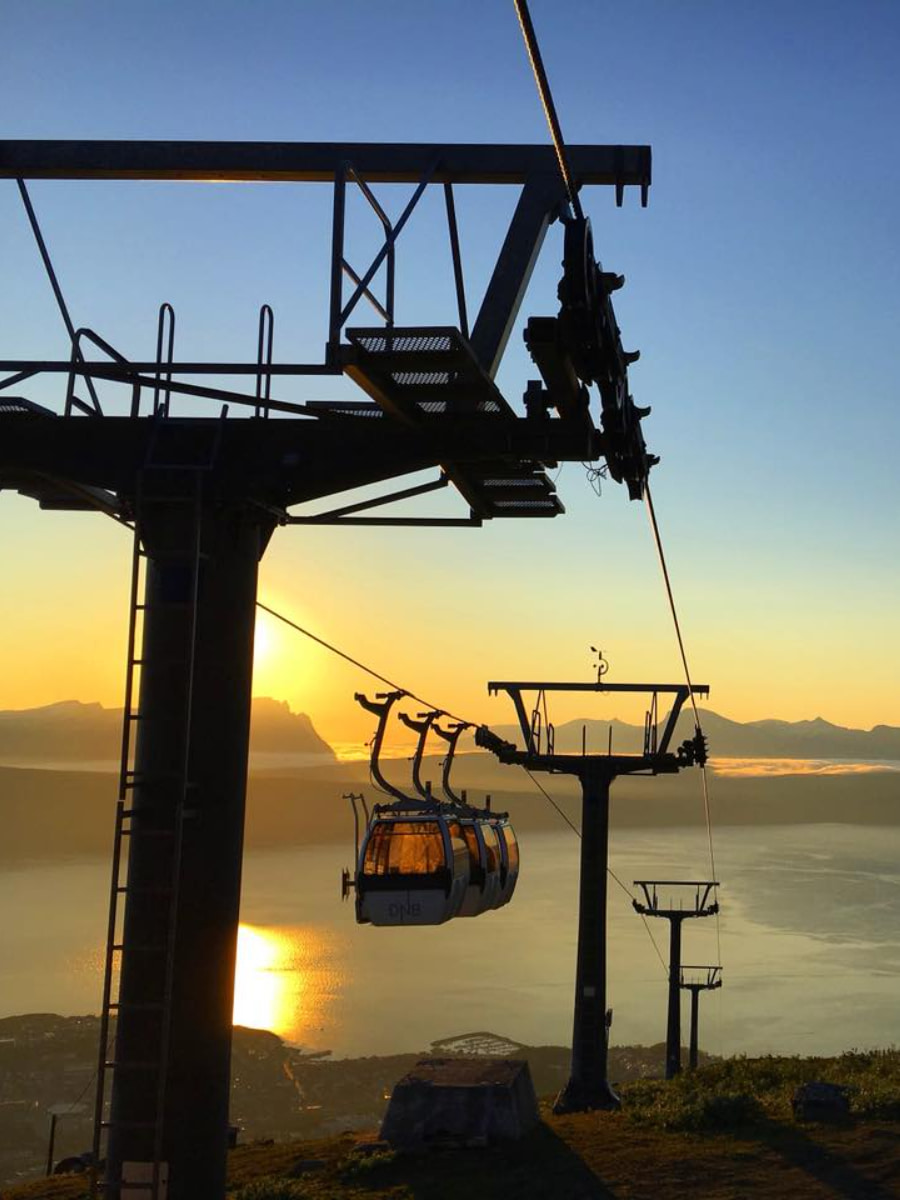
Local lifestyle. What fascinated me was observing how locals embrace these bright nights. I spotted people hiking, fishing, and even gardening well past midnight, making the most of the extended daylight hours after the long, dark winter.
Practical tips. While enjoying the experience, I found it helpful to bring sunglasses even at night and pack a light jacket as temperatures can drop despite the sunshine. Sleep masks are essential if you’re sensitive to light when trying to rest.
Best Viewing Locations
| Location | Distance from Center | Best Features | Facilities |
|---|---|---|---|
| Narvikfjellet | 2 km | Elevated views | Restaurant, toilets |
| Framnesodden | 3 km | Fjord reflections | Benches, parking |
| Ankenesstrand | 5 km | Beach setting, water views | Picnic area, parking |
| Skjombrua | 15 km | Mountain backdrop | Parking only |
5. Northern Lights Watching (Winter)
Celestial magic. Witnessing the Northern Lights dance across Narvik’s night sky was a bucket-list experience that exceeded all my expectations. The city’s location above the Arctic Circle makes it an excellent spot for northern lights hunting from September through March.
Unpredictable beauty. The lights appeared suddenly during my stay—green ribbons that twisted and pulsed across the sky, occasionally flashing with hints of purple and red. No photograph can truly capture the dynamic movement and the feeling of witnessing this natural light show.
Local expertise. I benefited greatly from local knowledge about aurora forecasting. The tourist office staff showed me how to use aurora prediction apps and suggested the best viewing spots based on that night’s forecast direction and intensity.
- Warm, layered clothing (temperatures can drop below -10°C)
- Thermos with hot drinks
- Headlamp with red light (preserves night vision)
- Camera with tripod for long-exposure photography
- Patience and flexibility with timing
Seasonal Activities in Narvik
Christmas in Narvik (Markets, Light Displays)
Arctic holiday magic. Experiencing Christmas in Narvik was like stepping into a winter wonderland straight from a storybook. The combination of snow-covered mountains, twinkling lights, and the polar night creates a uniquely magical atmosphere you won’t find in southern destinations.
Festive markets. The Christmas market in the town square (typically running from late November through December 23) became my favorite evening destination. Local artisans sell handcrafted gifts, while food stalls offer traditional treats like gløgg (mulled wine) and pepperkaker (gingerbread cookies).
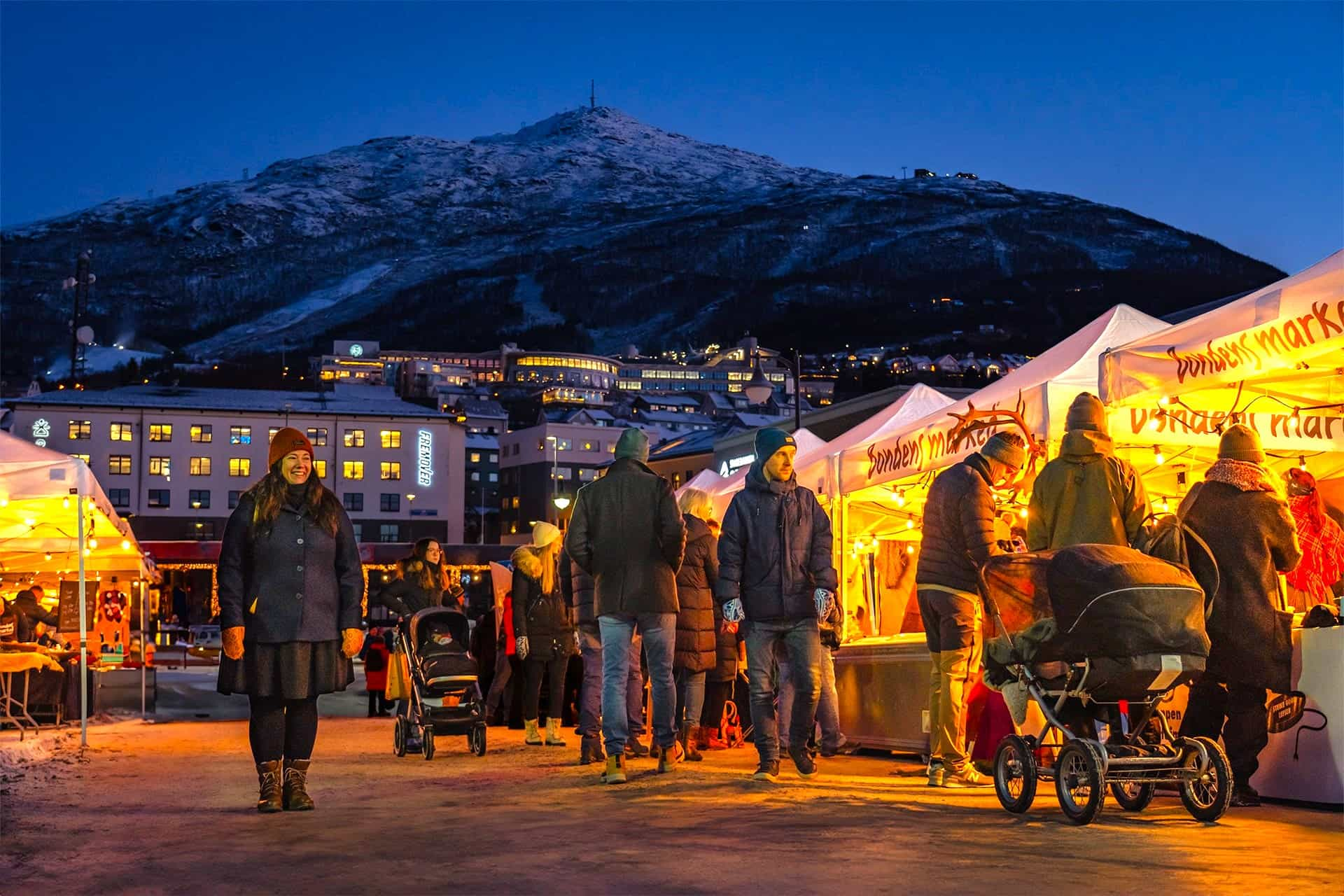
Light installations. During the polar night, when daylight is scarce, Narvik compensates with beautiful light displays throughout town. I was charmed by the illuminated ice sculptures and the creative light projections that transform ordinary buildings into works of art.
Traditional celebrations. I was fortunate to witness some uniquely Norwegian Christmas traditions, including Luciadagen (St. Lucia Day) on December 13, when children parade through town in white robes carrying candles, singing traditional songs that brightened the dark winter day.
Winter activities. The Christmas season in Narvik offers plenty of outdoor fun despite the darkness. I tried my hand at ice fishing on a frozen lake and joined a guided snowshoe walk through a forest decorated with fairy lights—both magical experiences enhanced by the holiday spirit.
Narvik Christmas Highlights
| Event/Activity | Dates | Location | Cost |
|---|---|---|---|
| Christmas Market | Nov 25-Dec 23 | Town Square | Free entry |
| St. Lucia Procession | December 13 | Throughout town | Free |
| Christmas Concert | Mid-December | Narvik Church | 200 NOK |
| Santa’s Workshop | Weekends in December | Cultural Center | 100 NOK for children |
| New Year’s Fireworks | December 31 | Harbor area | Free |
Summer Festivals and Events
Vibrant celebrations. Summer transforms Narvik into a hub of cultural activity, with festivals and events taking advantage of the night sun. I was surprised by how lively this Arctic town becomes when bathed in 24-hour daylight.
Narvik Summer Festival. The highlight of my visit was the Narvik Summer Festival (held annually in late June), featuring outdoor concerts, food markets, and cultural performances. The energy was incredible as music played well into the “night” under the still-bright sky.
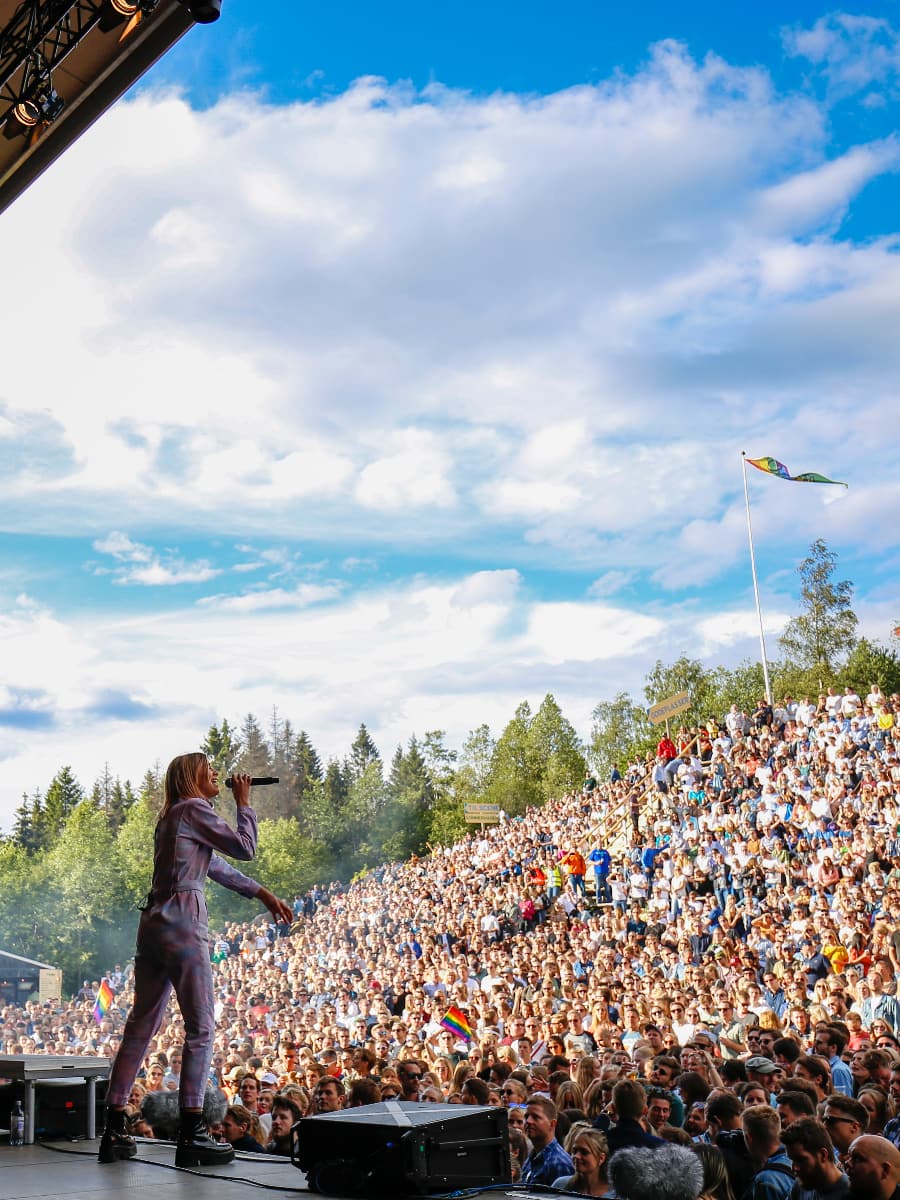
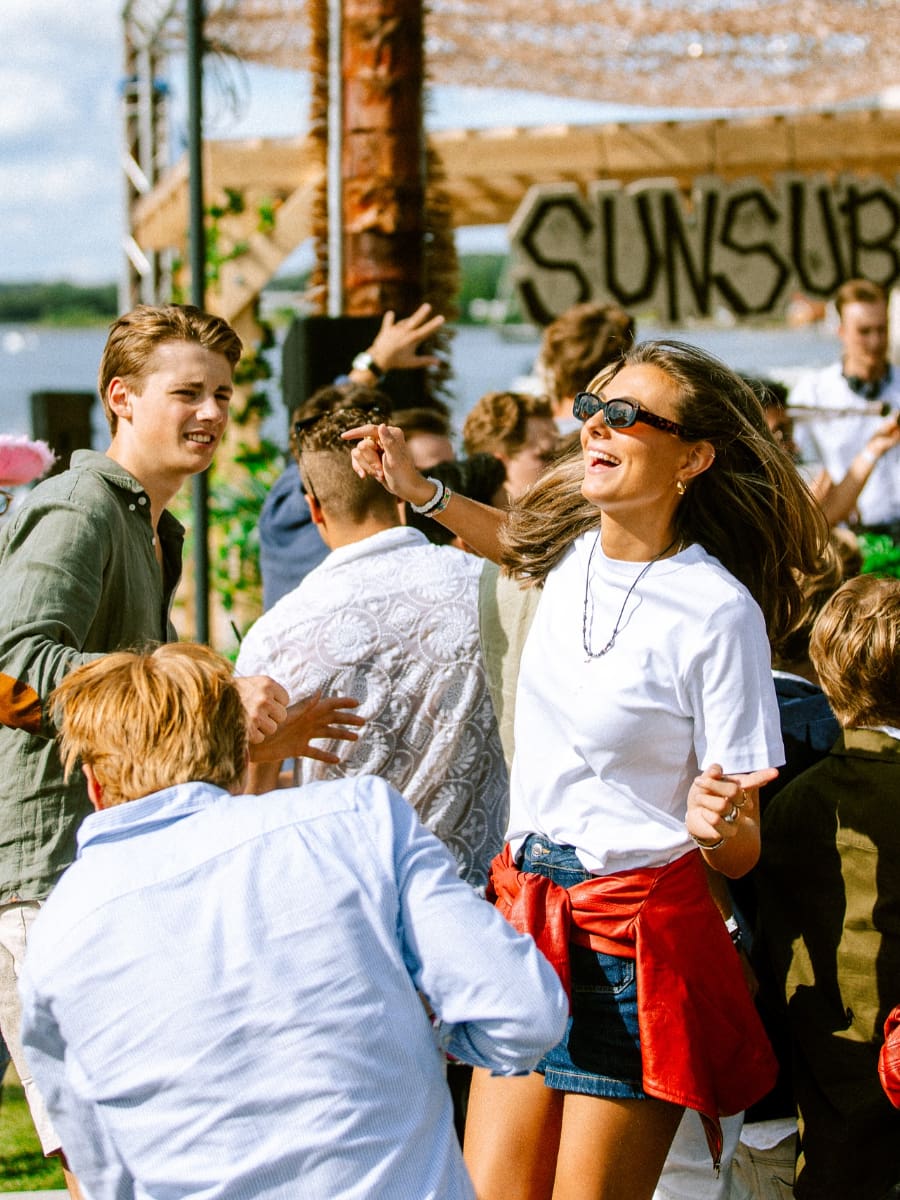
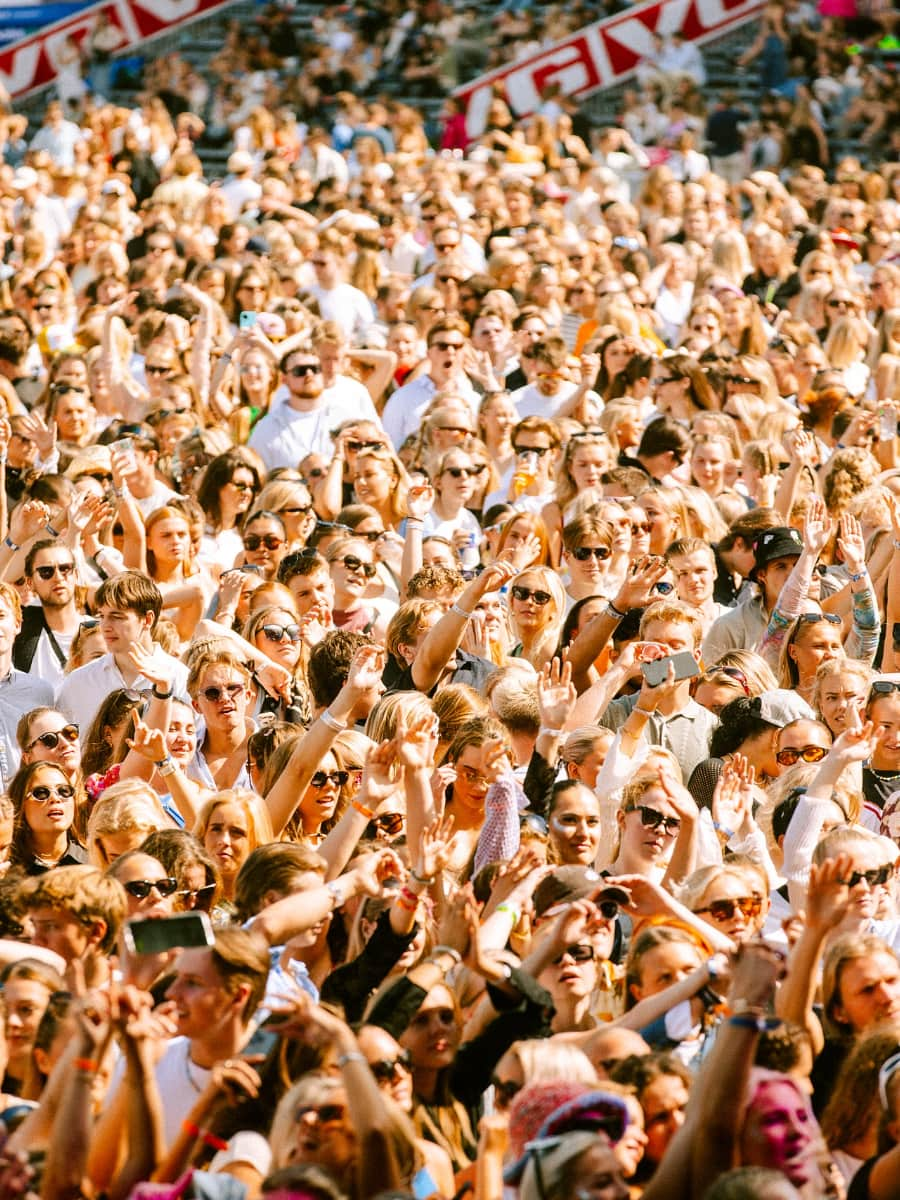
Outdoor concerts. Throughout summer, the harbor area hosts various concerts and performances. I attended a folk music show that began at 10 PM with the sun still high in the sky, creating a surreal but wonderful atmosphere that continued until the early morning hours.
Cultural celebrations. I was fortunate to experience Sami cultural events that showcase indigenous traditions through music, crafts, and food. The joik (traditional Sami singing) performances under the sun at midnight created an unforgettable connection to this ancient Arctic culture.
- Narvik Summer Festival (Late June)
- Folk Music Festival (Mid-July)
- Harbor Concert Series (Throughout summer)
- Sami Cultural Days (Early August)
Spring Blooms in Parks and Gardens
Arctic awakening. Experiencing spring in Narvik was a revelation—watching the landscape transform from winter white to vibrant green in what seemed like record time. After the long polar night, locals celebrate every sign of returning life with genuine enthusiasm.
Rapid transformation. What amazed me most was the speed of the seasonal change. In late April, patches of snow still covered the ground, but by mid-May, wildflowers were blooming everywhere. The extended daylight hours seem to supercharge plant growth in this northern region.
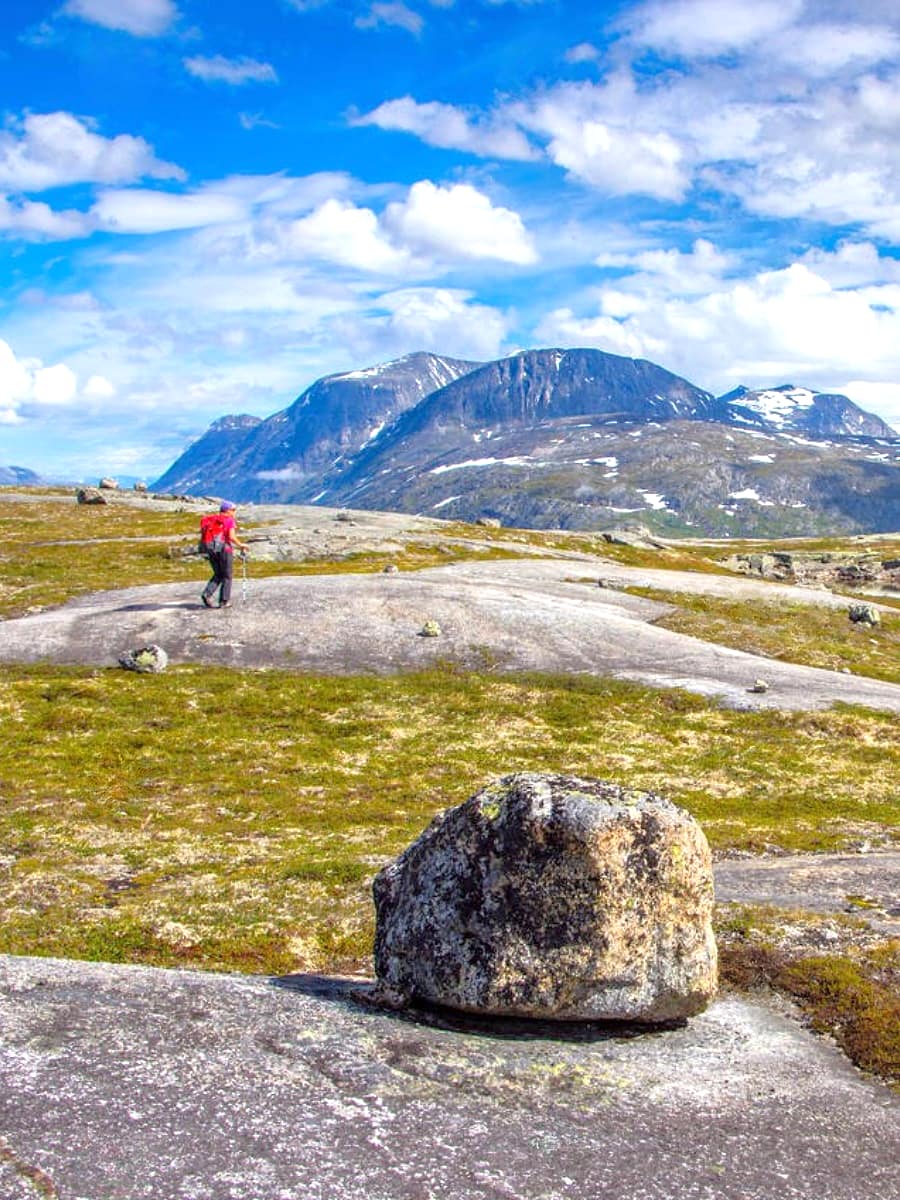
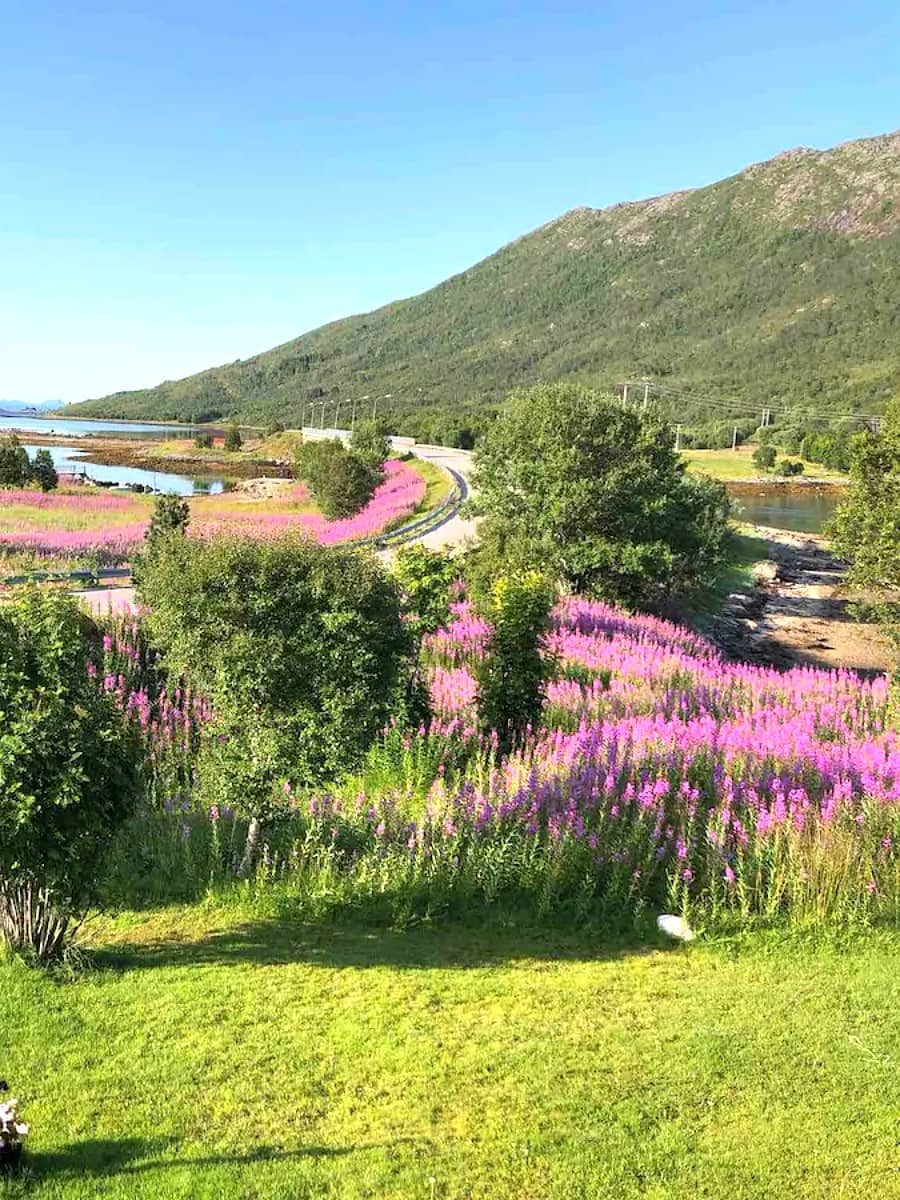
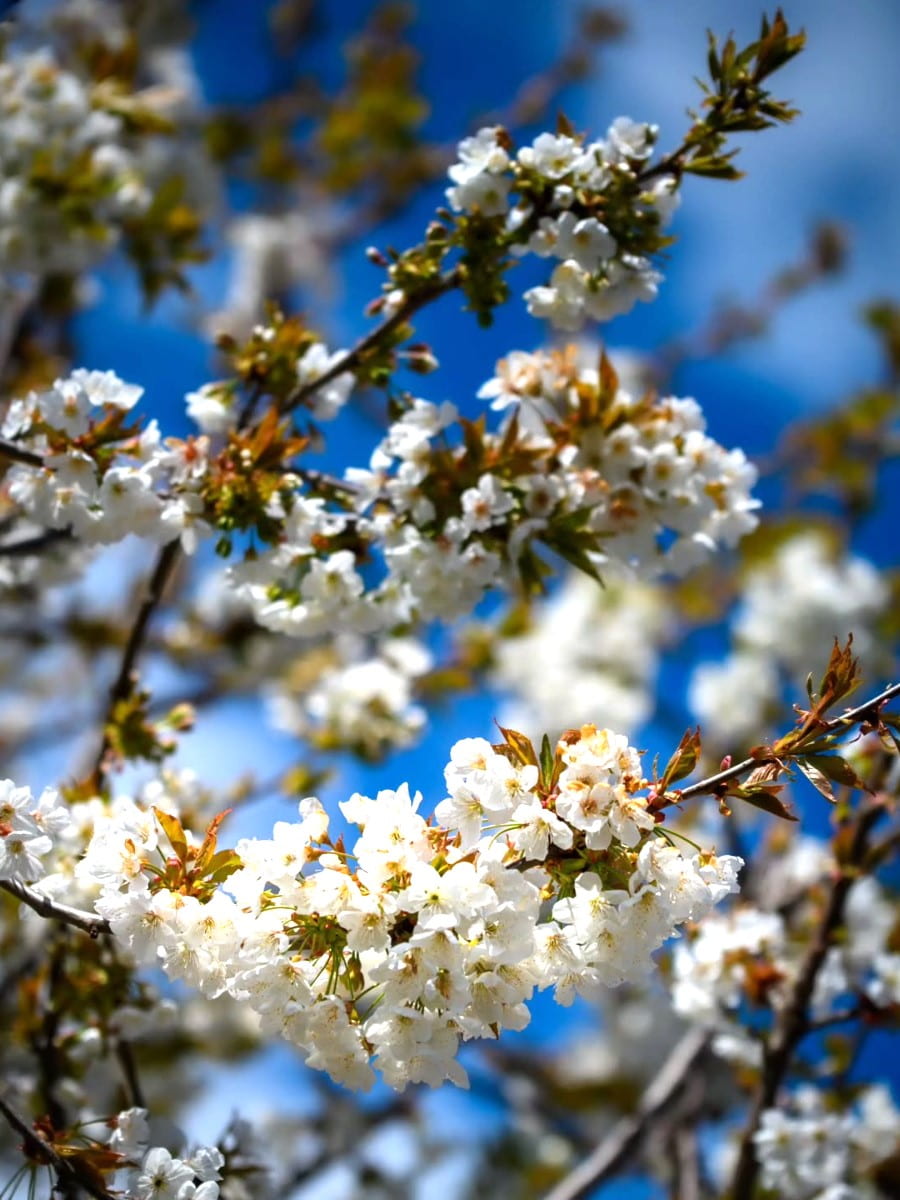
Park life. Narvik’s public parks burst into color from late May, with carefully maintained flowerbeds showcasing hardy Arctic varieties. I spent peaceful hours in the Town Park, watching locals soak up the sunshine after months of winter darkness.
Mountain flora. Hiking the lower slopes of Narvikfjellet in June revealed a surprising diversity of Alpine flowers. My guide pointed out delicate purple saxifrage, Arctic poppies, and mountain avens clinging to rocky outcrops—specialized plants adapted to the harsh conditions.
Photography opportunities. The combination of spring flowers, snow-capped mountains, and blue fjord waters created stunning photo opportunities. I found early morning light best for capturing the vibrant colors against dramatic backdrops.
Spring Wildflowers of Narvik Region
| Flower | Blooming Period | Habitat | Characteristics |
|---|---|---|---|
| Mountain Avens | May-June | Rocky slopes | White flowers with yellow centers |
| Arctic Poppy | June-July | Gravelly areas | Delicate yellow blooms |
| Purple Saxifrage | May-June | Rock crevices | Early-blooming purple flowers |
| Dwarf Cornel | June | Forest floors | White flowers, red berries later |
| Cloudberry | June | Boggy areas | White flowers, amber berries in late summer |
Autumn Foliage Walks and Photography
Spectacular colors. Autumn in Narvik treated me to a breathtaking display of colors that rivaled any fall foliage I’ve seen elsewhere. From mid-September to early October, the mountain slopes transform into a patchwork of gold, orange, and deep red against the evergreen backdrop.
Perfect timing. The peak color period is relatively short but intense, typically lasting from mid-September to early October. I found the second half of September offered the most vibrant displays before the first snows began dusting the higher elevations.
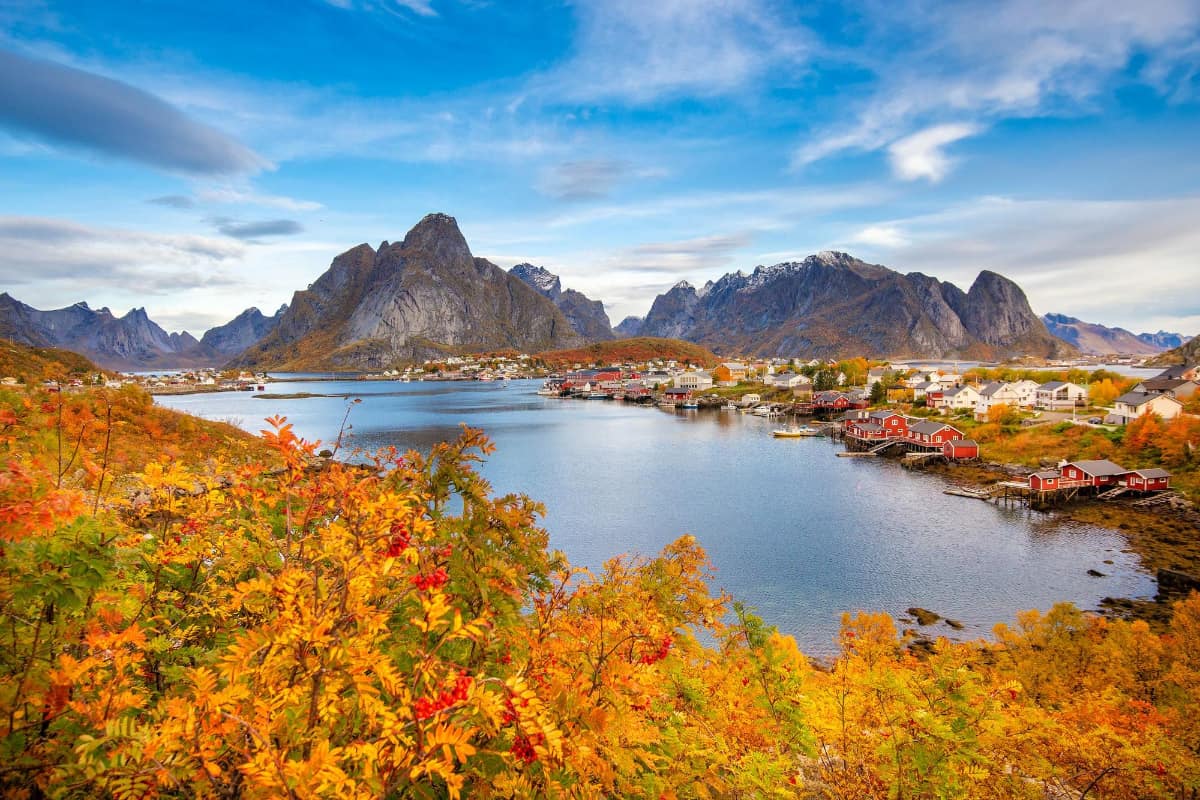
Photographer’s paradise. The combination of colorful foliage, mountain backdrops, and fjord reflections created perfect photography conditions. I captured some of my best landscape shots during early morning and late afternoon when the low-angled light enhanced the autumn colors.
Tranquil experience. With fewer tourists than summer, autumn offered a peaceful atmosphere for exploring. I enjoyed having popular trails almost to myself, with only the occasional local walker sharing the spectacular scenery.
Weather considerations. Autumn weather in Narvik can be unpredictable, with beautiful sunny days quickly giving way to rain or early snow. I learned to be flexible with my plans and always carried waterproof gear, which paid off when capturing dramatic stormy skies over the colorful landscape.
- Narvikfjellet lower trails (accessible via cable car)
- Rombaksbotn historical railway path
- Hålogaland Bridge viewpoint (morning light)
- Ankenes forest paths
- Skjomen fjord road (multiple pullouts with views)
Day Trips from Narvik
1. Bardu
Wildlife immersion. My day trip to Bardu (about 80 km from Narvik) offered an unparalleled opportunity to see Arctic wildlife in near-natural habitats. The park’s spacious enclosures house animals that would be nearly impossible to spot in the wild.
Predator encounters. The highlight was undoubtedly the predator section featuring wolves, bears, lynx, and wolverines. I timed my visit to coincide with feeding time, which provided fascinating insights into their behavior and impressive hunting adaptations.
Knowledgeable guides. What elevated the experience was the passionate staff who shared fascinating facts about each species. I learned about conservation efforts, behavioral patterns, and the challenges these animals face in the wild due to habitat loss and climate change.
Visitor Information
| Detail | Information |
|---|---|
| Opening Hours | 10:00-16:00 (extended in summer) |
| Adult Admission | 295 NOK (€26) |
| Child Admission (3-15) | 195 NOK (€17) |
| Special Experiences | Wolf Visit: 1,990 NOK per person |
| Facilities | Café, gift shop, restrooms, picnic areas |
| Best Time to Visit | Feeding times (posted daily) |
2. Abisko National Park (Sweden)
Cross-border adventure. Just a 1-hour train ride from Narvik, this park in Sweden offered me a completely different Arctic landscape to explore. Crossing the border was seamless, with the train handling all the formalities while I enjoyed the spectacular scenery.
Hiking paradise. Abisko features well-marked trails ranging from easy walks to challenging treks. I chose the trail to Abisko Canyon, where turquoise waters have carved a dramatic gorge through the mountains—a relatively easy 4 km round trip that delivered stunning views.
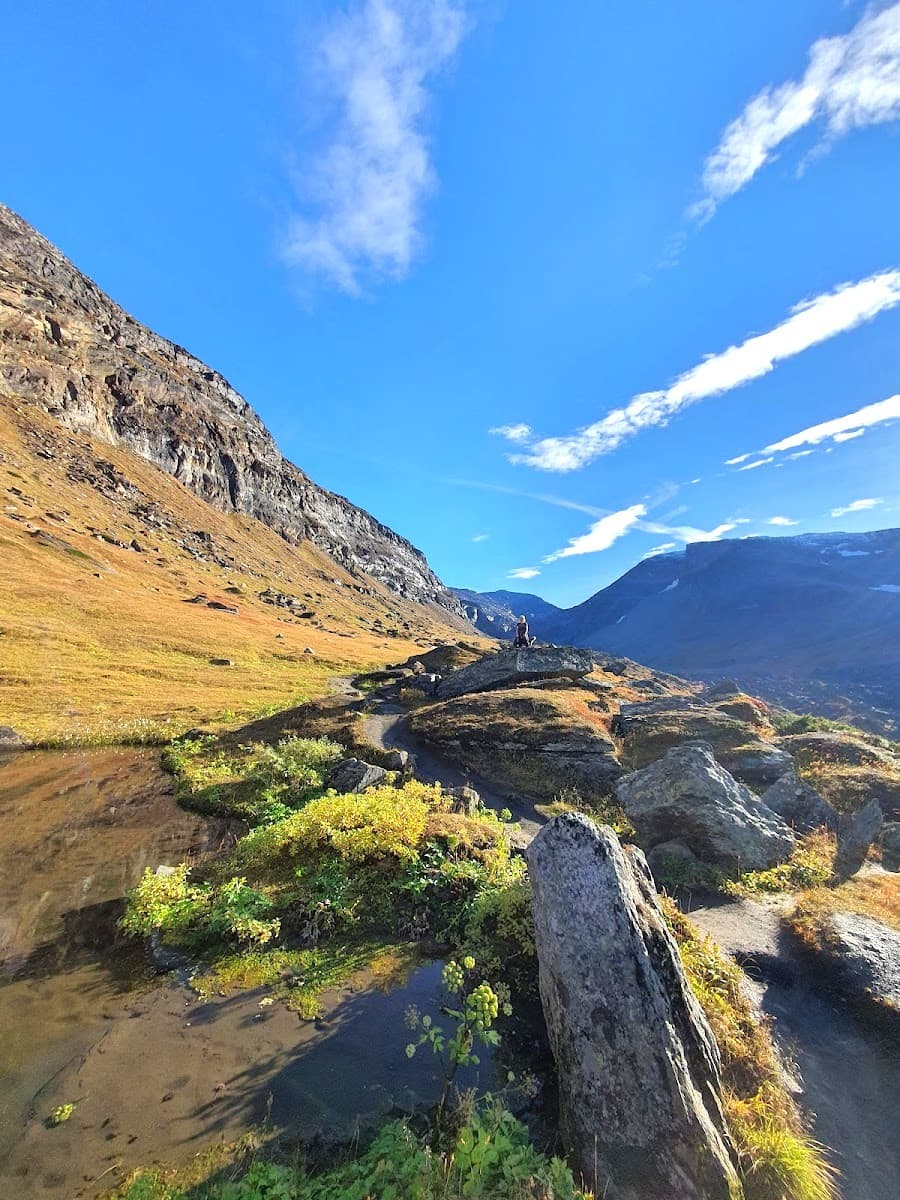
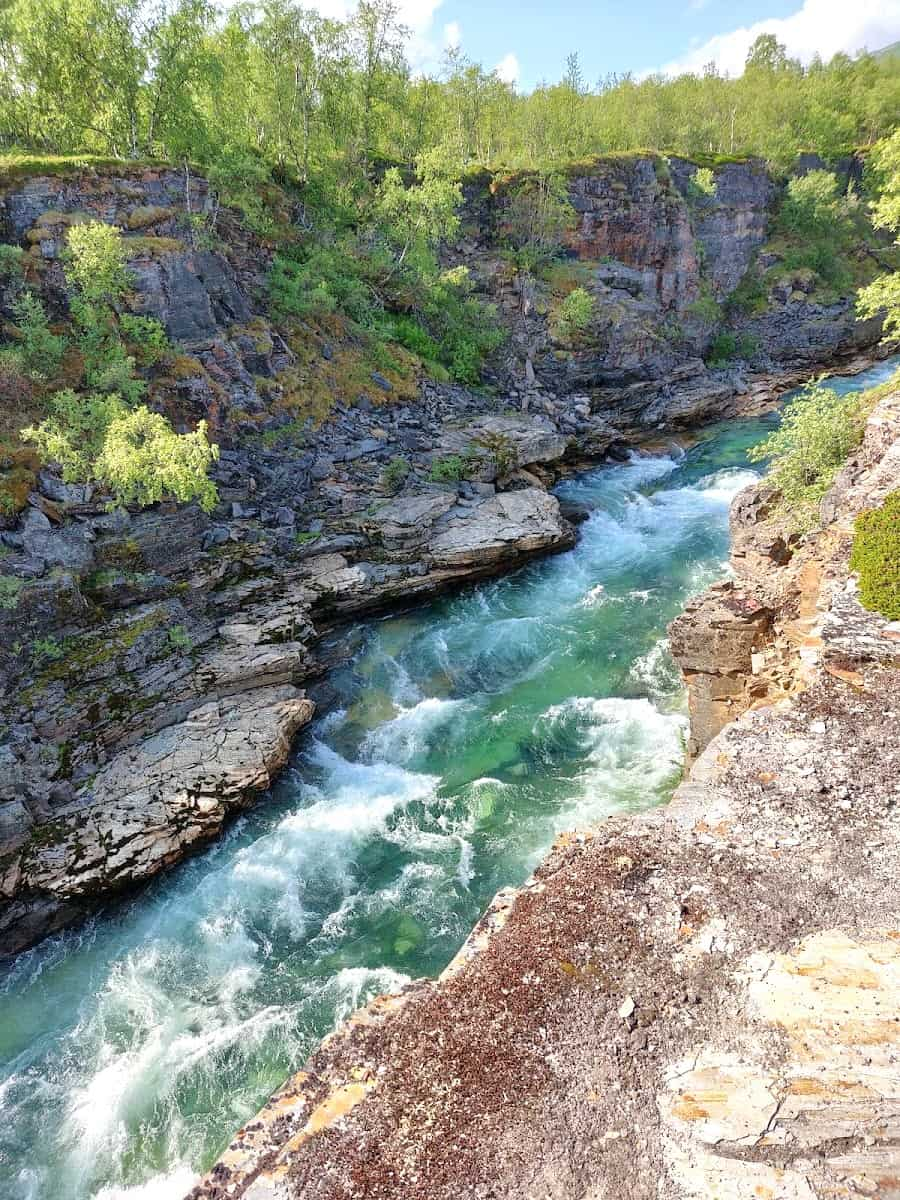
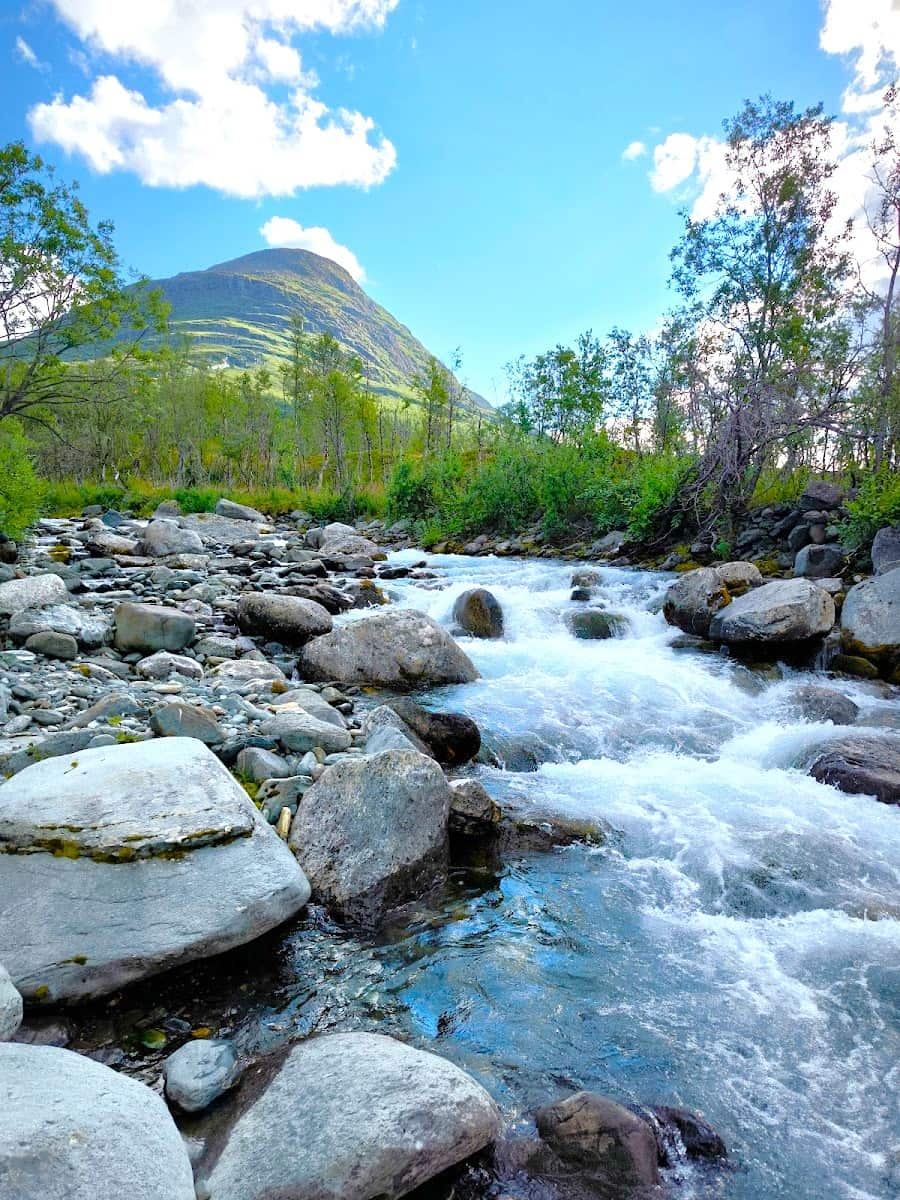
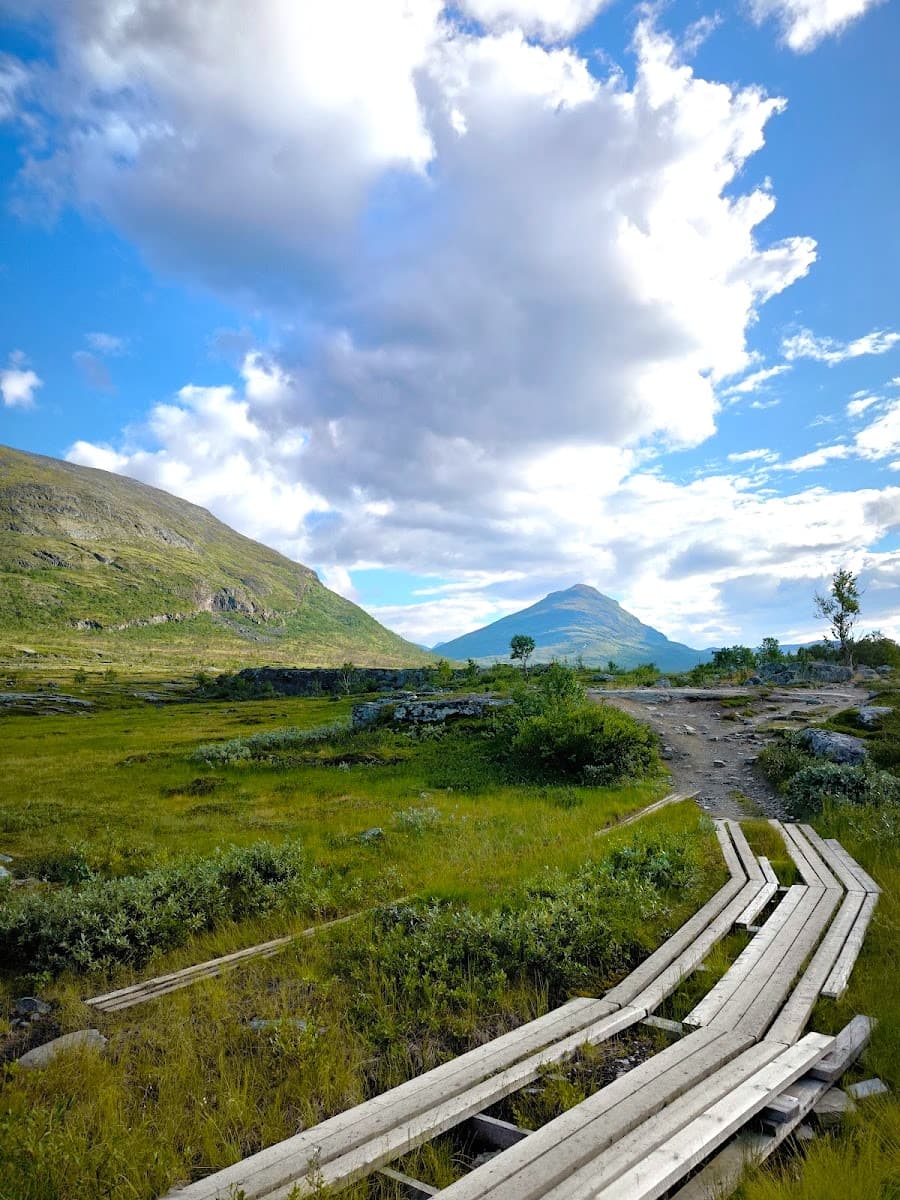
Hotspot. Though my visit was in summer, Abisko is renowned as one of the world’s best Northern Lights viewing locations due to its unique microclimate. The Aurora Sky Station on Mount Nuolja operates during winter months, offering guided viewing from its elevated position.
Kungsleden trailhead. Abisko marks the northern starting point of the famous Kungsleden (King’s Trail), Sweden’s most celebrated long-distance hiking route. Even if you’re not tackling the full trail, walking the first few kilometers gives you a taste of this iconic path.
Practical considerations. Trains run several times daily between Narvik and Abisko (ticket: approximately 250 NOK/€22 each way). The national park has no entrance fee, but accommodations at Abisko Tourist Station should be booked well in advance during peak seasons.
- Abisko Canyon and its suspension bridge
- Abisko Scientific Research Station
- Start of the legendary Kungsleden trail
- Lake Torneträsk (Sweden’s sixth-largest lake)
⭐ Best Activities
- Morning Hike in Abisko National Park – Enjoy a refreshing morning hike in the beautiful Abisko National Park, located near the Norway-Sweden border not far from Narvik.
3. Rombaksbotn Fjord Cruise
Scenic journey. The boat trip itself was spectacular, navigating through narrow fjord passages flanked by steep mountain walls. I was mesmerized by waterfalls cascading directly into the fjord and the changing perspectives as we ventured deeper into this isolated arm of the sea.
Ghost town exploration. Arriving at Rombaksbotn, I explored the remnants of what was once a bustling community. Foundation stones, rusted equipment, and informational signs helped me imagine the challenging lives of the railway workers who once called this remote spot home.

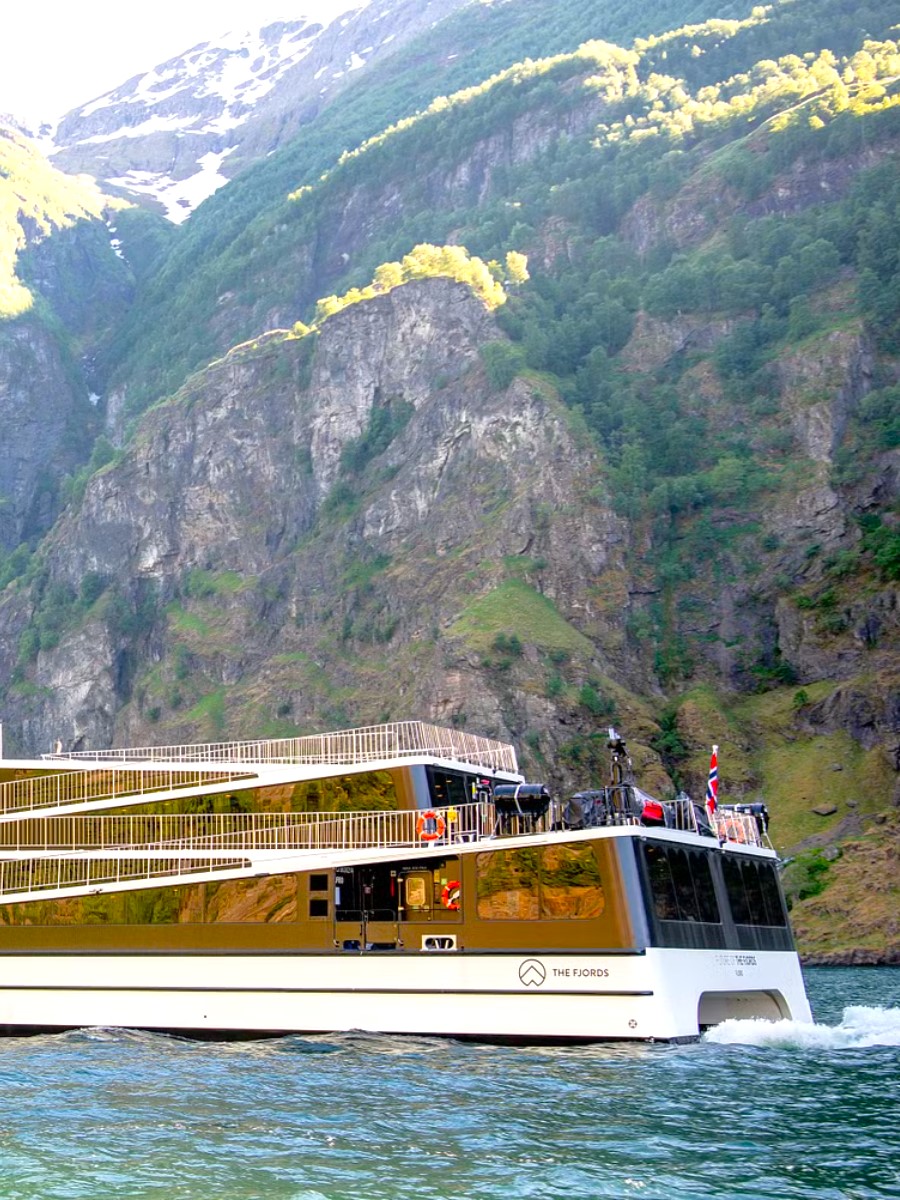
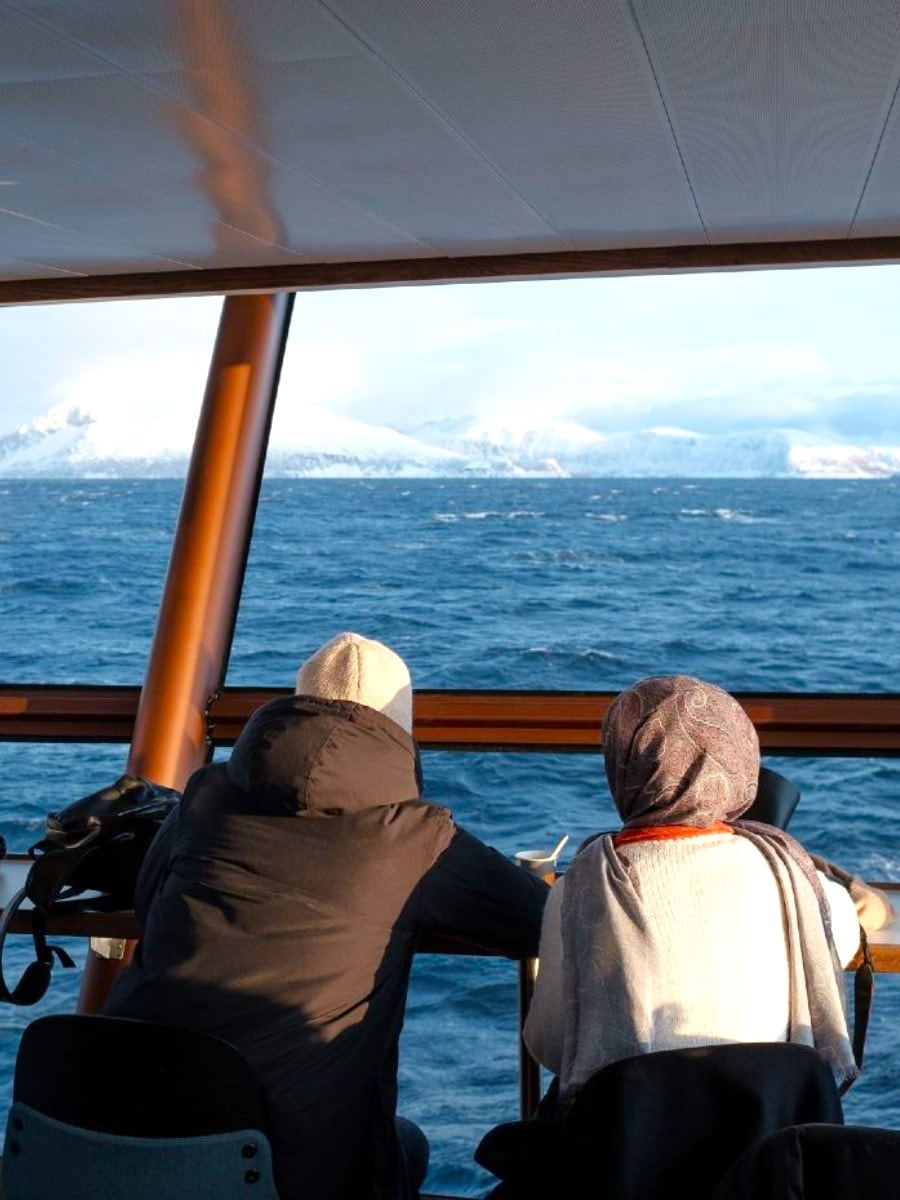
Tour details. Cruises operate from May to September, departing from Narvik harbor. The trip takes about 5 hours total (including exploration time) and costs around 850 NOK (€75) per person, including a light lunch and guided tour of the historical site.
What You’ll See at Rombaksbotn
| Remnant | Historical Significance | Current State |
|---|---|---|
| Worker Barracks | Housed hundreds of laborers | Stone foundations remain |
| Hospital Building | Treated injured workers | Partially restored |
| Railway Equipment | Used in construction | Preserved artifacts |
| Loading Dock | Supplied the settlement | Wooden remains visible |
| Cemetery | Final resting place for workers | Maintained memorial |
4. Kiruna City and Fjord Day Trip
Mining marvel. Kiruna fascinated me with its unique story—the entire city is being moved due to the expanding iron ore mine that created it. I joined a mine tour that descended into the world’s largest underground iron ore mine, learning about the engineering challenges and seeing massive machinery in action.
Scenic return. Rather than taking the train back, I opted for a bus tour that stopped at several scenic fjord viewpoints along the Norwegian-Swedish border. This route offered different perspectives than the train, with opportunities to photograph the dramatic landscapes.
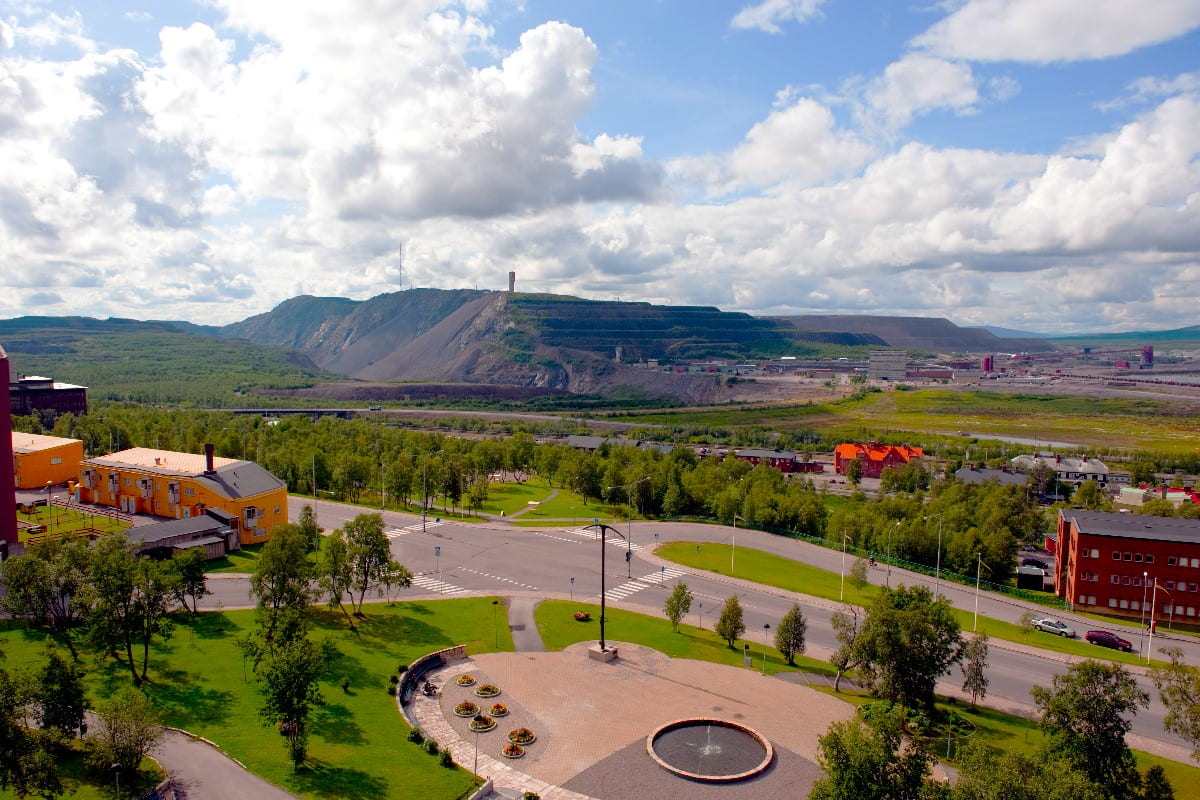
Logistics. The train to Kiruna takes about 2 hours each way (ticket: approximately 350 NOK/€31). The mine tour costs 345 SEK (€30) and should be booked in advance. For the scenic return route, several tour operators offer bus services with prices starting around 650 NOK (€57).
- LKAB Mine Tour (world’s largest underground iron ore mine)
- Kiruna Church (voted Sweden’s most beautiful building)
- City Transformation Exhibition (documenting the city’s relocation)
- Sami Cultural Center
- Scenic viewpoints along the return route
⭐ Best Activities
- Kiruna: Tour of ICEHOTEL and Jukkasjärvi – Visit the famous ICEHOTEL and the village of Jukkasjärvi on this tour from Kiruna, an excellent day trip option when staying in the Narvik region.
FAQ
How can I get to Narvik in Northern Norway?
You can reach Narvik by bus from Tromsø (approximately 9.5 hours), by train from Sweden (Stockholm to Narvik via Abisko), or by flying to Harstad/Narvik Airport which is about 1 hour from Narvik by road. The E6 highway also runs directly through Narvik if you’re traveling by car.
What outdoor activities can I enjoy around Narvik?
Narvik provides spectacular hiking trails, skiing at Narvikfjellet, snowshoeing tours with panoramic views, and fjord cruises on the Ofotfjord. In winter you can chase the Northern Lights while summer provides opportunities for midnight sun viewing and mountain biking.
What Sami cultural experiences are available near Narvik?
Narvik has deep-rooted connections with the Sami people, offering opportunities to experience traditional music performances, handicrafts, and farm visits.
What snowshoe experiences are available in winter?
Guided snowshoe treks start at Narvikfjellet cable car, ascending to 656 meters above sea level for breathtaking fjord views. The tour includes traversing snowy trails to scenic viewpoints and a stop at Narvik Mountain Lodge, with prices starting from €183 for a 3-hour experience.
Is car rental necessary to explore around Narvik?
While not essential, a rental car provides flexibility to visit attractions like Polar Park, explore scenic fjord routes, and take day trips to Sweden. Public transportation options include buses connecting Narvik to other regional hubs in Northern Norway and trains to Swedish destinations.
What Swedish destinations can I visit from Narvik?
Abisko National Park is just a 1-hour train ride away, offering hiking trails, the Aurora Sky Station, and the starting point of the famous Kungsleden trail. Kiruna, Sweden’s northernmost city, is accessible by a 2.5-hour train journey and features the world’s largest underground iron ore mine.
How sustainable is tourism in Narvik?
Narvik has achieved the Sustainable Destination certification, demonstrating its commitment to systematically reduce tourism’s negative effects while strengthening positive impacts. Though this doesn’t mean the destination is fully sustainable, it shows dedication to responsible tourism practices.
